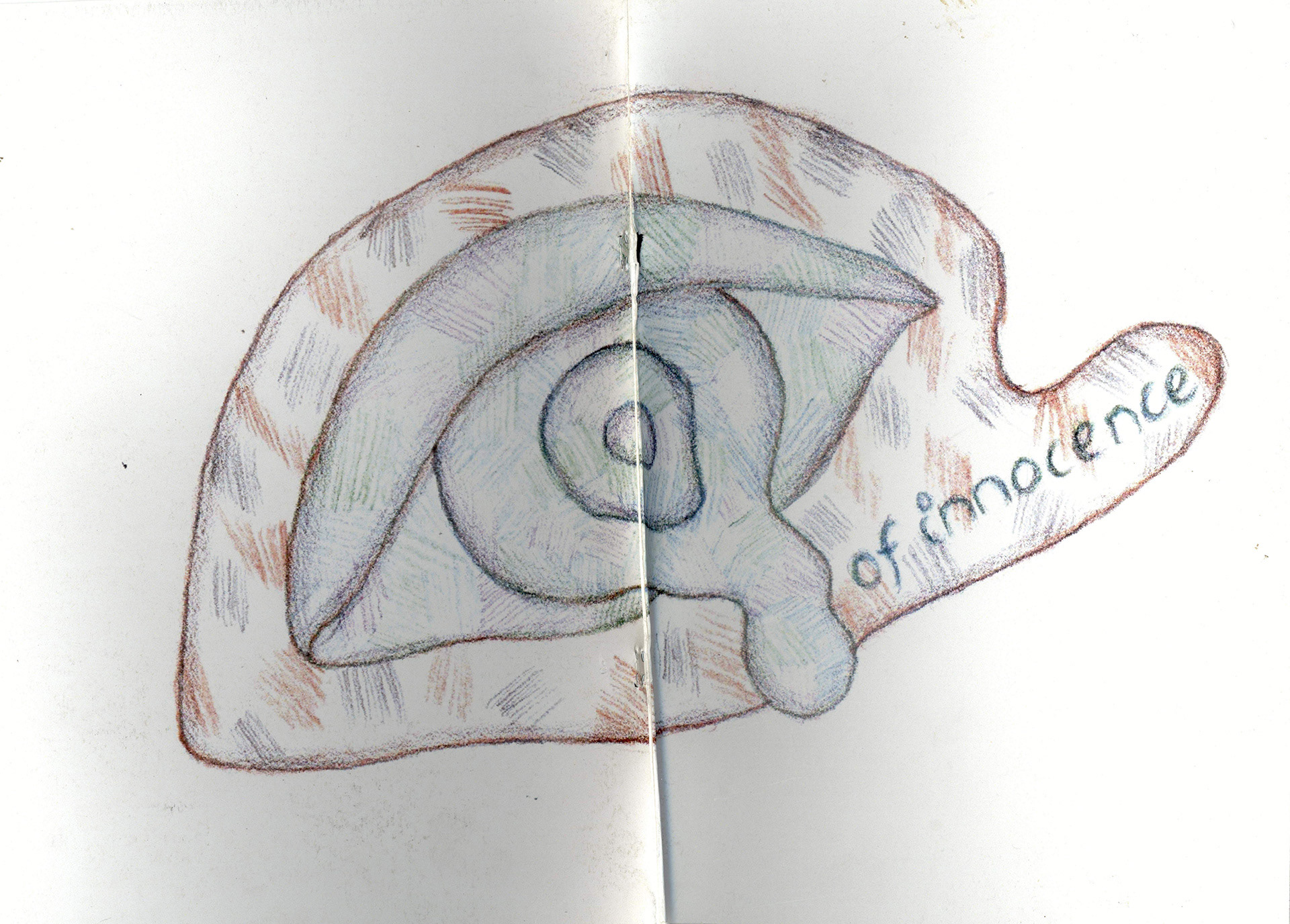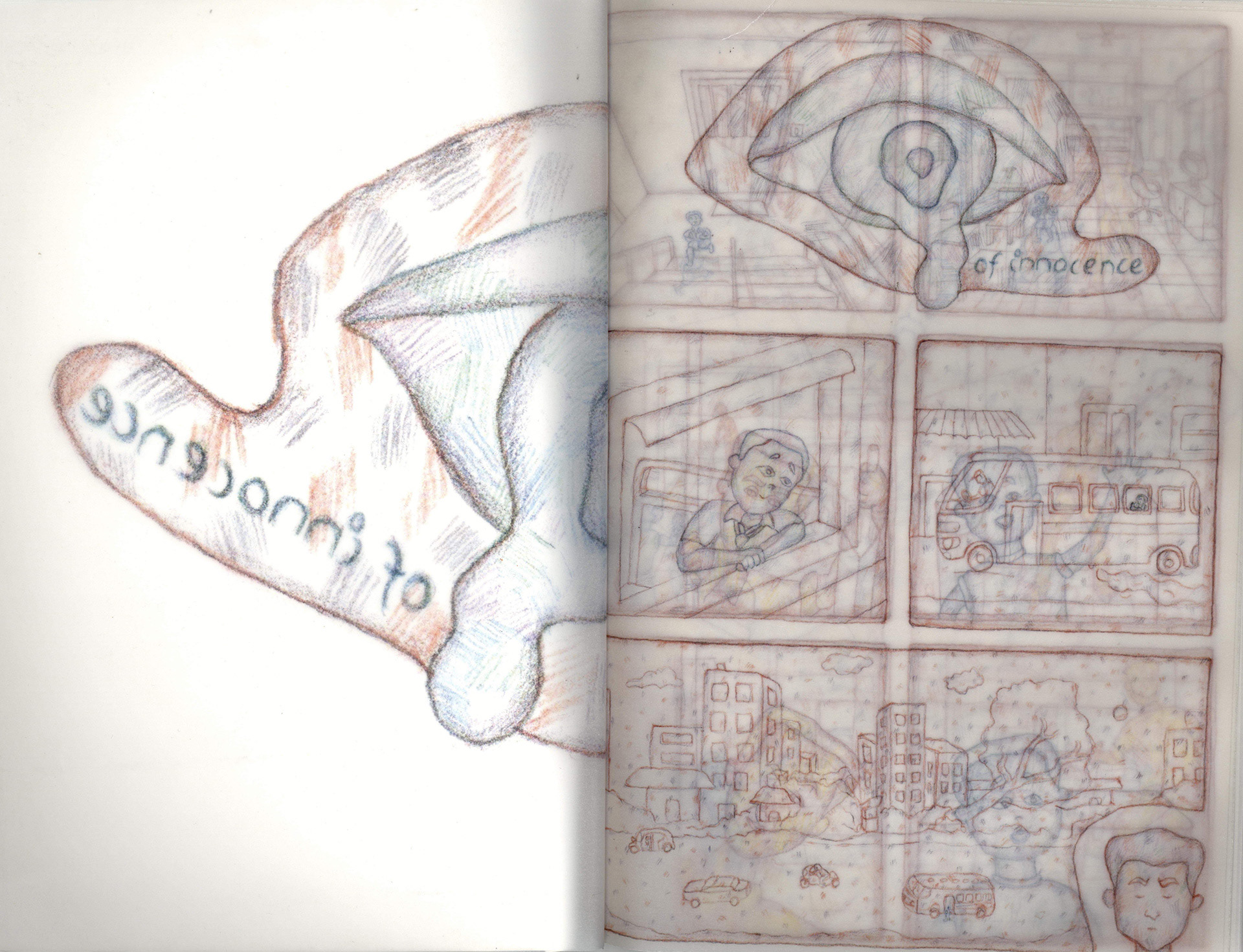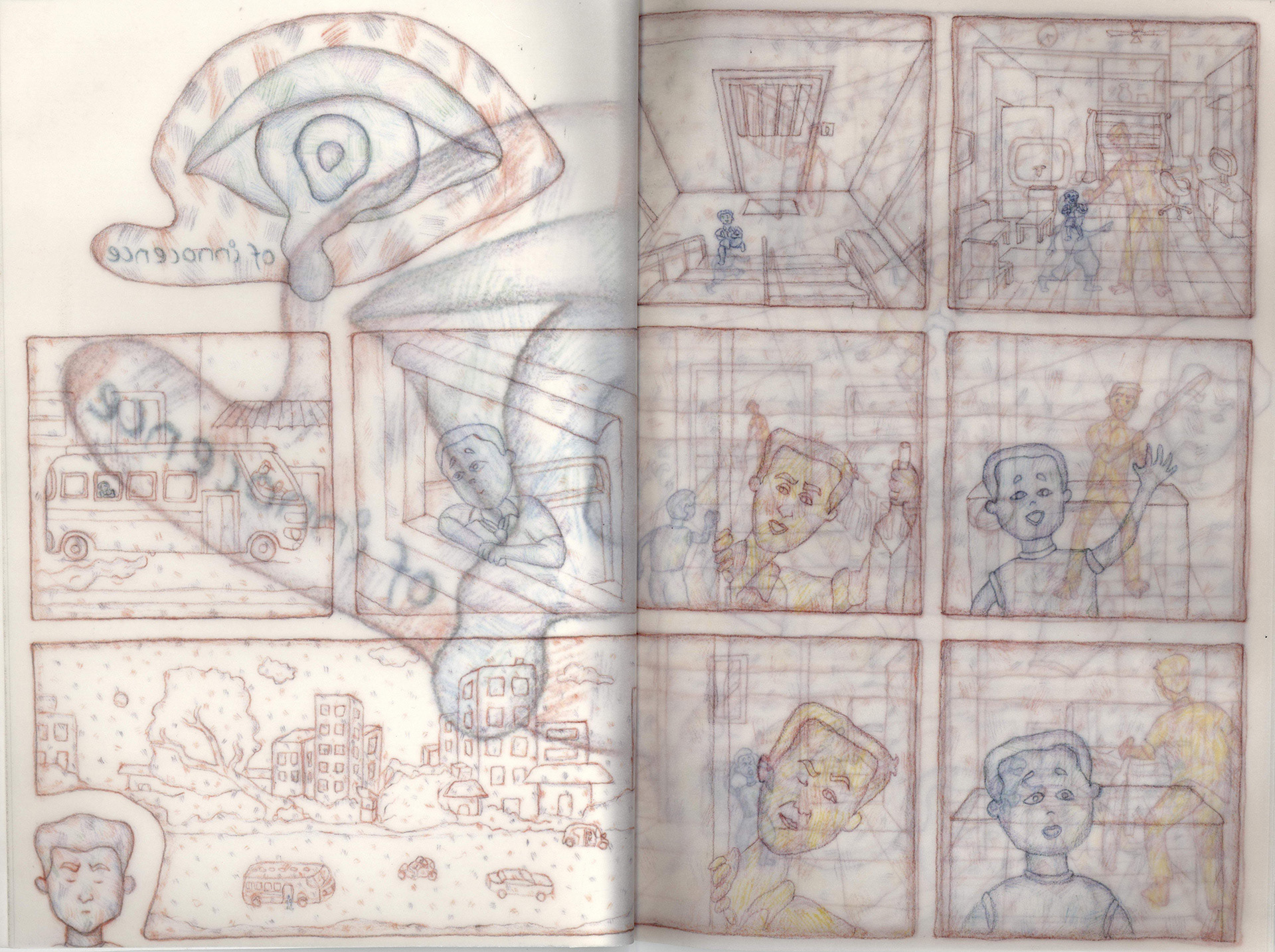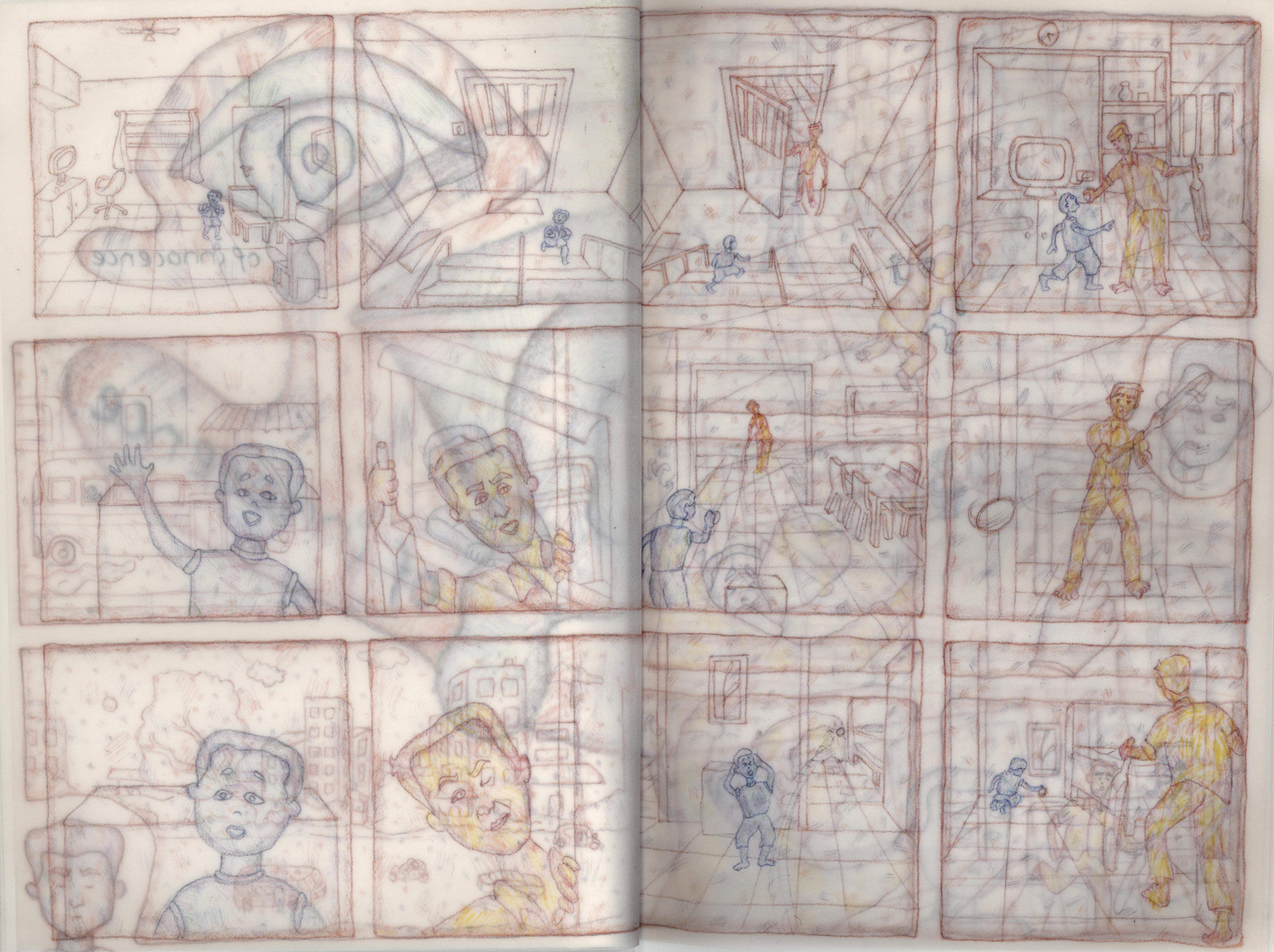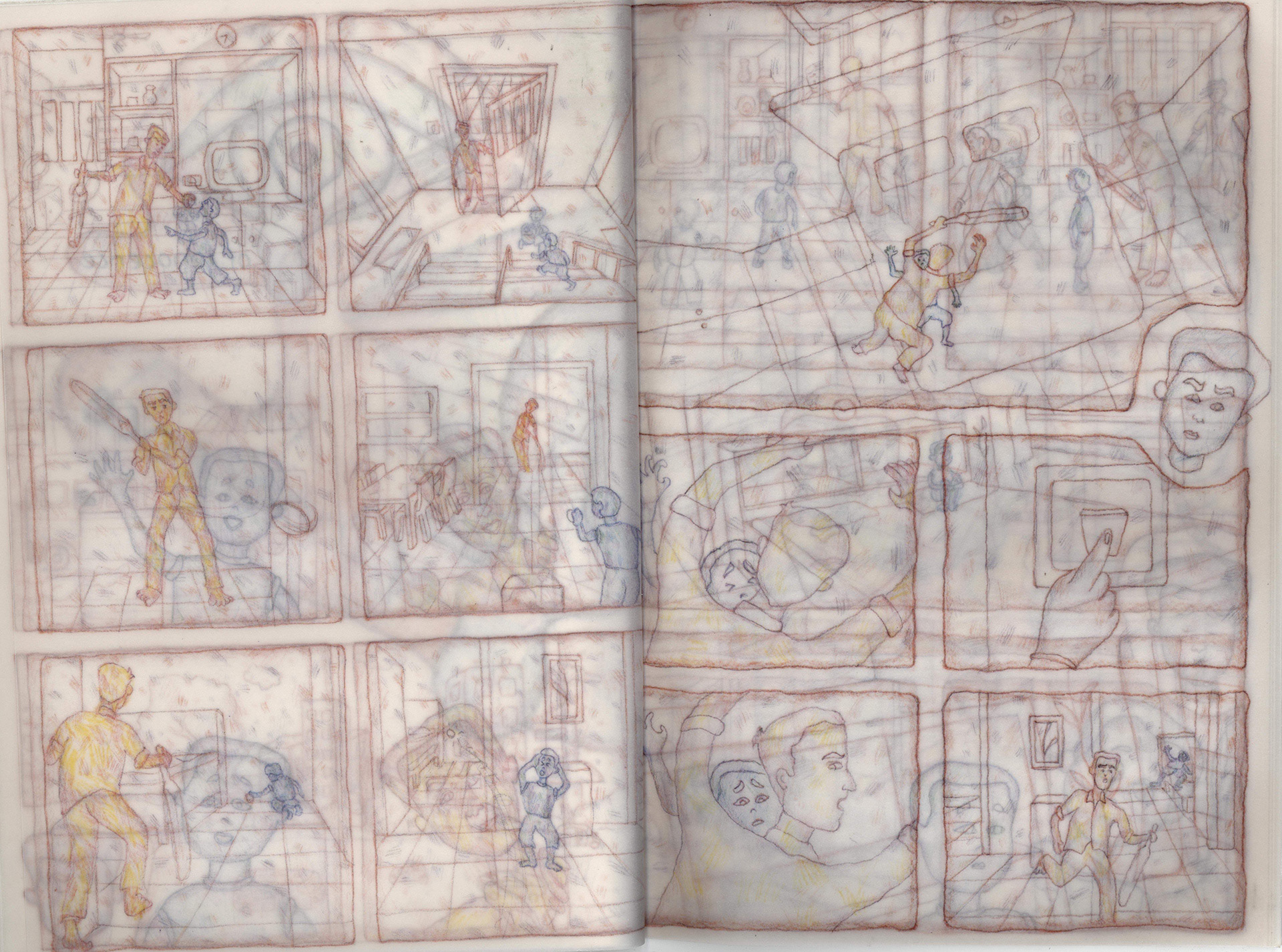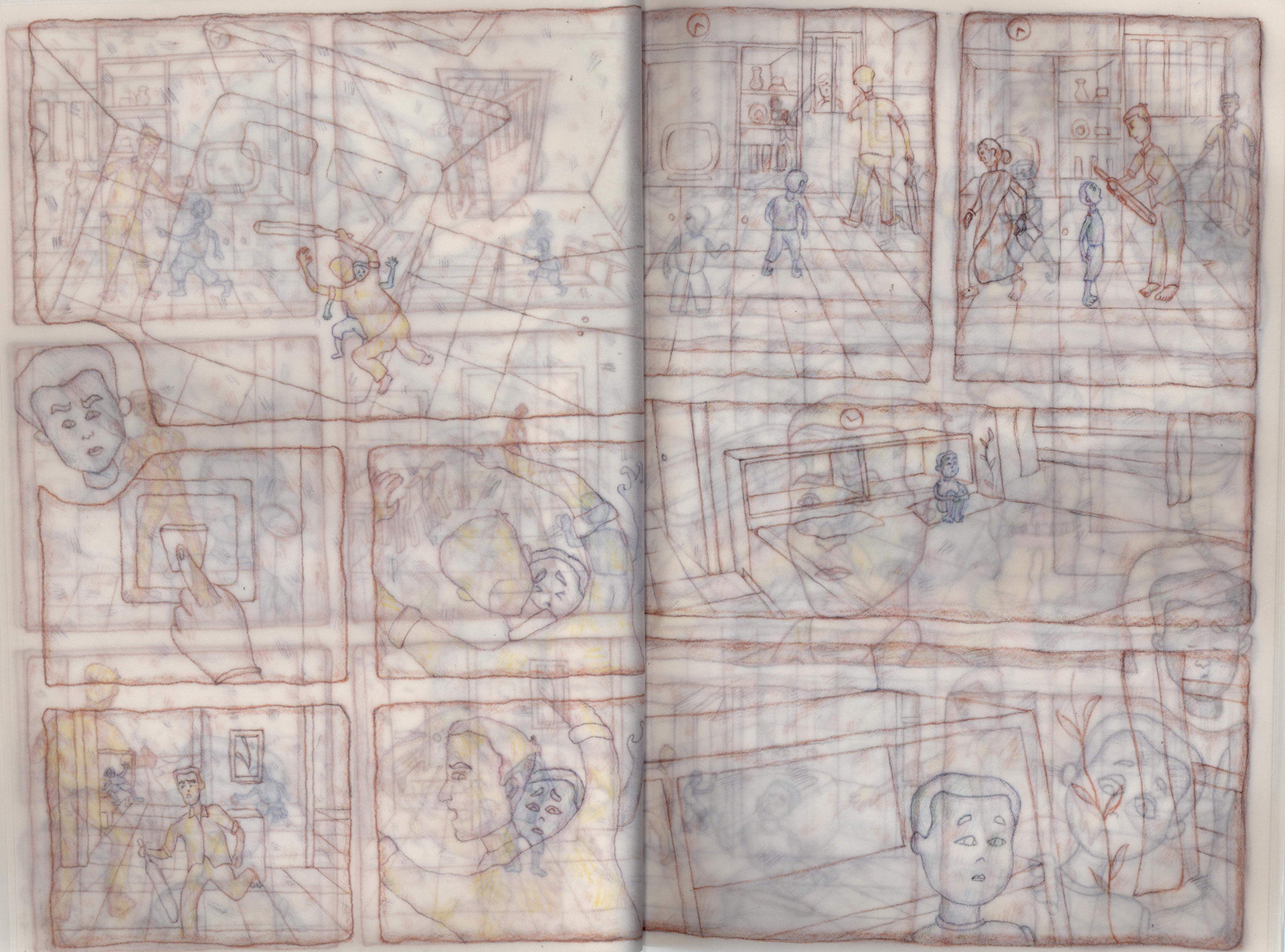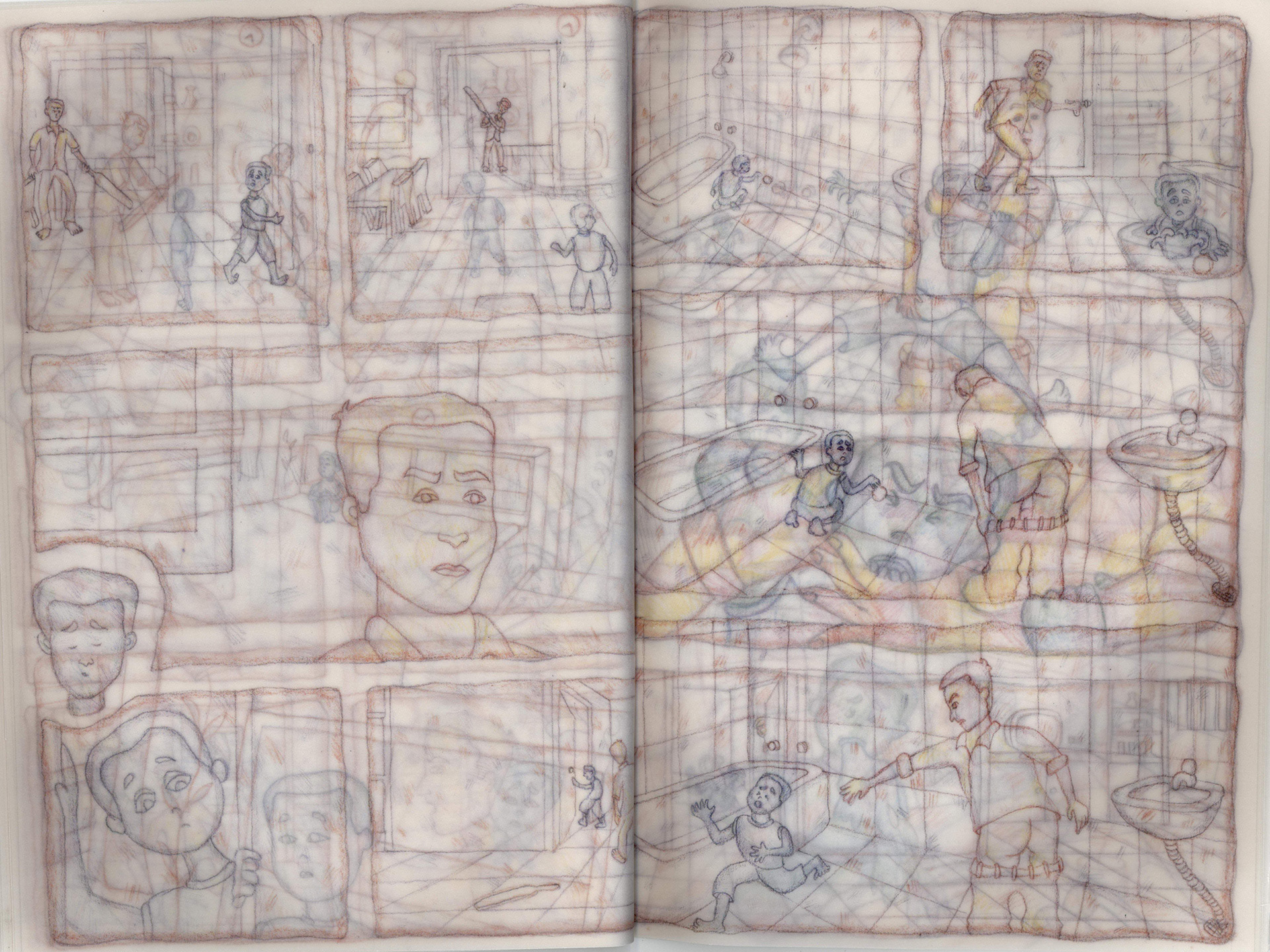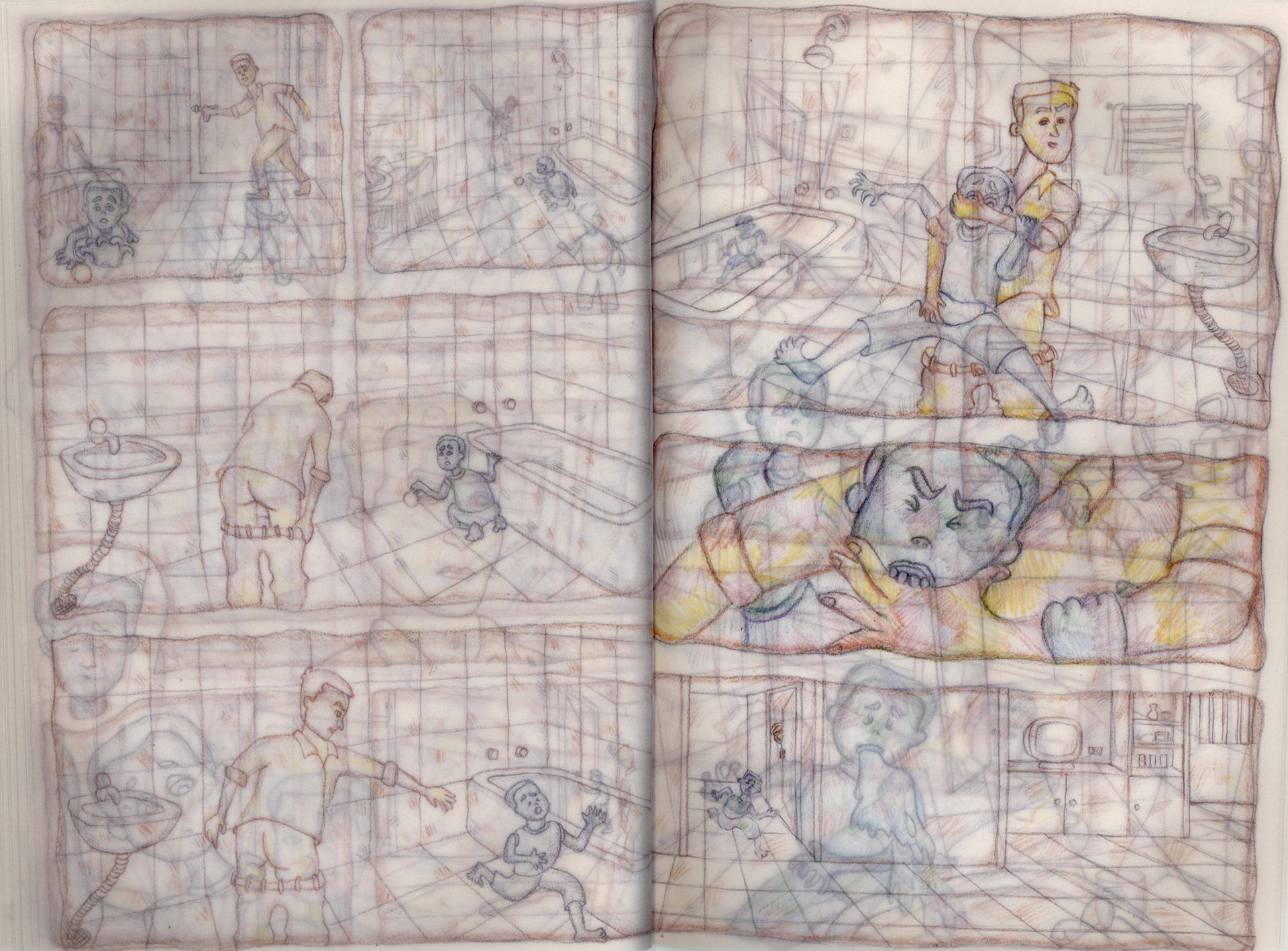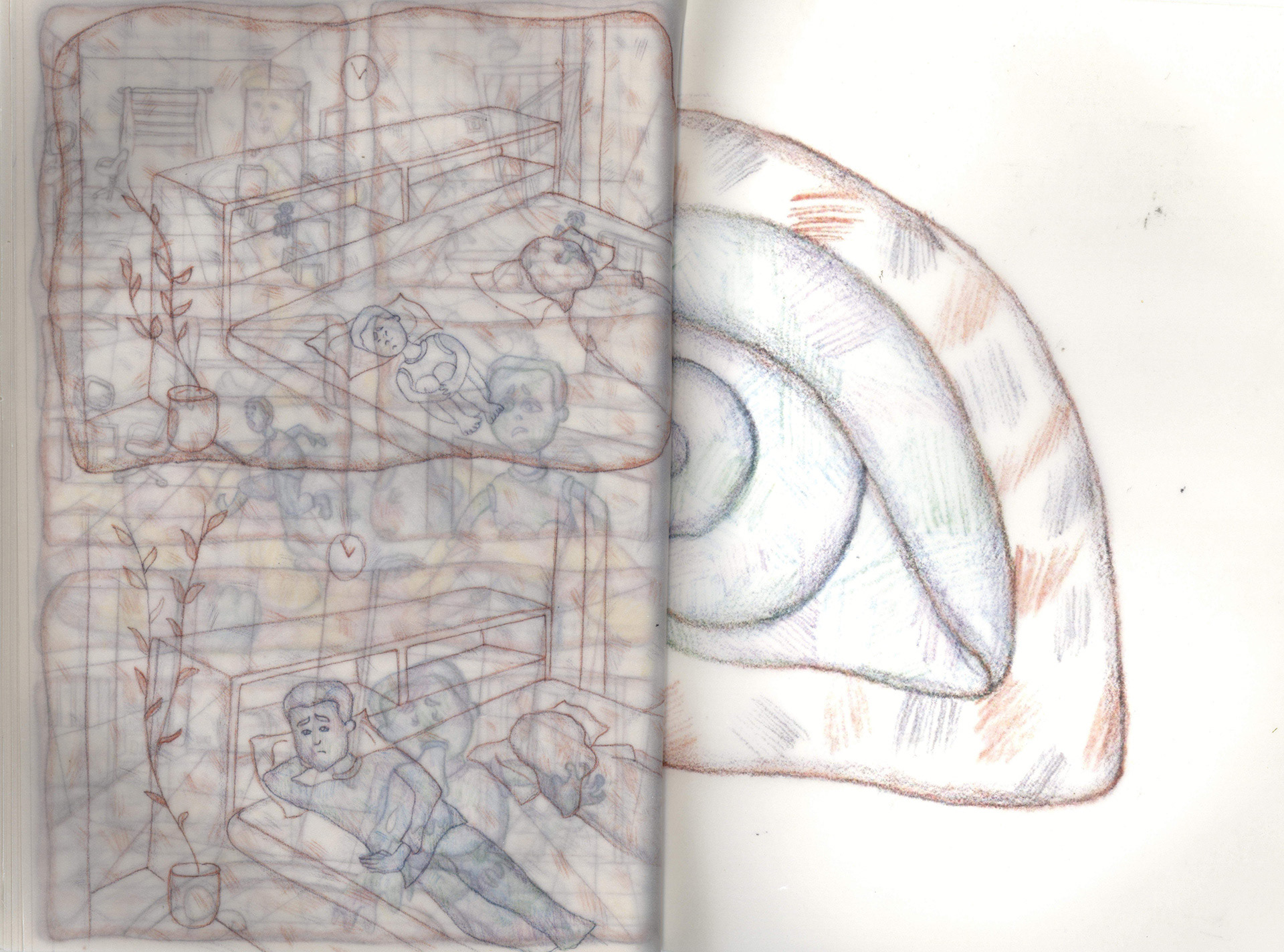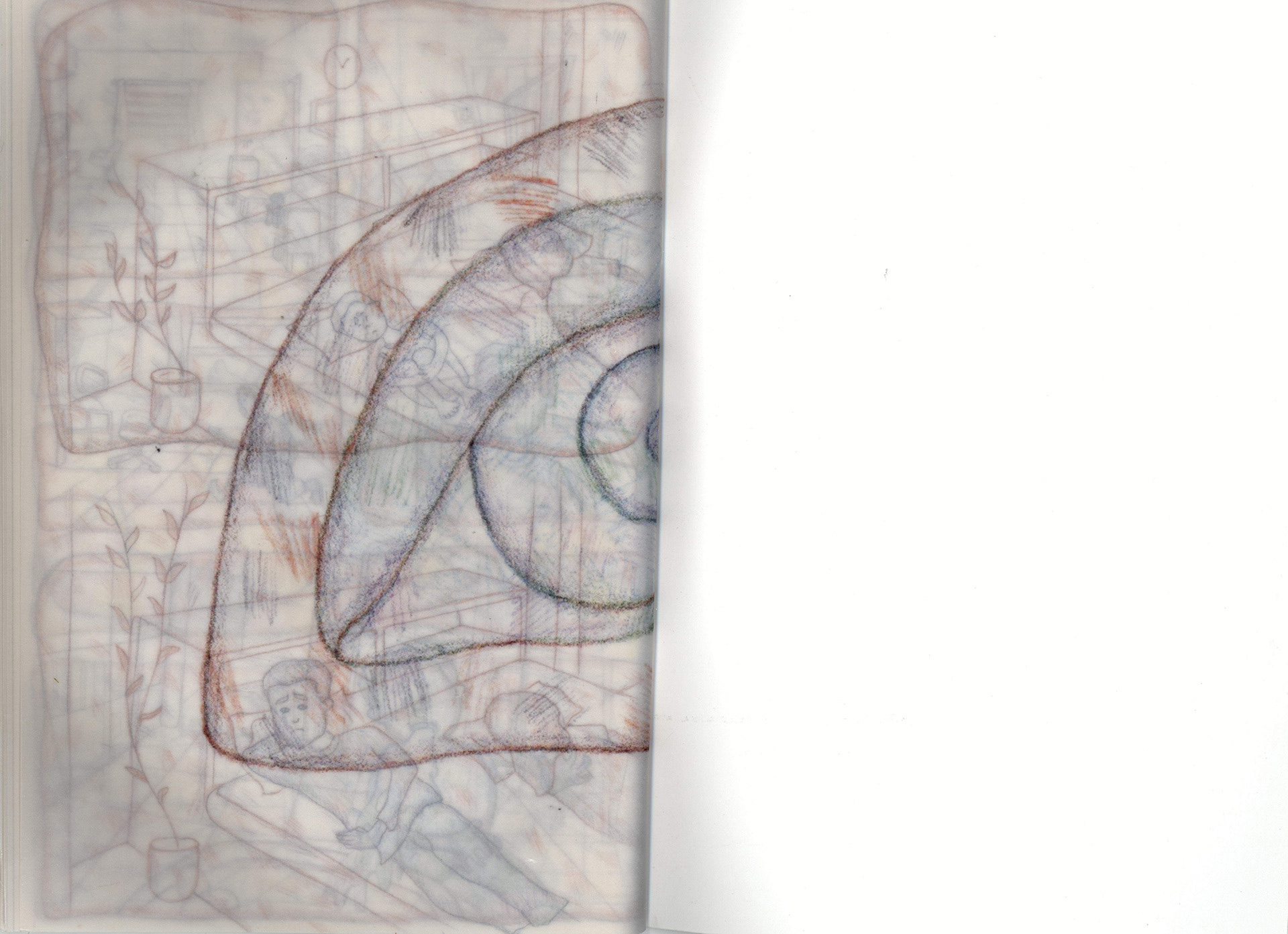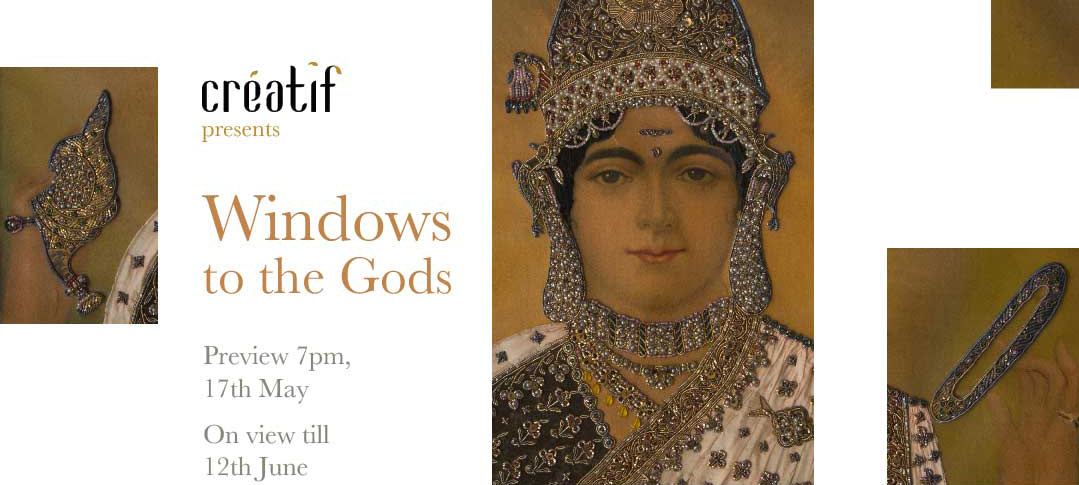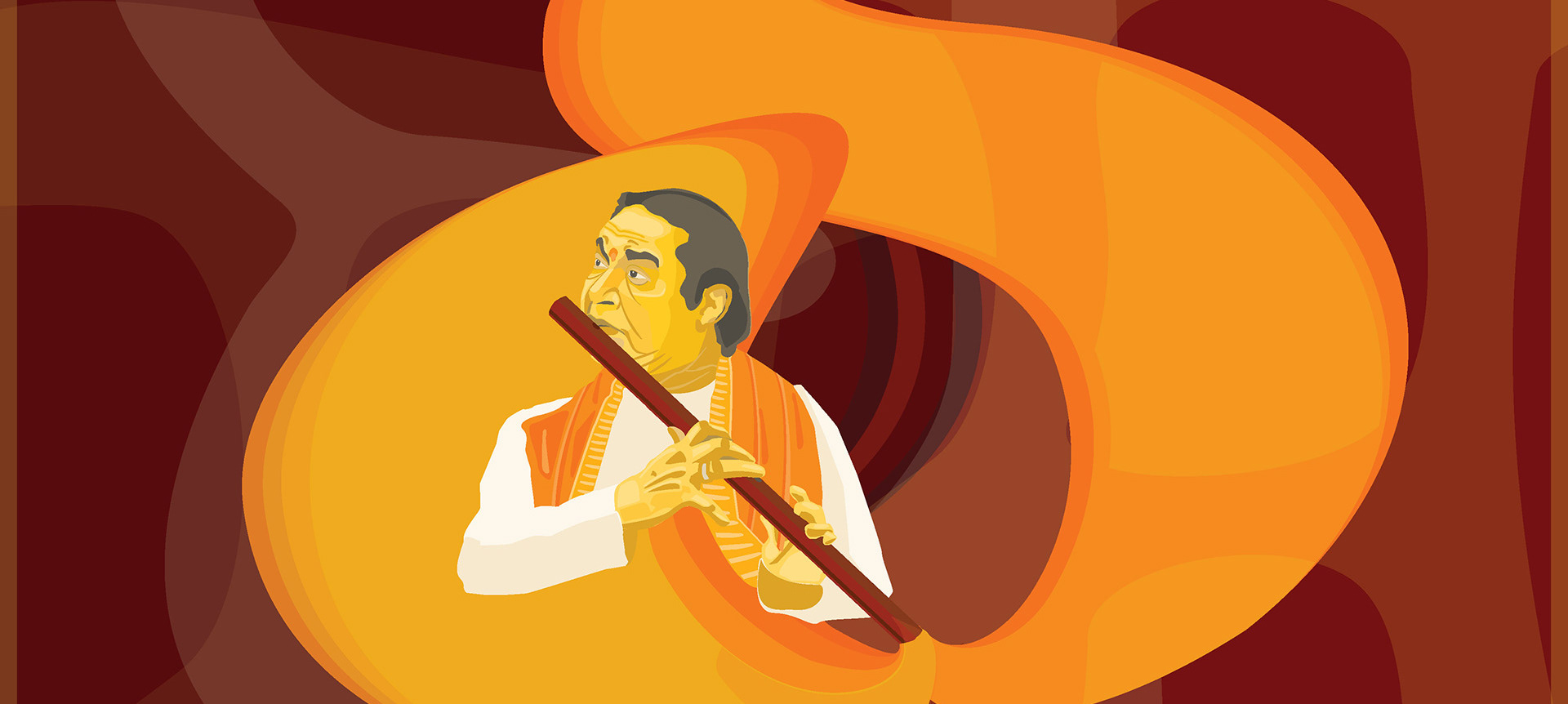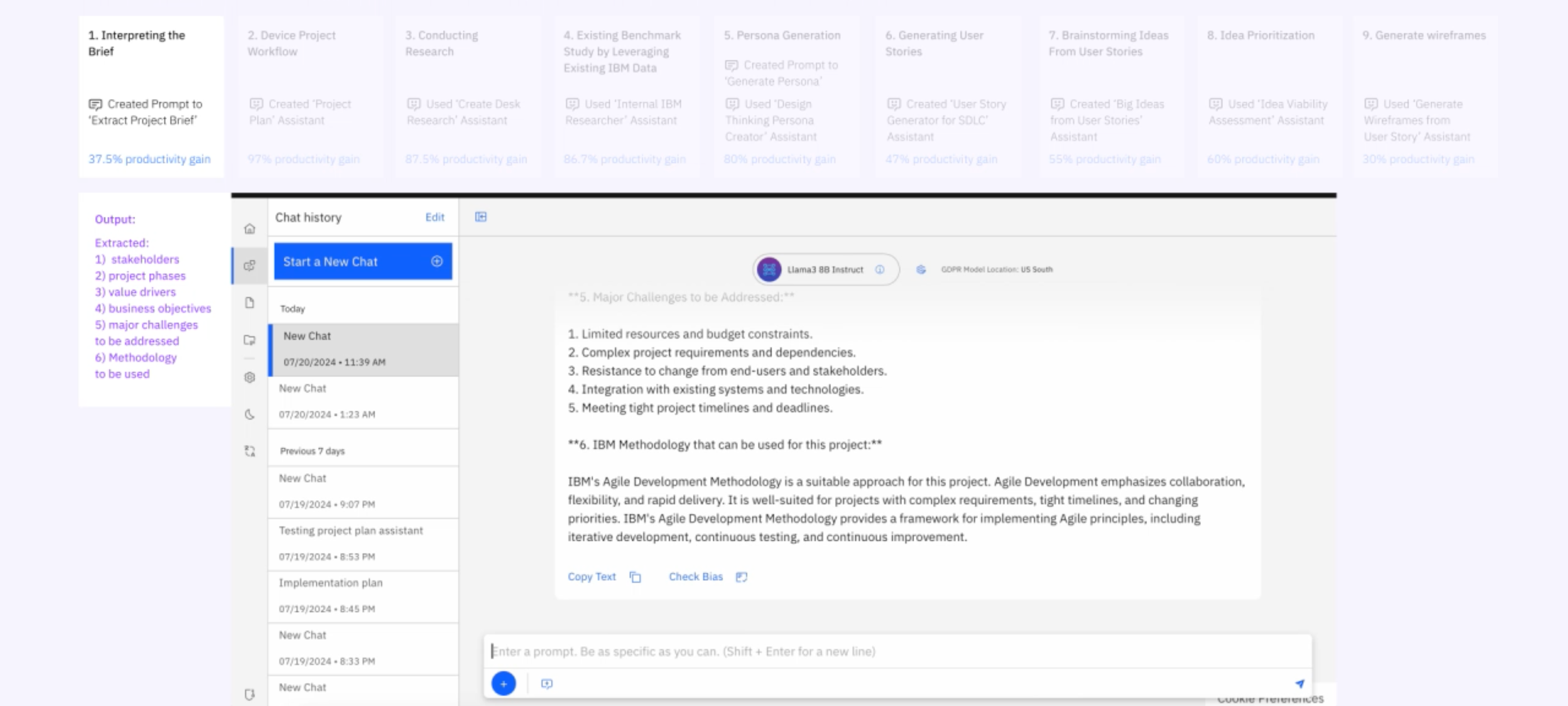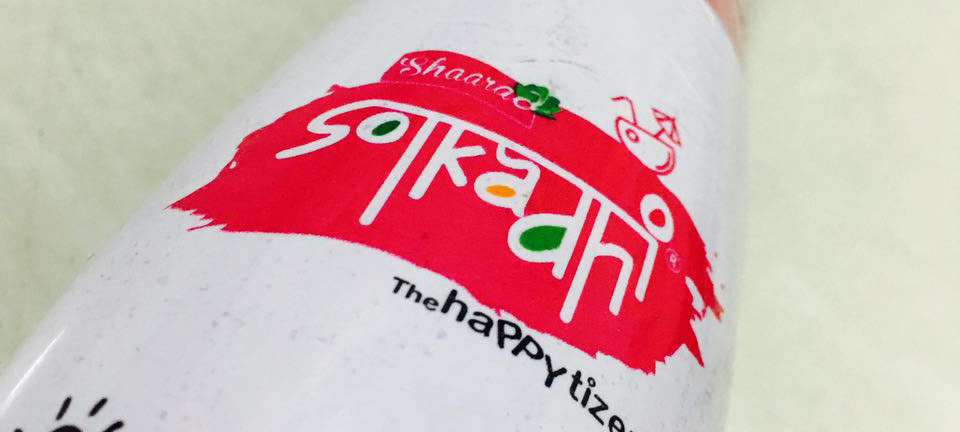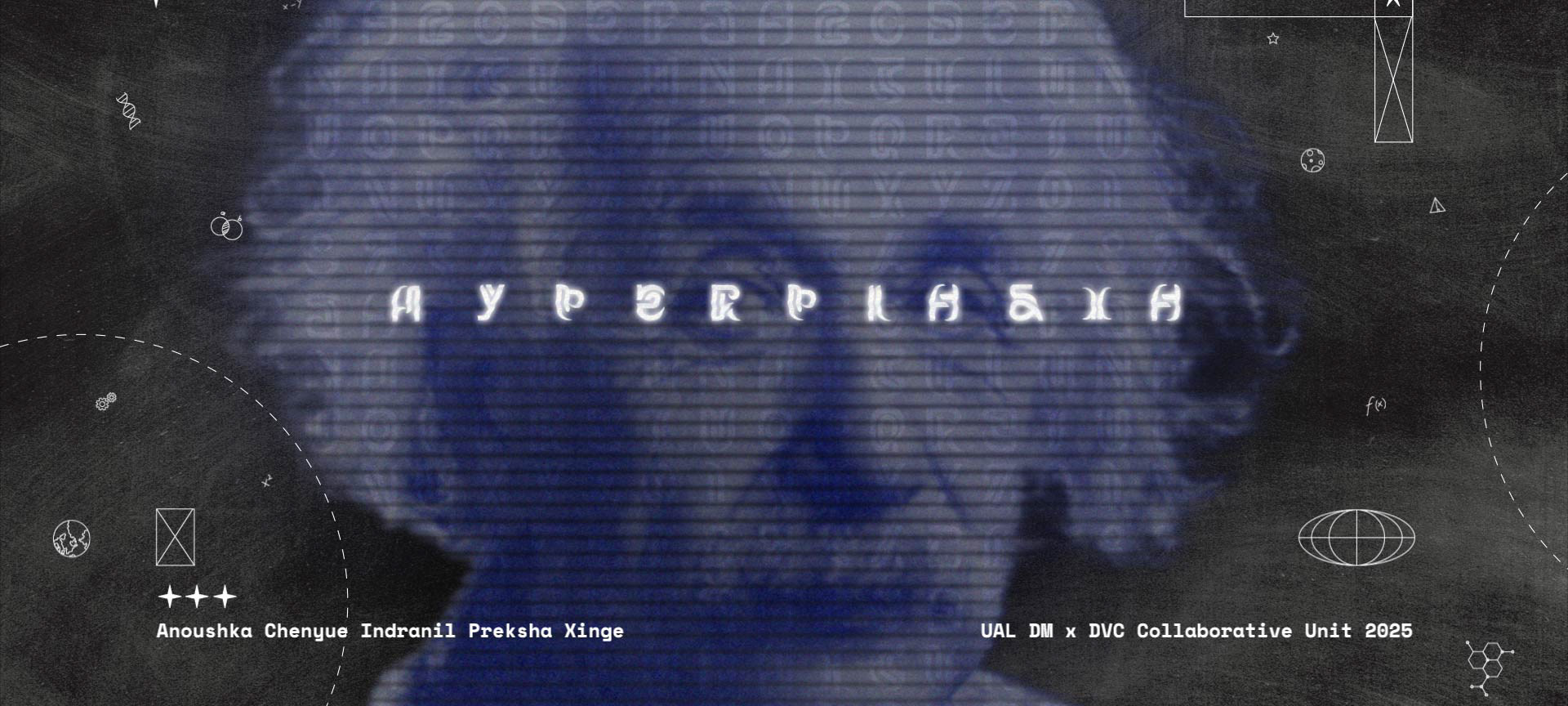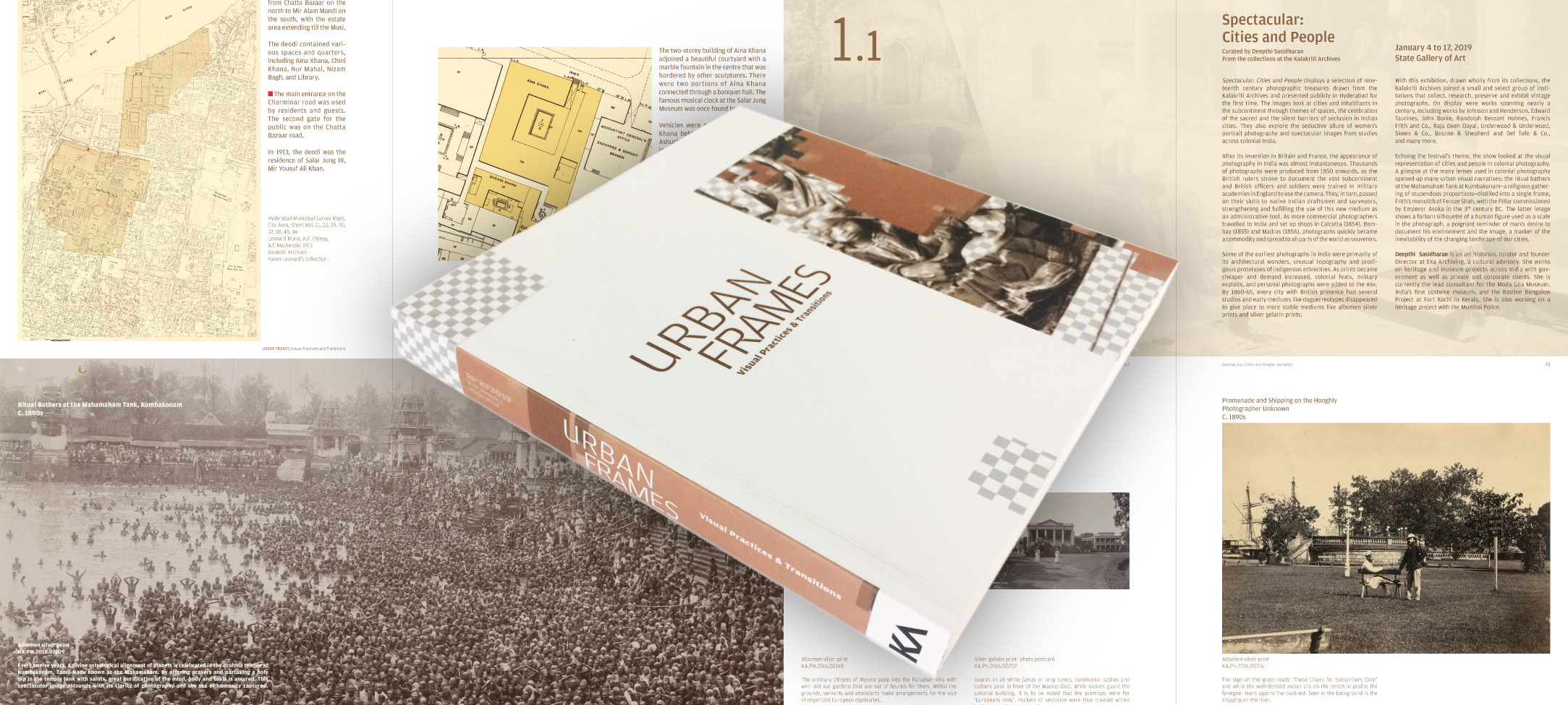The above animation is the climax of the film. For the complete story, scroll down to the Graphic Novel below on this page.
VISUAL TREATMENT
The visuals represent how the boy's current-self recalls the incident happened in his childhood.
A mid-way had to be found between the visuals being just a personal artistic representation of a memory; and being expressive enough to narrate and tell the story.
COLOUR
Vibrance and dulness were integral aspects of the film to highlight the incident and to portray visually what such a memory may look like. This was expressed by the colour schemes used for the characters and their surroundings and backgrounds.
Two vibrant and contrasting colours are used for the characters that differentiates their personalities.
The Background is kept dull to make it un-relatable to the look of characters and thus highlight the characters.
FORM
The forms do not have a clear outline, as the boy does not want to recall the incident, but cannot help getting striked by the memories again and again.
The characters are translucent, which translates their character of being 'vulnerable' into a visual form.
Use of Phallic SYMBOLS-
Certain objects like the 'cricket bat', 'window handle', 'tap' are used as phallic symbols, mainly as this is the memory of a boy recalling the abuse incident.
They also act as expressive metaphors and foreshadowing elements.
ANIMATION
Subtle movements are used as it depicts the nature of the memory.
Scratches are used as an eerie element. They are present on the characters according to their respective colour schemes and on the background The flickering motion of the scratches changes as per the happenings in the film. It becomes faster during the climax and back to normal during resolution part of the film.
Sound design
NON-DIEGETIC SOUND—The music
Instruments used are 'harmonium' and 'bansuri'.
Harmonium represents the abuser’s perspective, while the bansuri represents the child’s. Both of these progress throughout the film until the abuse happens. After the abuse, the resolution part has just the flute, while the child vomits and transitions into his current self.
Harmonium notes denote aggression and are overpowering, pressurising and suppressing the notes of the flute.
Bansuri sounds innocent and soothing. Because this incident, when the child thinks about it now, along with it being disturbing, he sees it as a thing that taught him a lesson in life.
DIEGETIC Sound
The dialogues are absent. This represents the helplessness and the silence of the child as he is not able to digest or express the incident.
The only diegetic sounds used are of the objects around and interacted with, such as the 'door creak', 'door slam', 'water drops' and the room tone.
Mise-en-scène
Shot 1
The shadow covers one eye of the abuser and not the other. This represents the transition of character’s personality, from a fake behaviour of the abuser in front of the child, to the abuser.
The switch is also a symbol for transition due to its very function which is switching on and off.
The ‘on’ state of the switch represents that the abuser is sexually turned on.
Shot 2
There are two leaves that fall slowly on the window pane. This translates the motion and mood of the film which is still constant and slow.
Right after this, the abuser goes inside and slams the door by closing it which suddenly make the leaves fall down from the window pane. This gives a jerk to the progression of the film and foreshadows that something uncertain will happen with the innocent. The delicate and light 'leaf' here symbolises innocence.
The frame is composed in a way that the right hand of the abuser is right below the window handle which is again a phallic symbol. This too foreshadows what may happen next.
Shot 3
As the child goes to take the ball that goes under the sink, the shadow of the child falls on the ball, while the shadow of the abuser falls on the child. This foreshadows that the child is going to be in control of the abuser, as the ball is in, of the child.
Shot 4
The abuse; shown as a still with no animation, to depict the reluctance of the boy in recalling the incident but yet getting a vibrant visual.
Shot 5
However, the scratches continue the flickering motion, which is the fastest in this section of the film.
Shot 6a
The tap and water dripping from it is a depiction of the abuser's penis and the semen dripping from the penis. The child is placed right in front of it when he vomits.
Shot 6b
The child is shown growing up in every 'in-between' frames, making it a time-lapse.
Shot 6c
The transition animation slowly reveals the current situation of the boy which reveals that it is not very distinct from the surrounding that he thinks of.
Shot 7
Last Shot shows the current location, atmosphere and surroundings of the boy recalling the incident.
Character Design
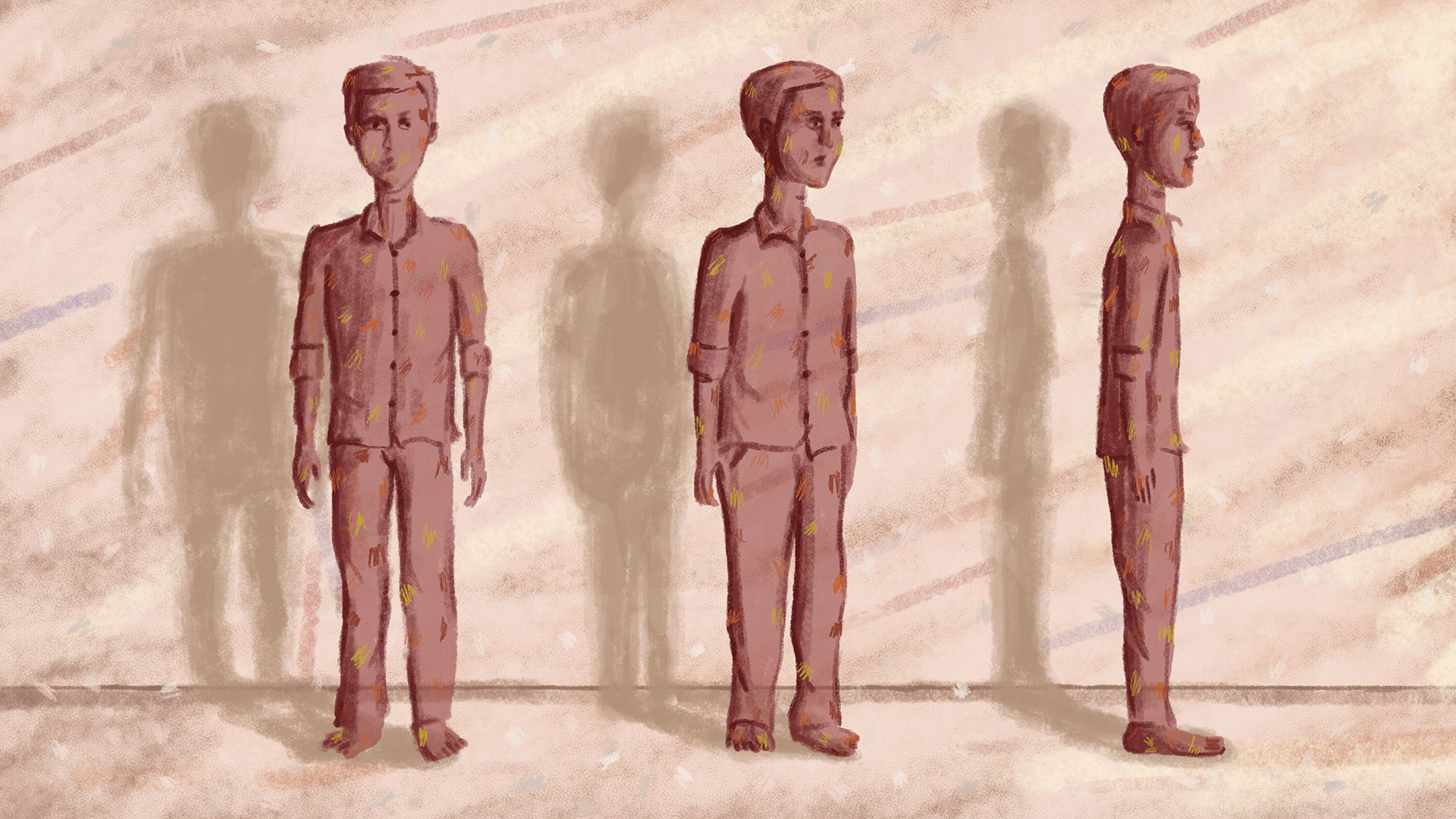
Abuser
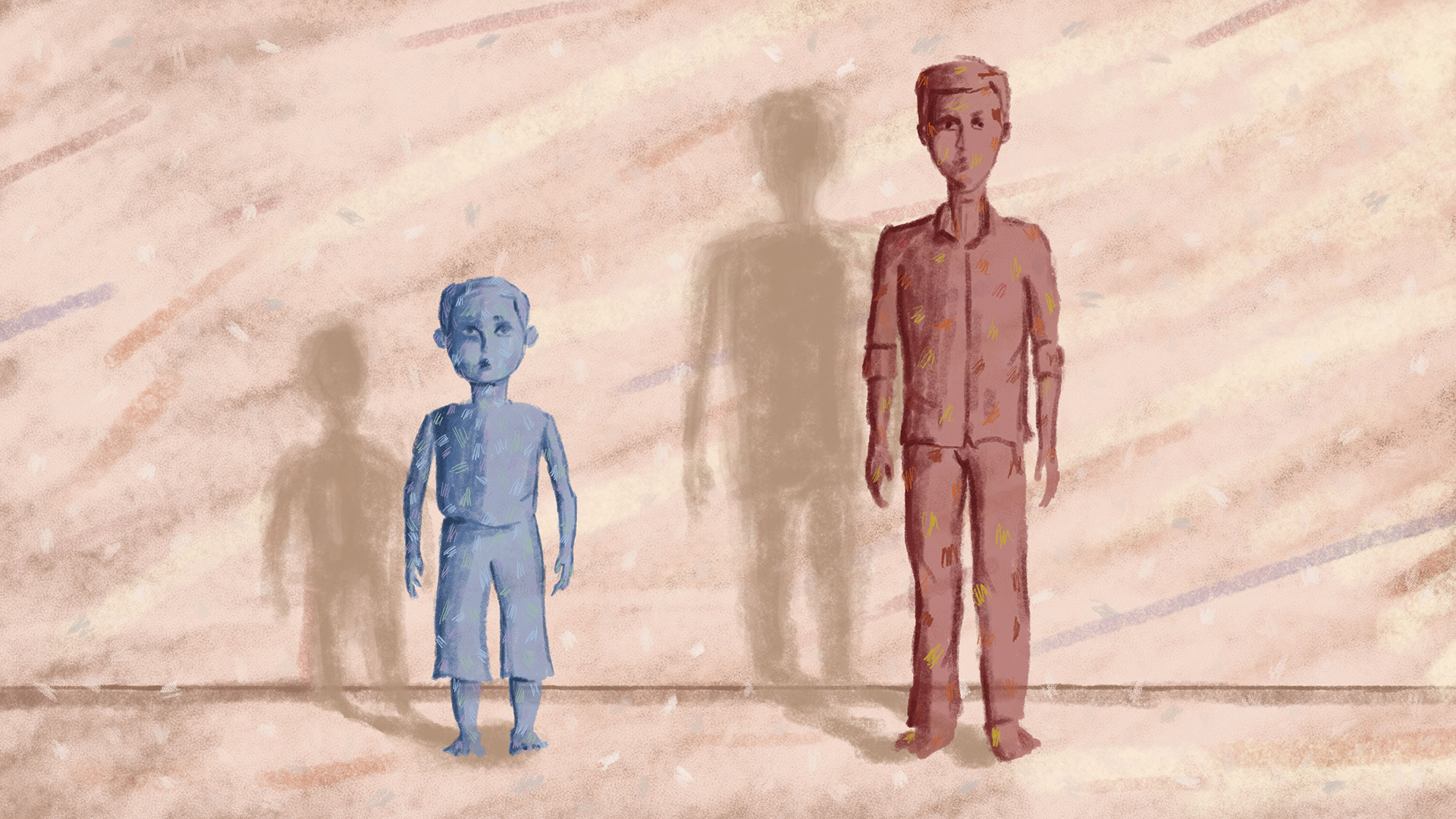
Character lineup
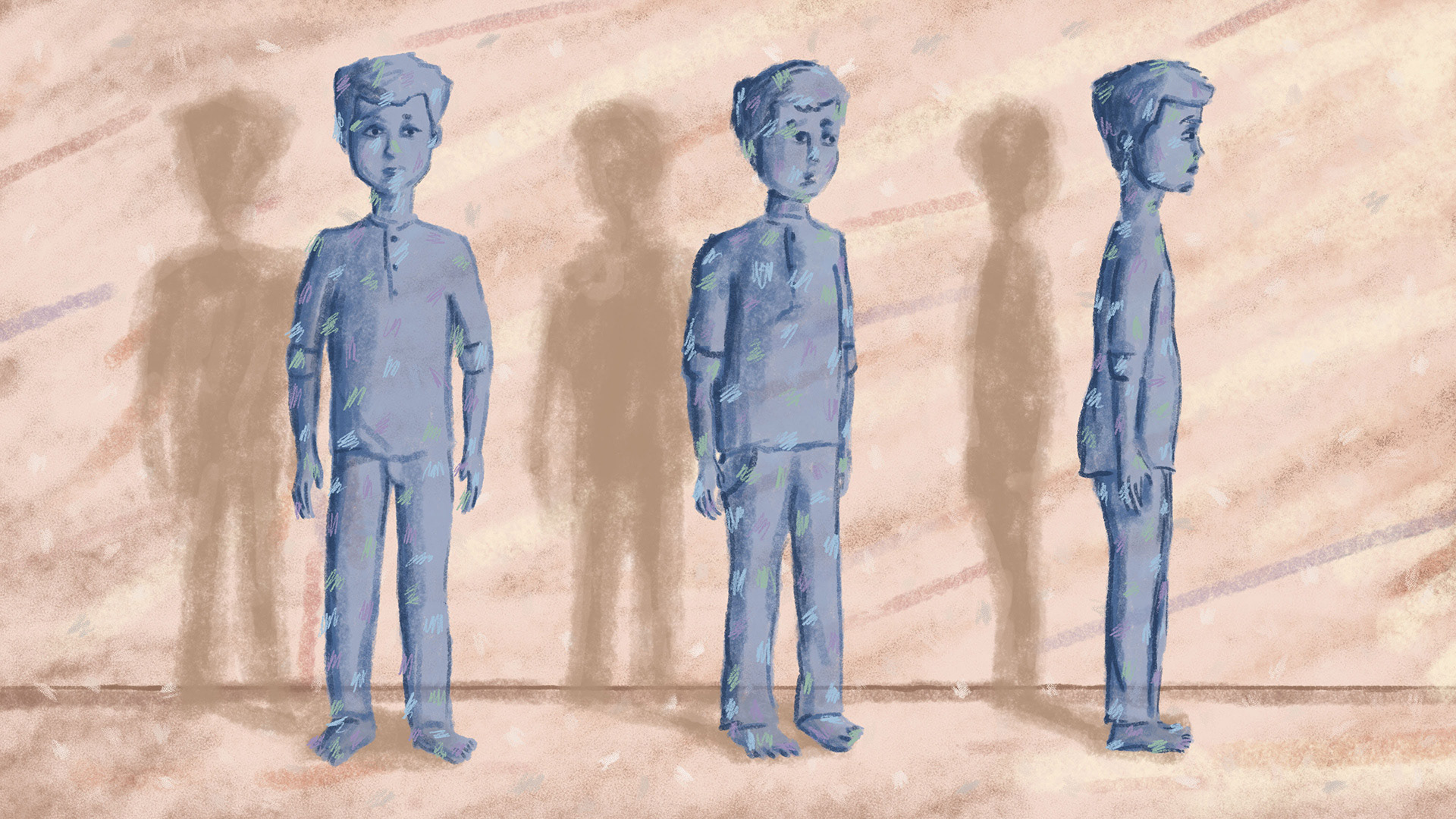
Victim today (when he thinks about the abuse)
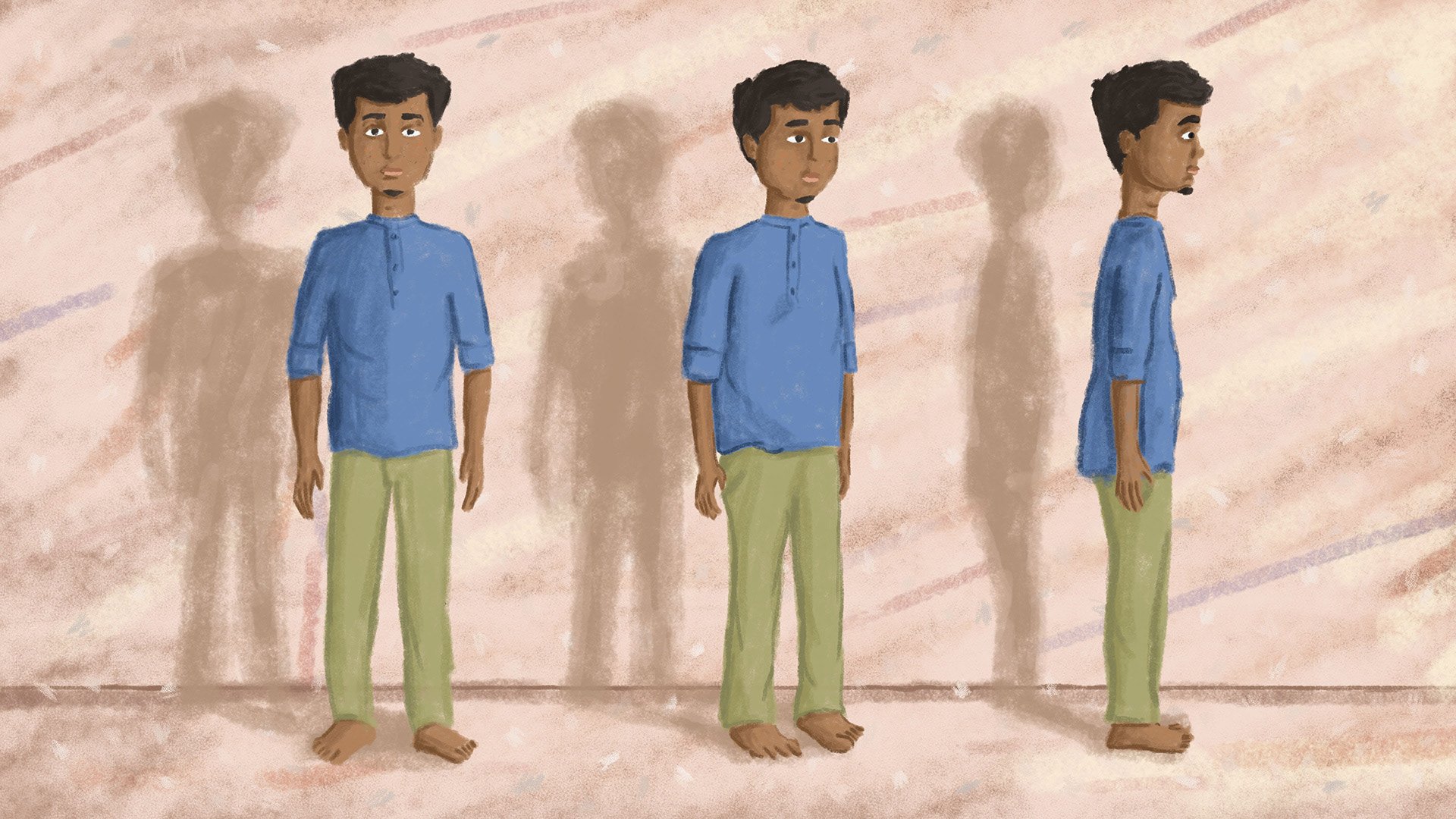
Victim today
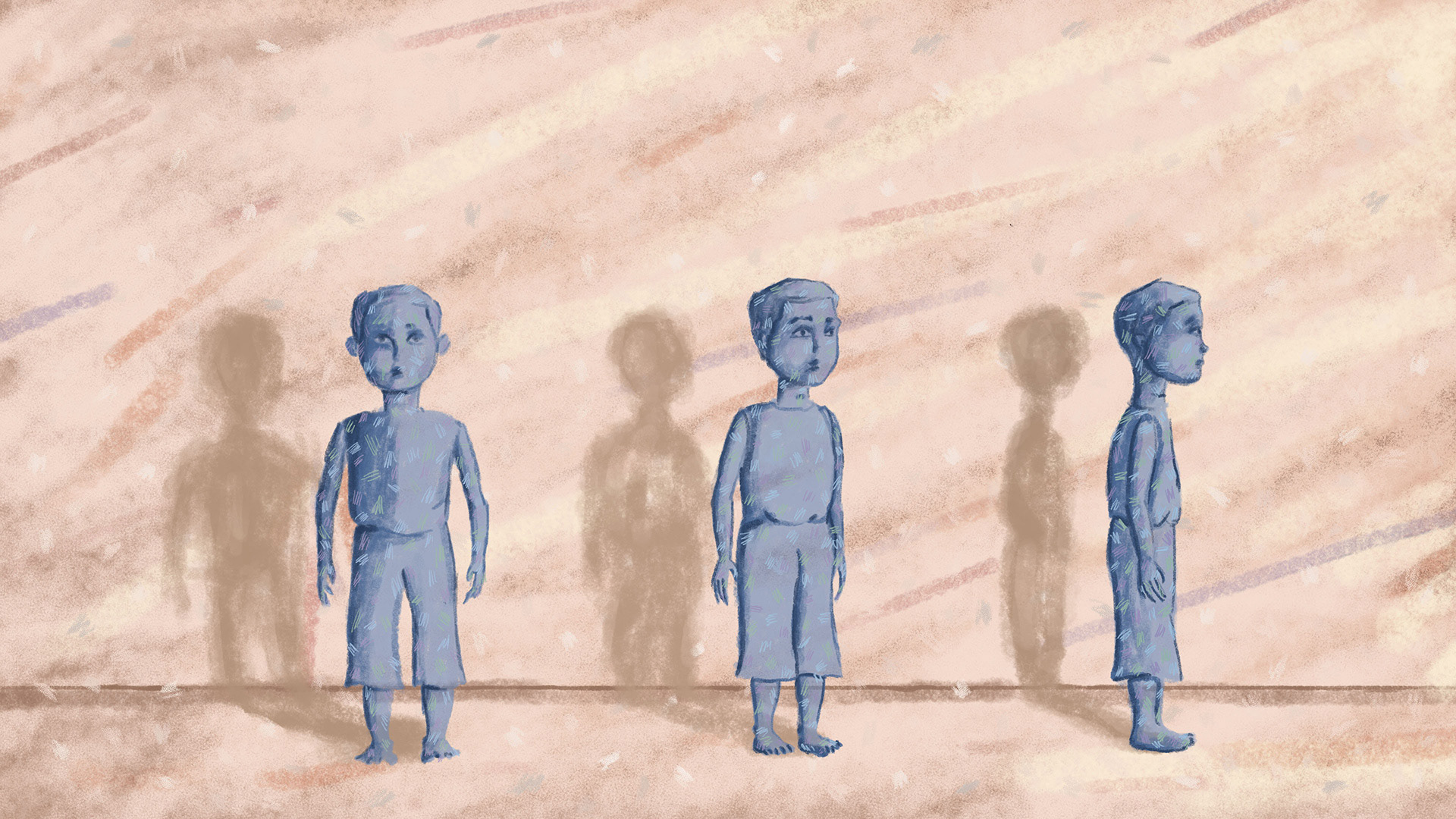
Victim at the time of abuse
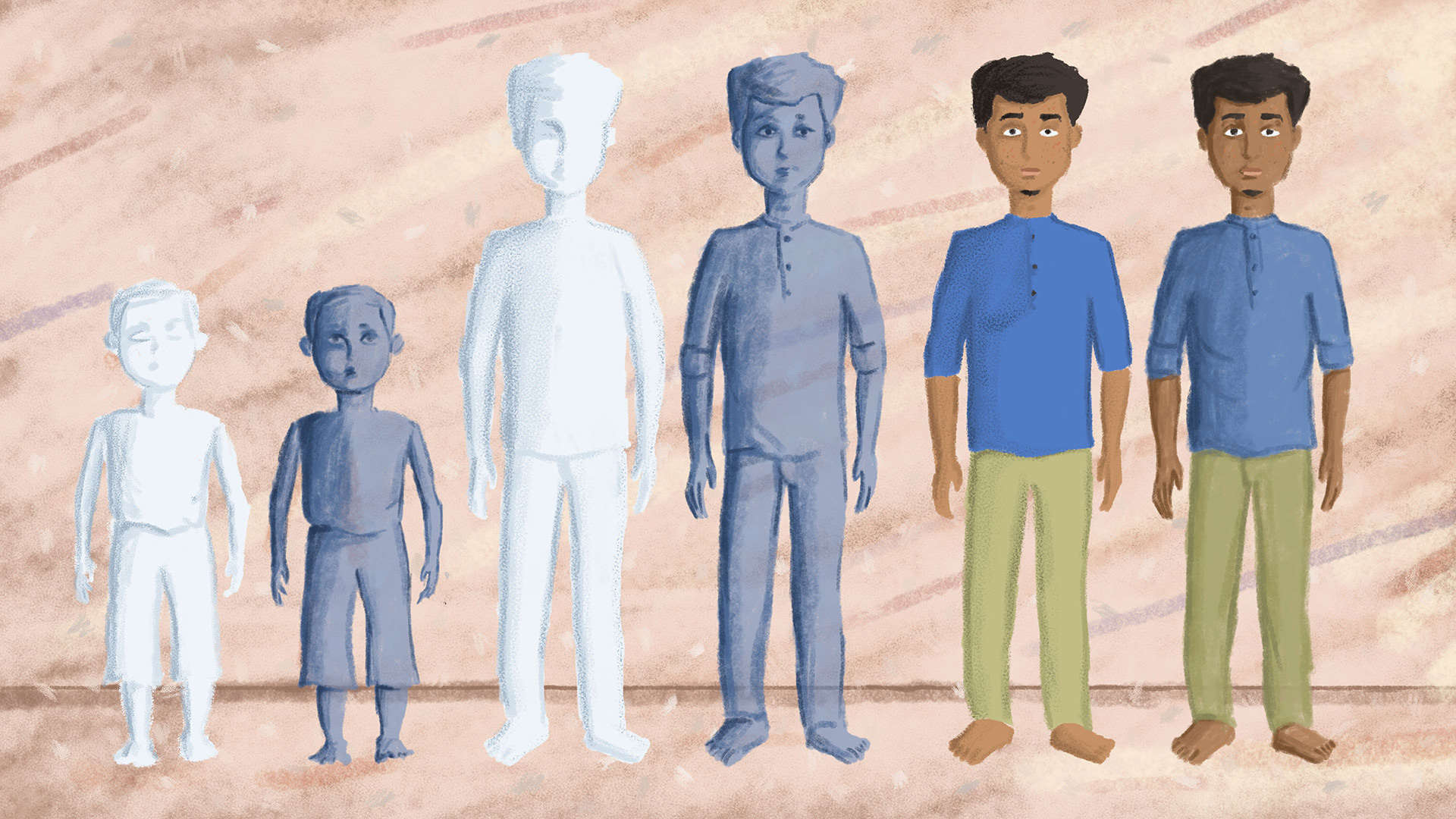
Treatment iterations
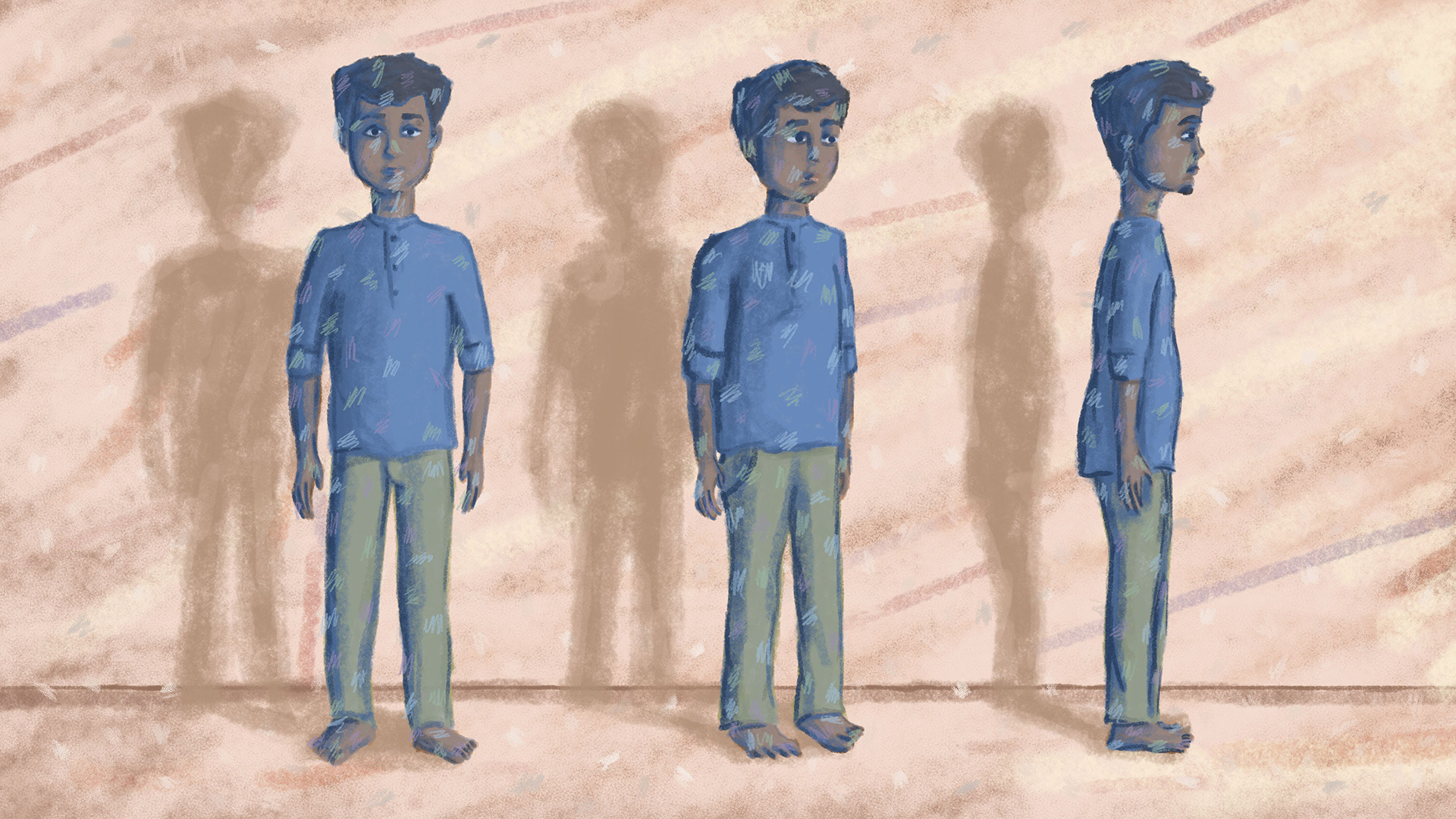
Victim transitioning
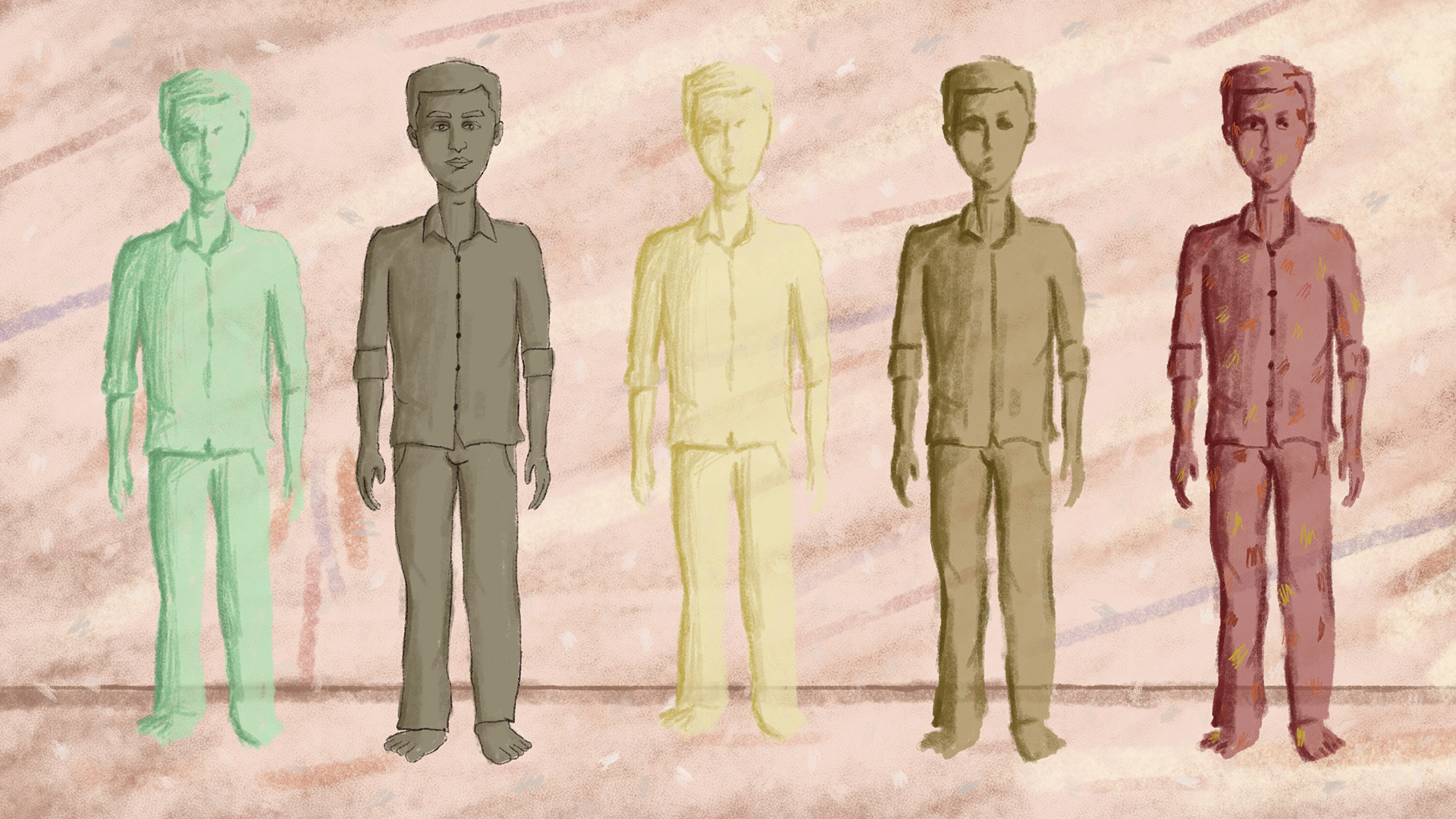
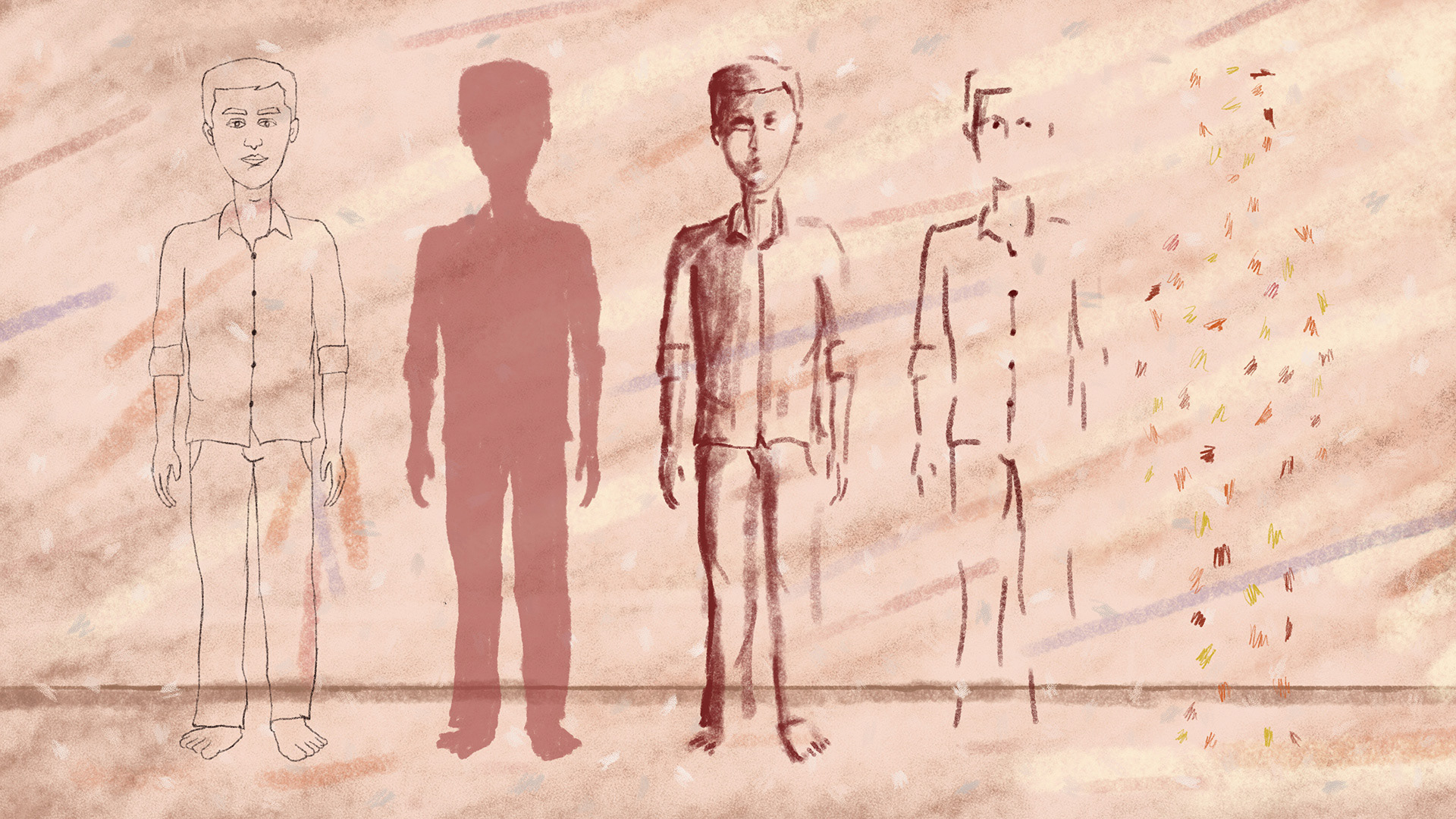
Layers
Style and composition exploration
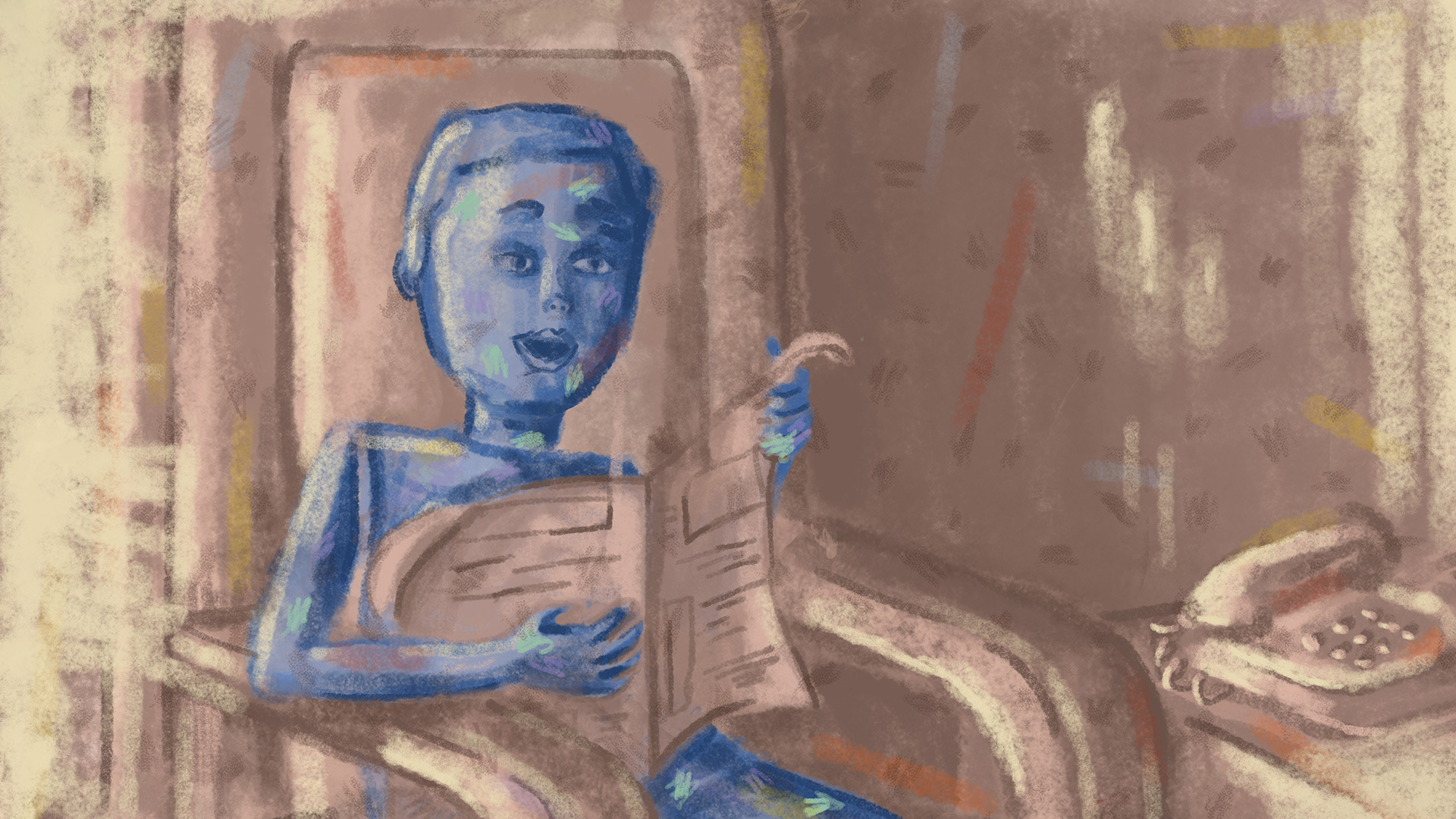
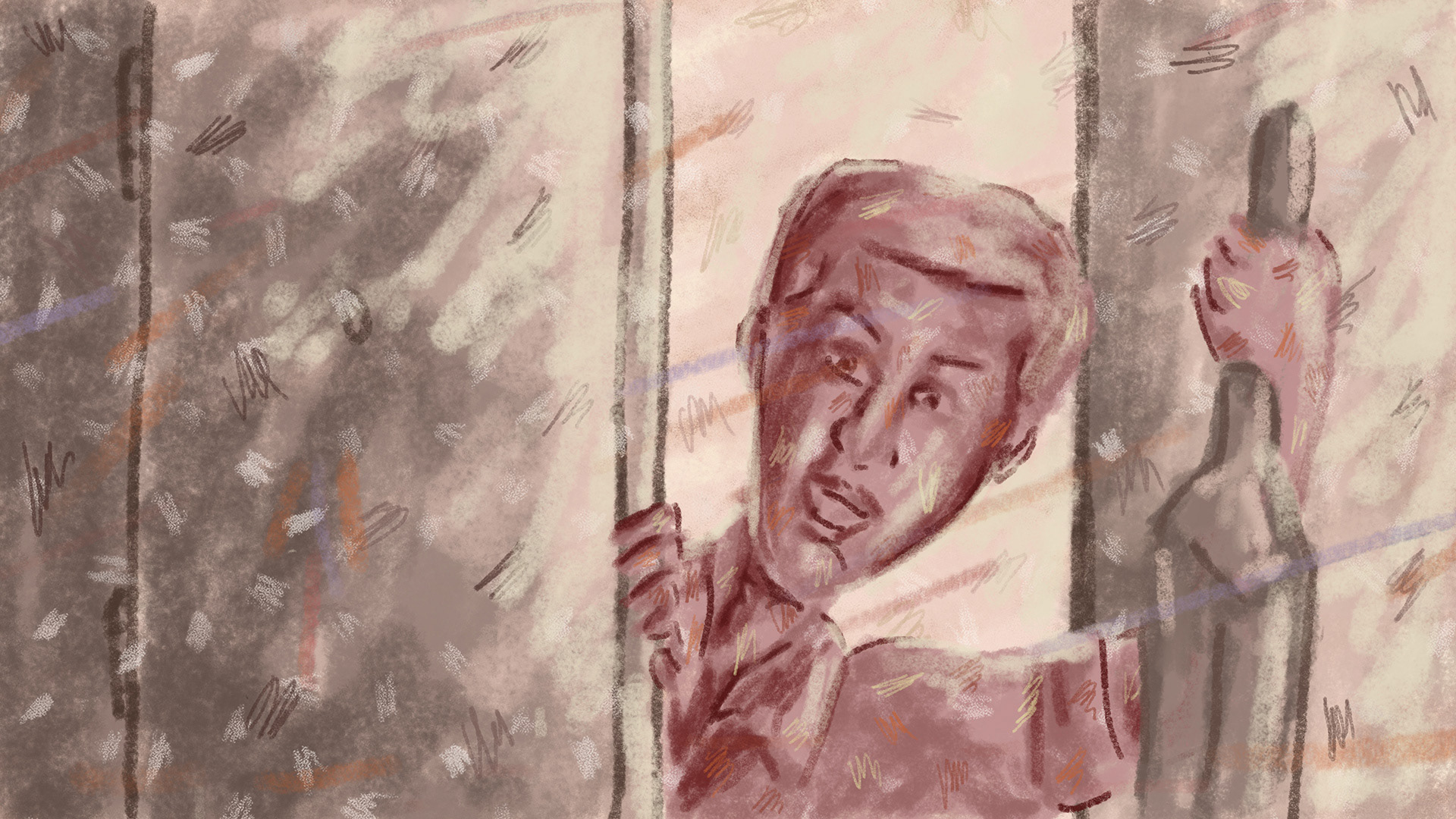
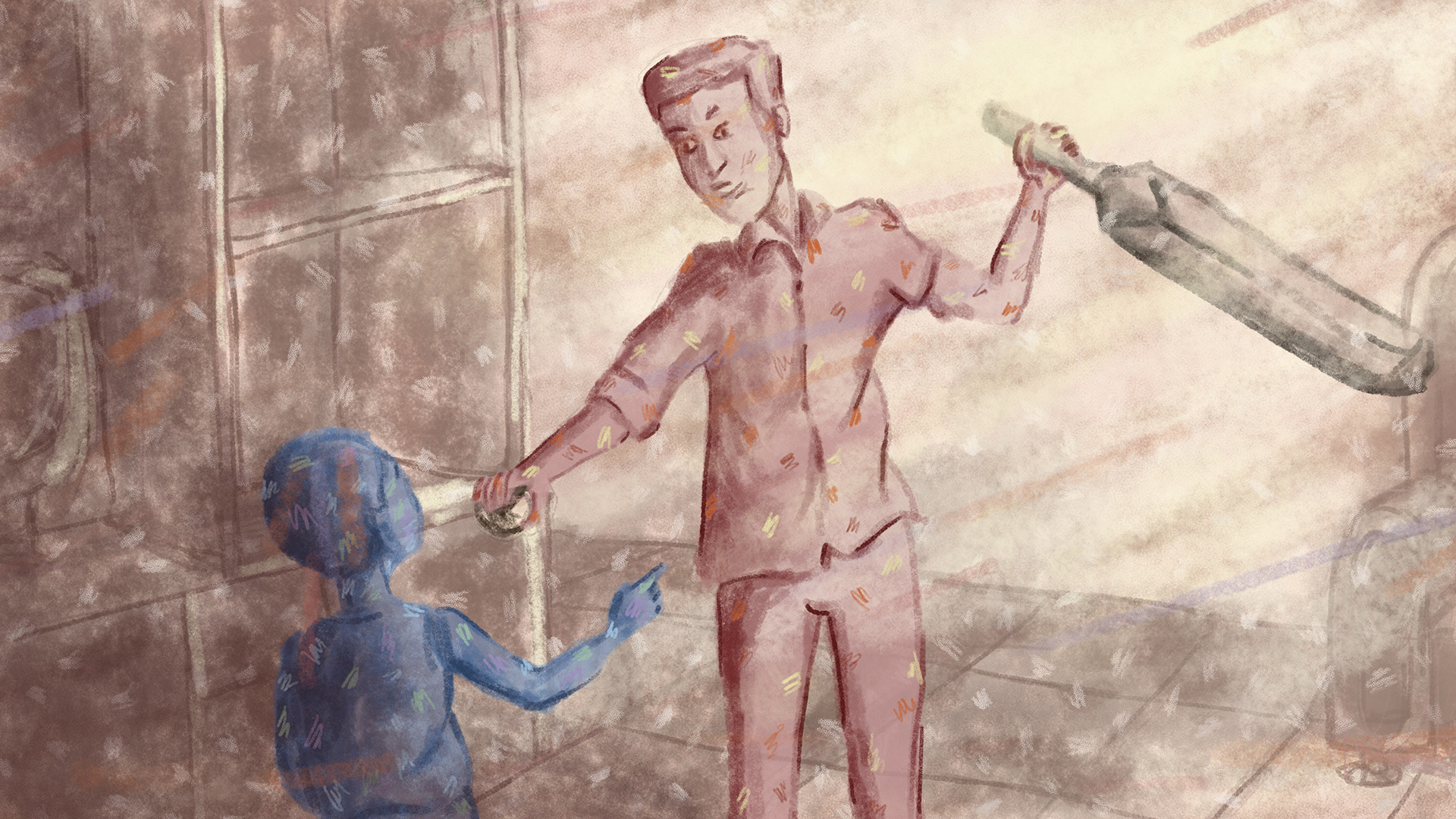

Graphic Novel
Graphic novel of the complete story
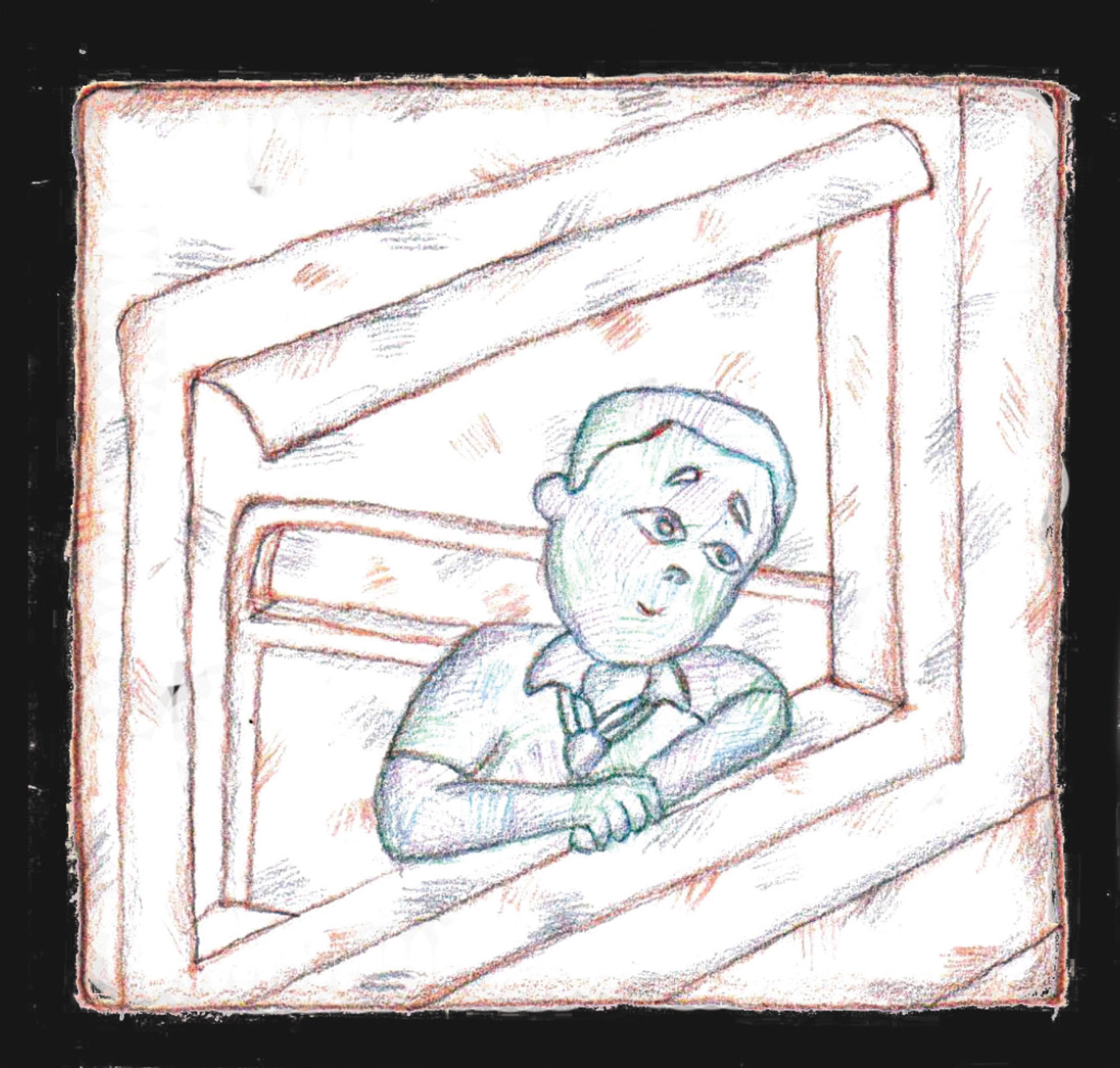
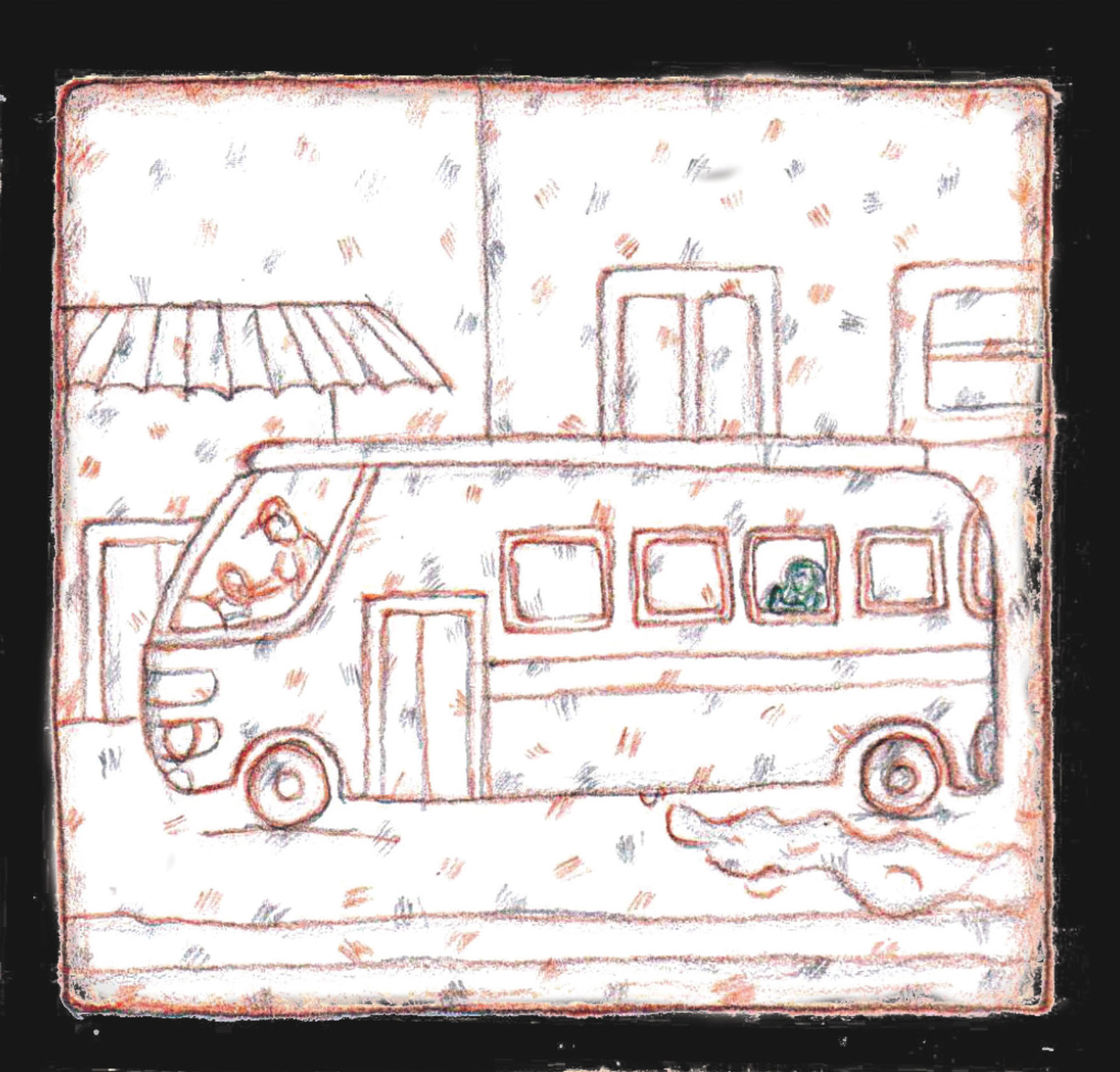
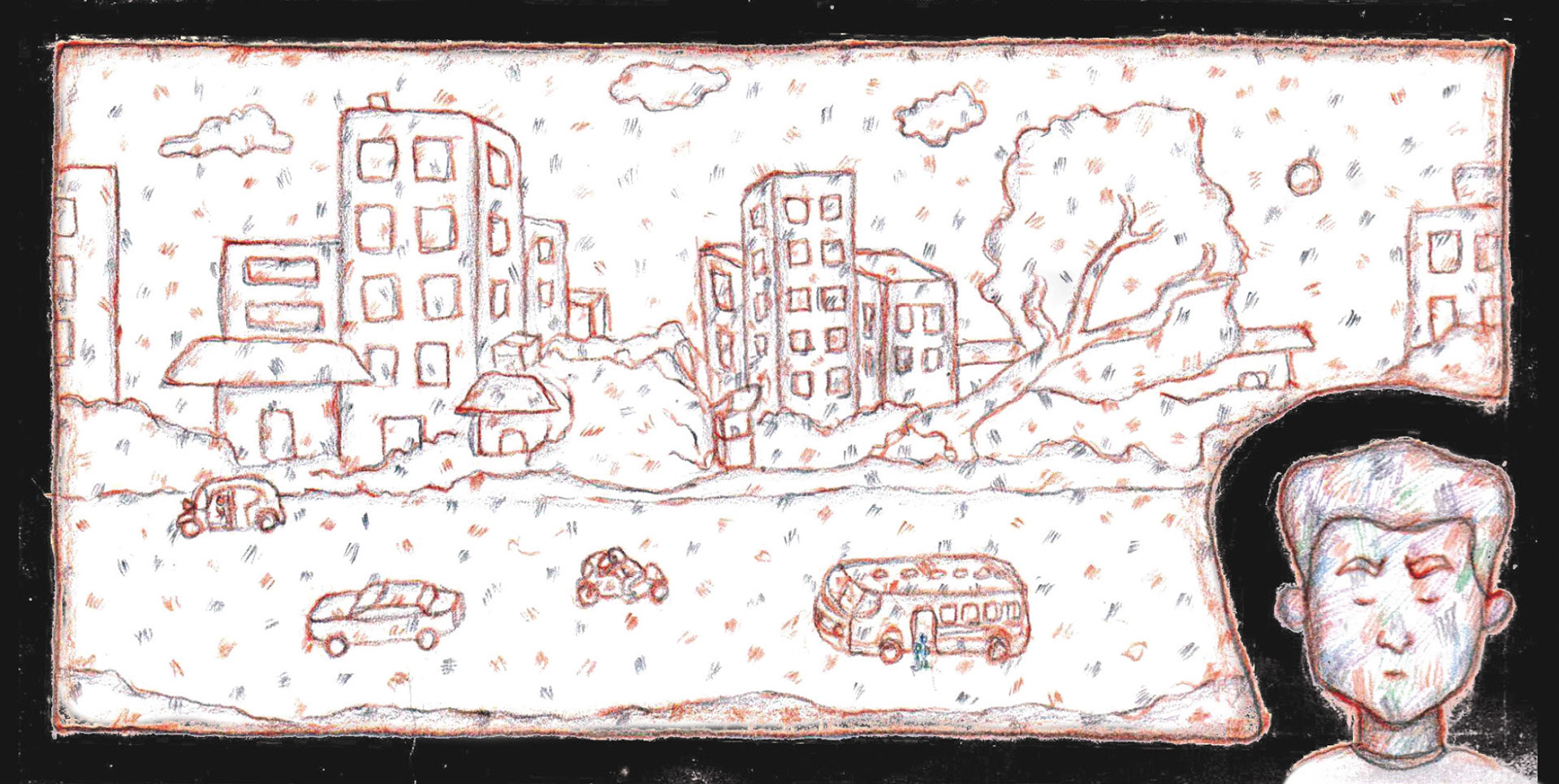
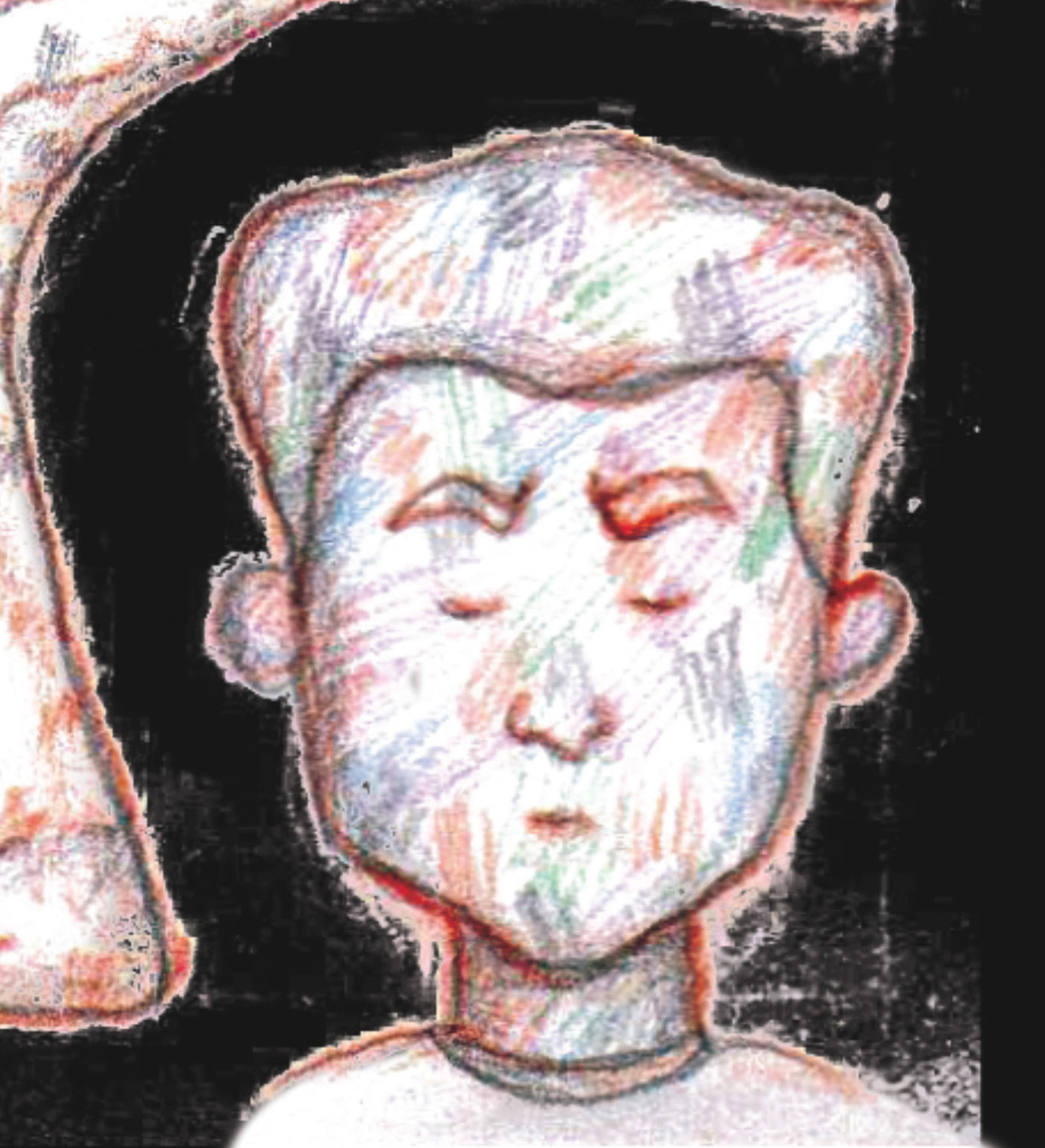
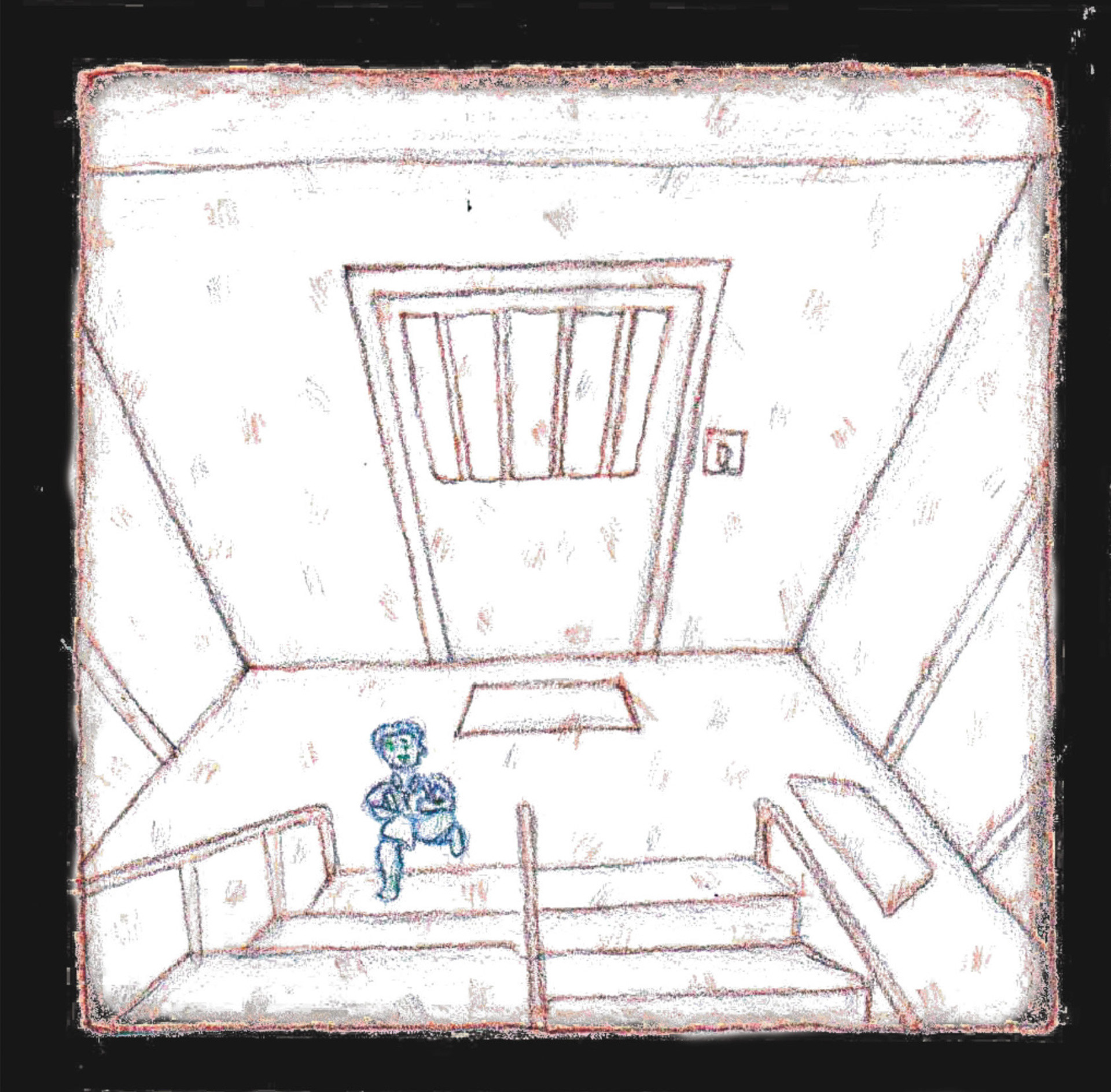

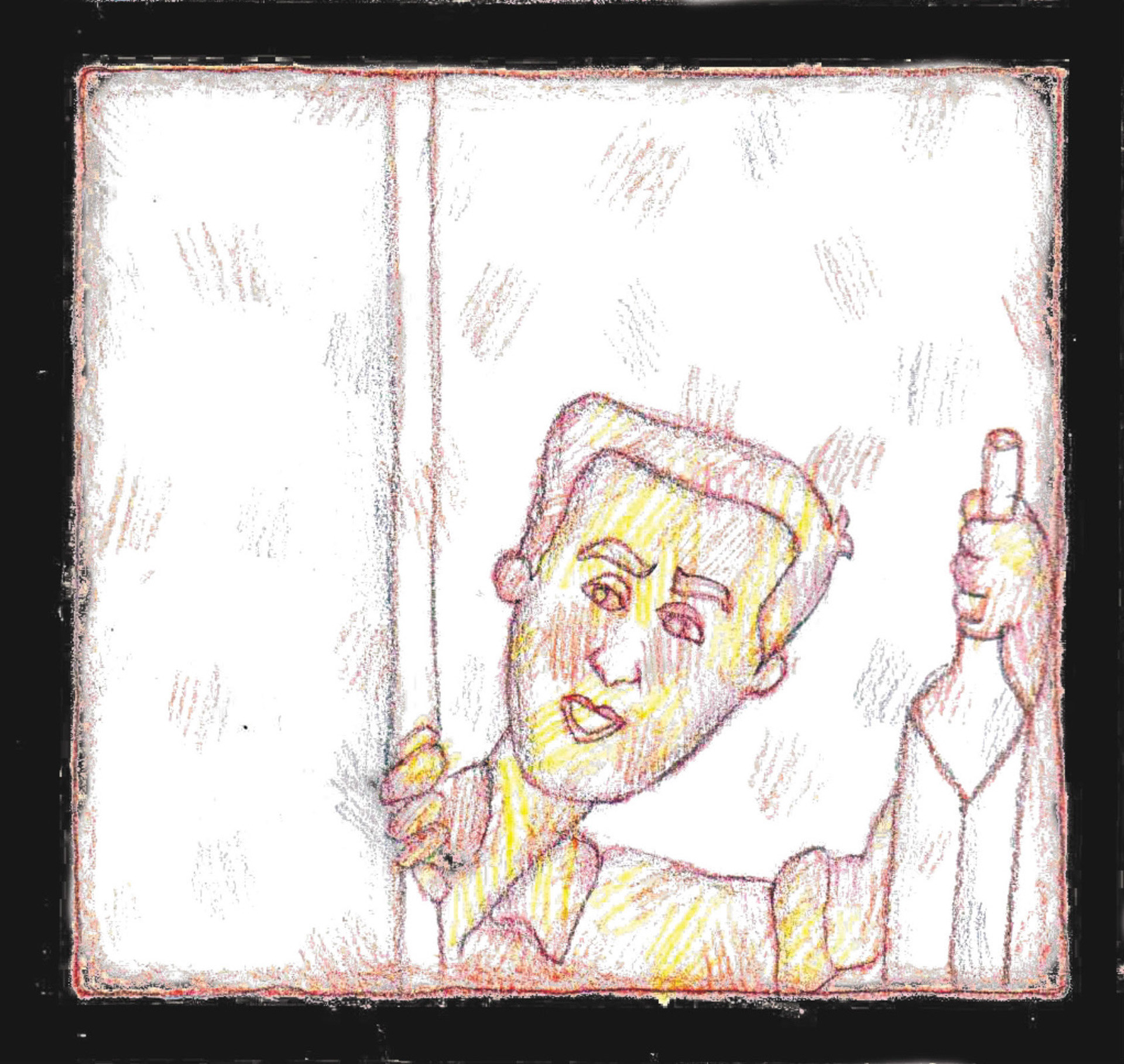

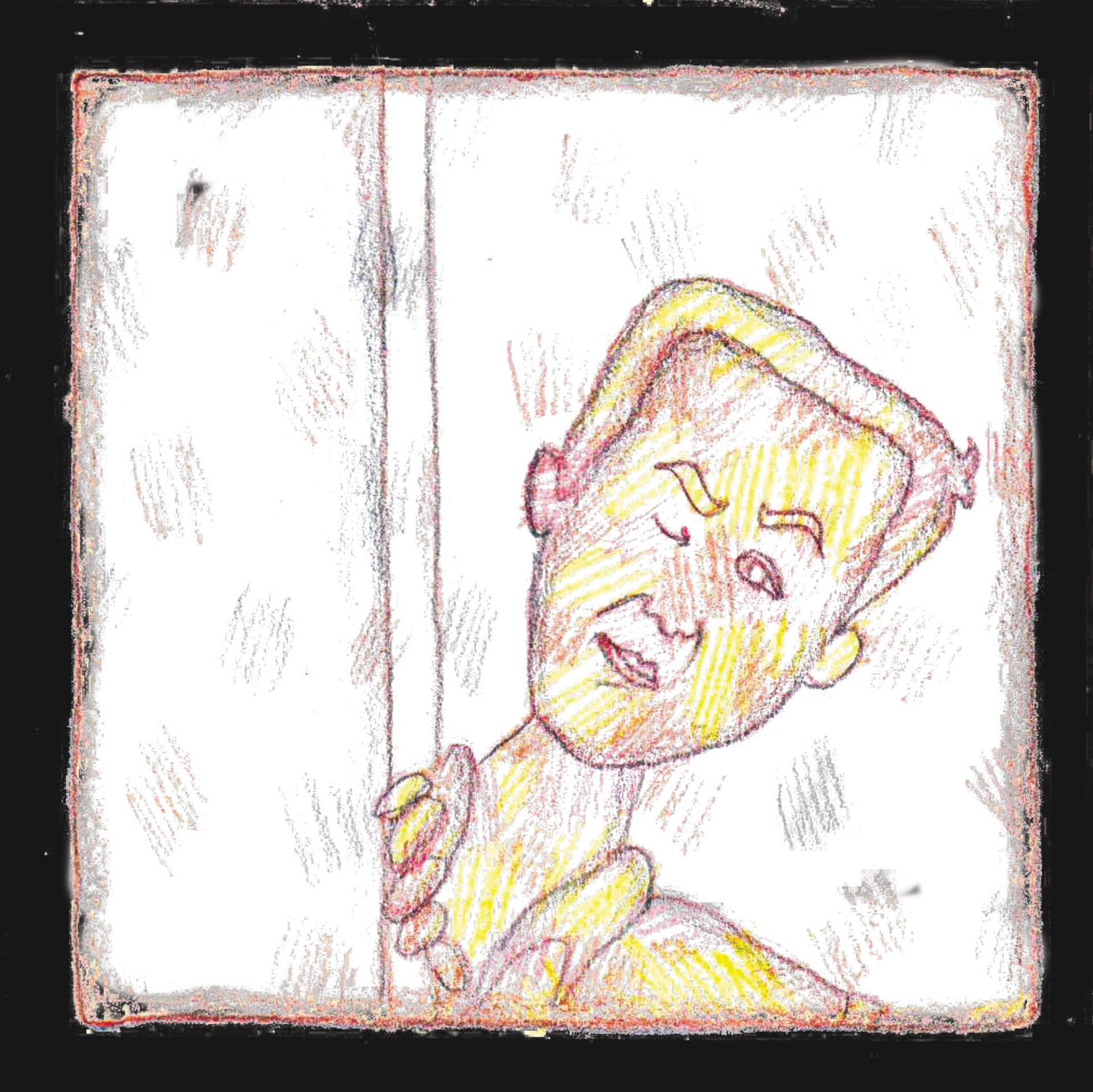
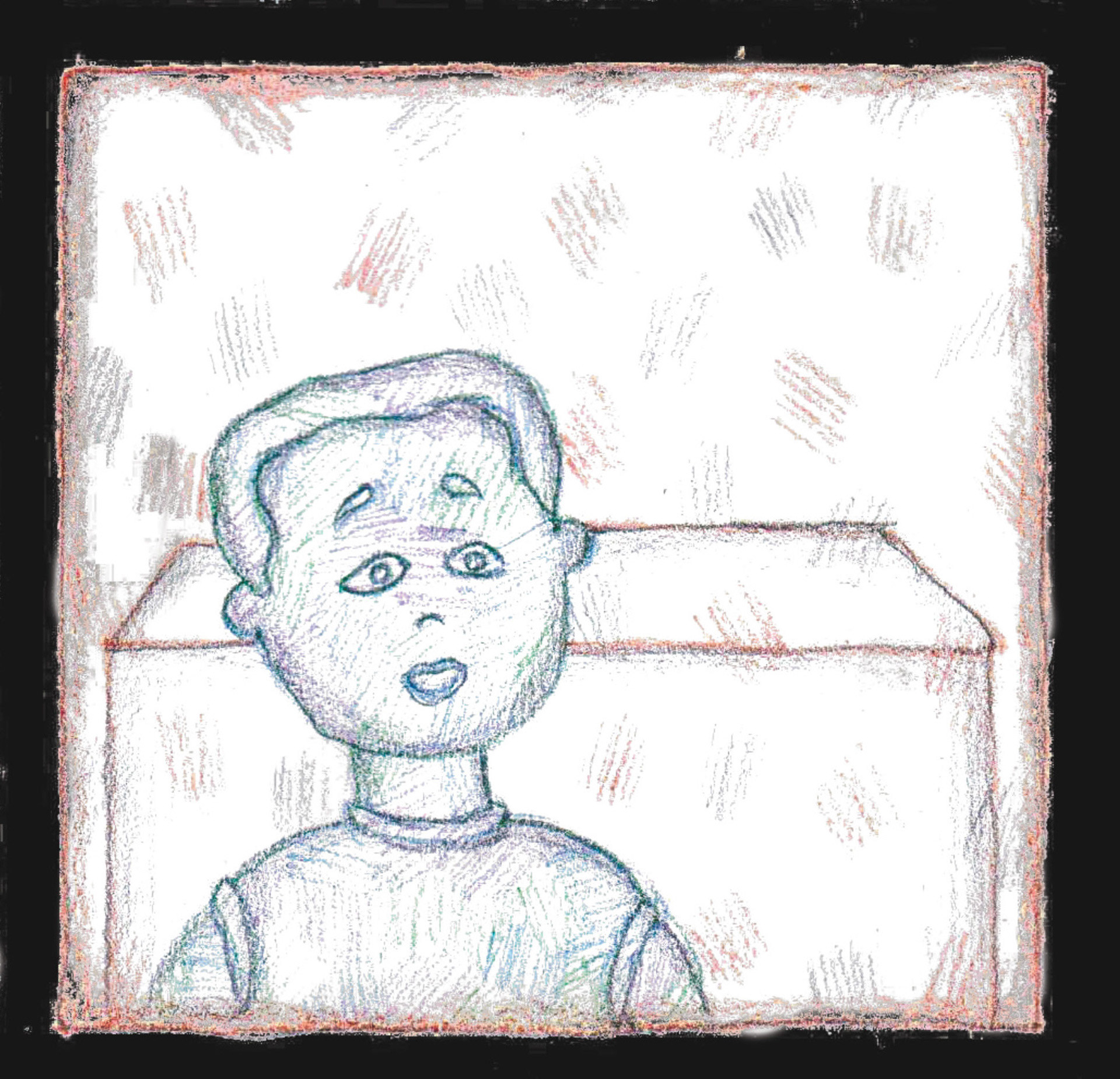
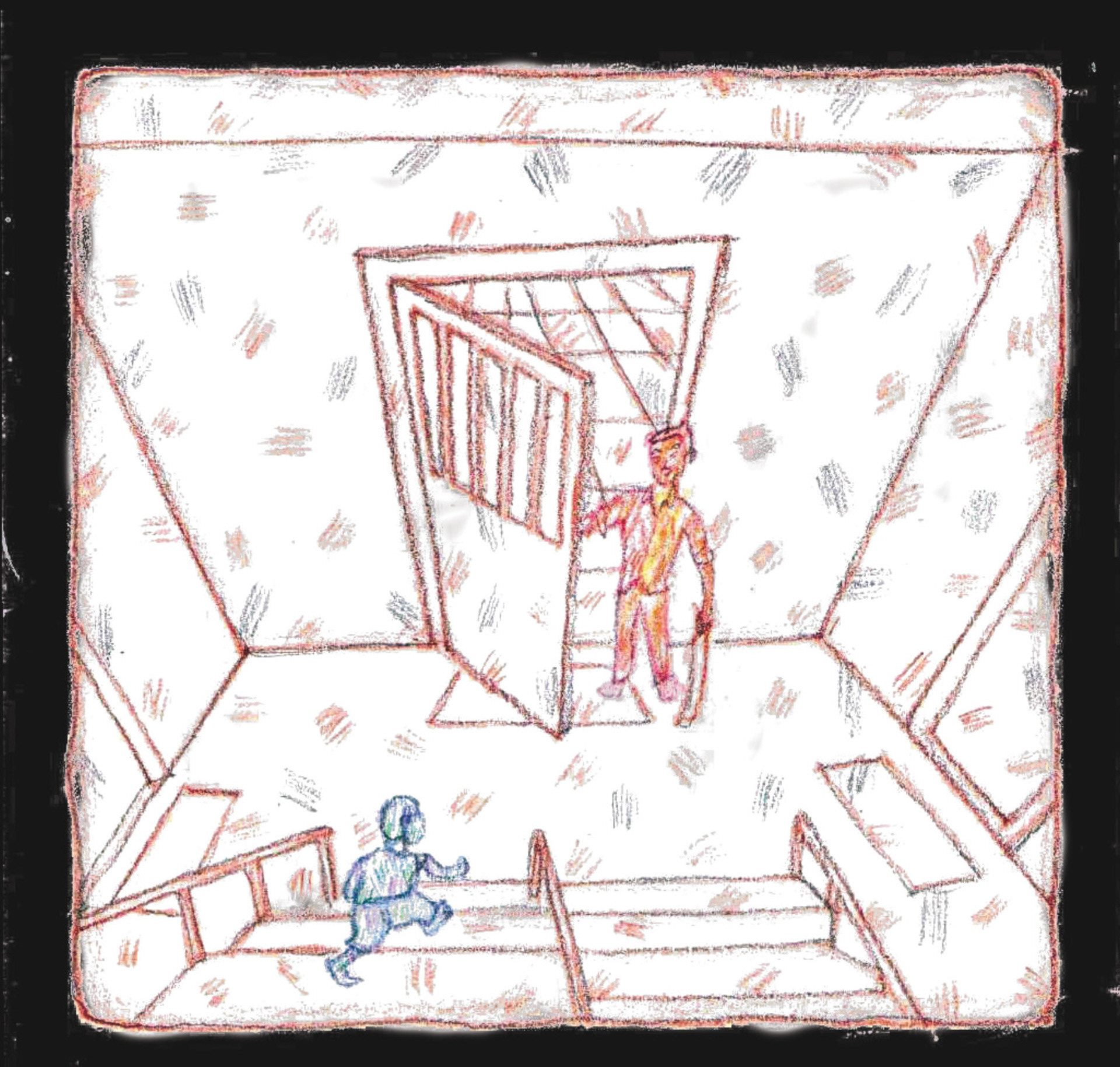

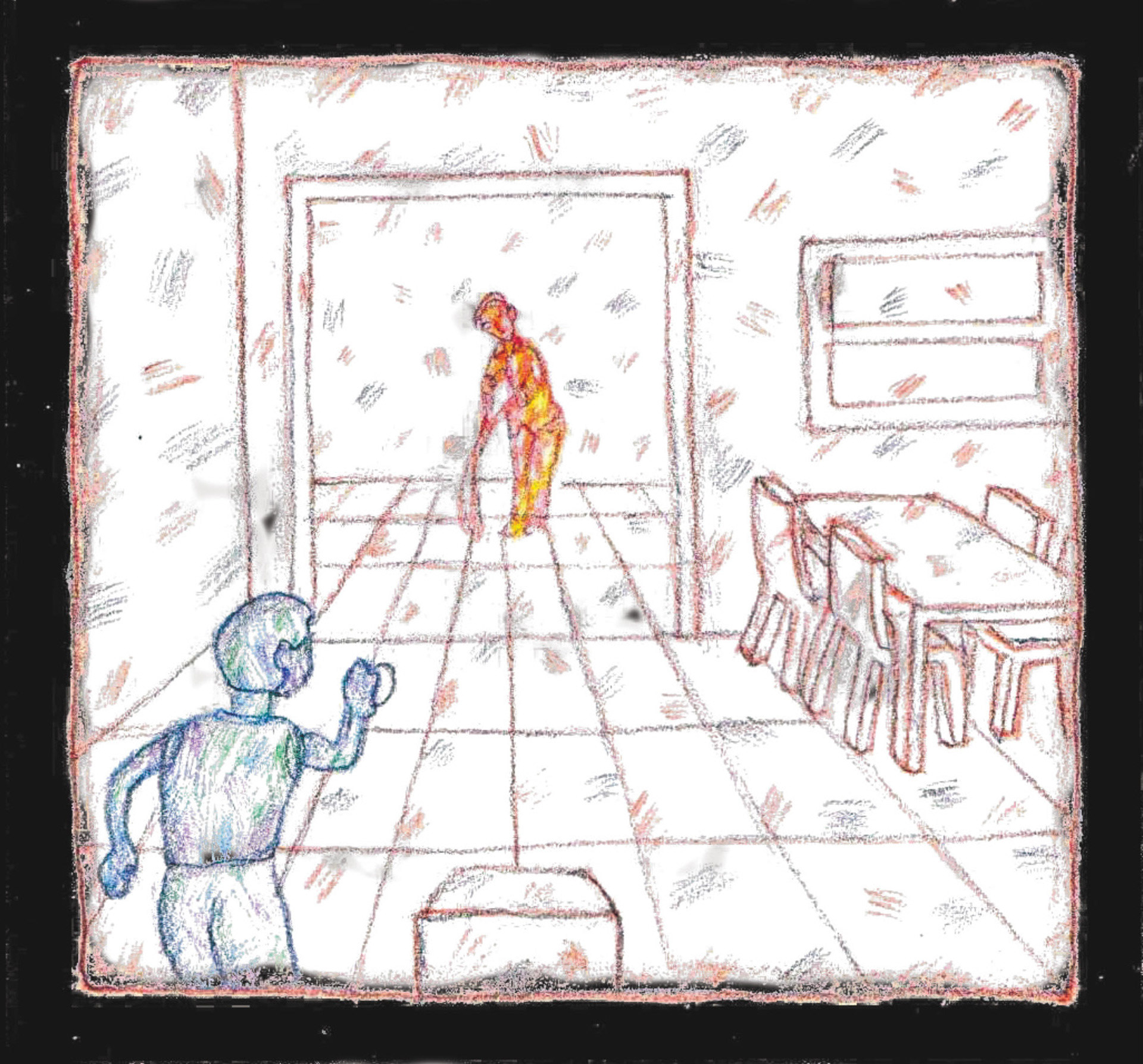
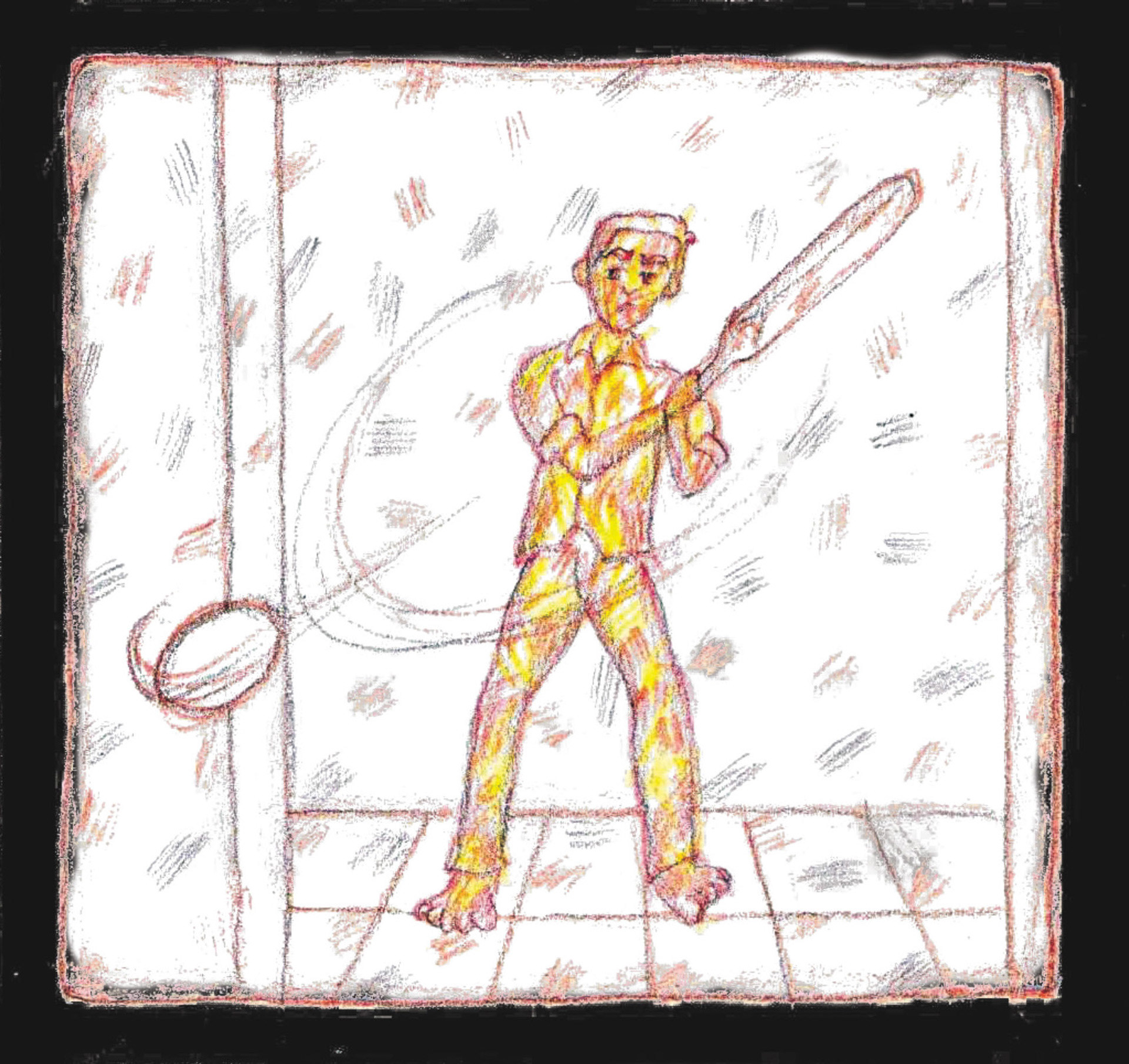


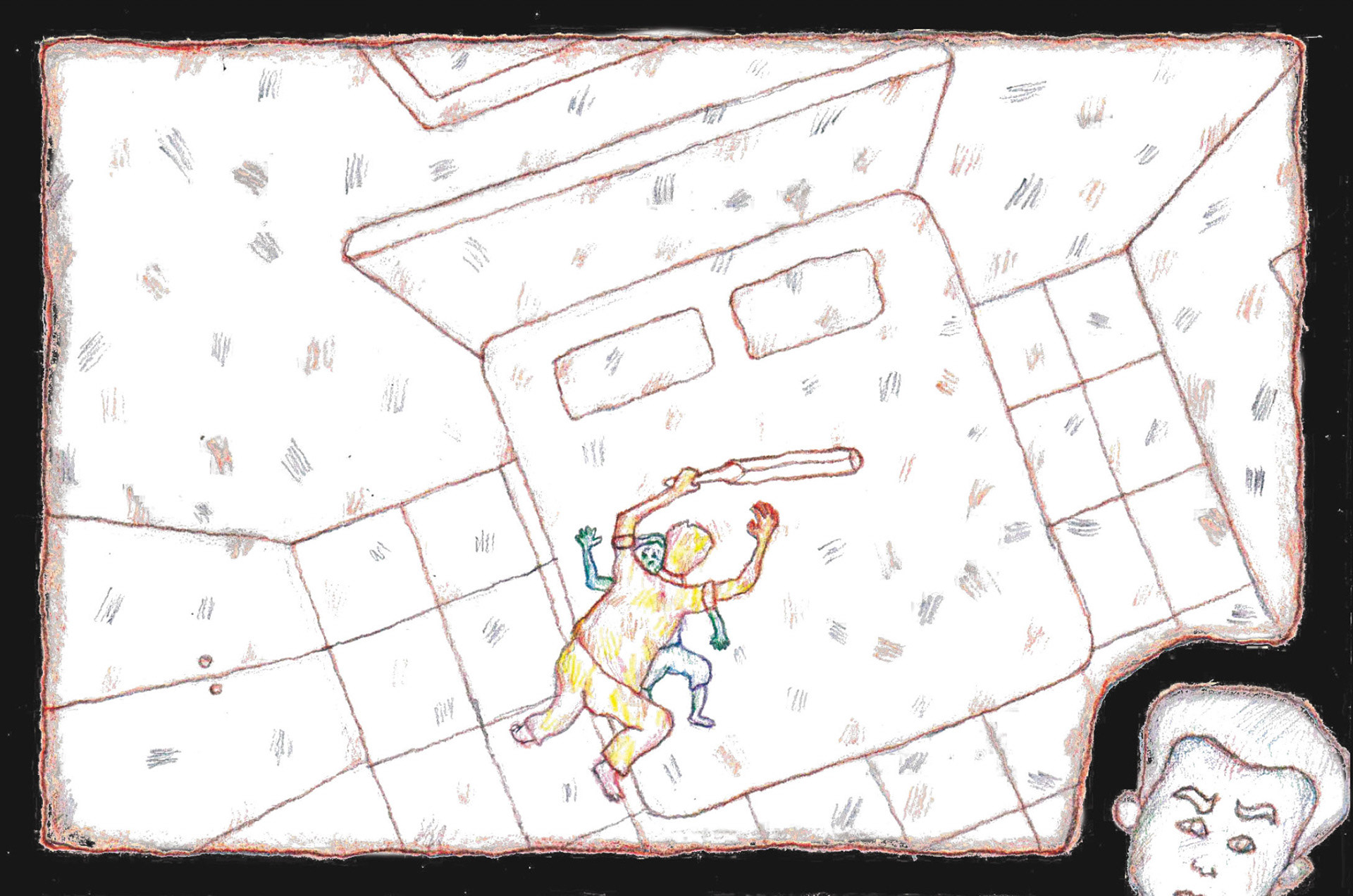

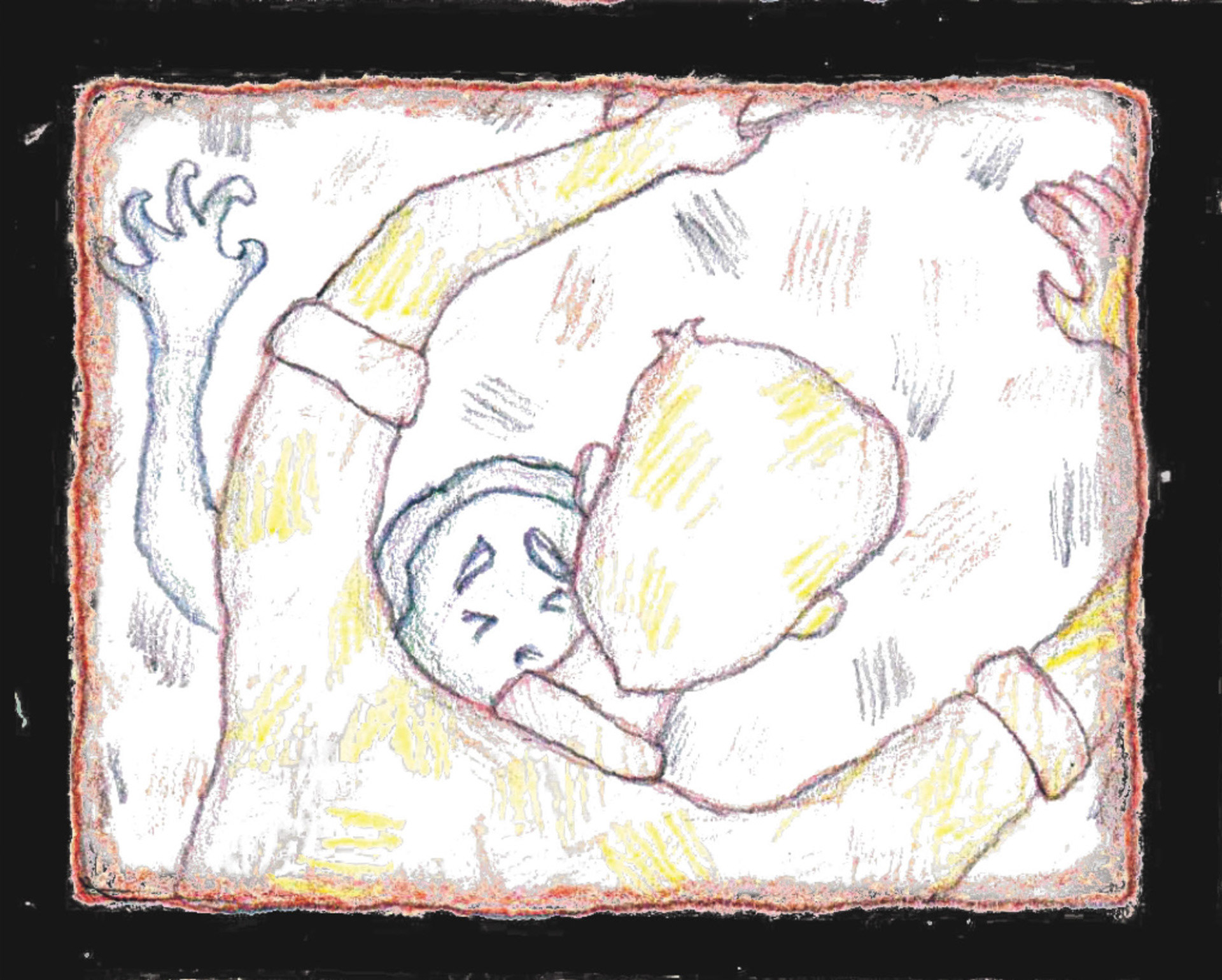
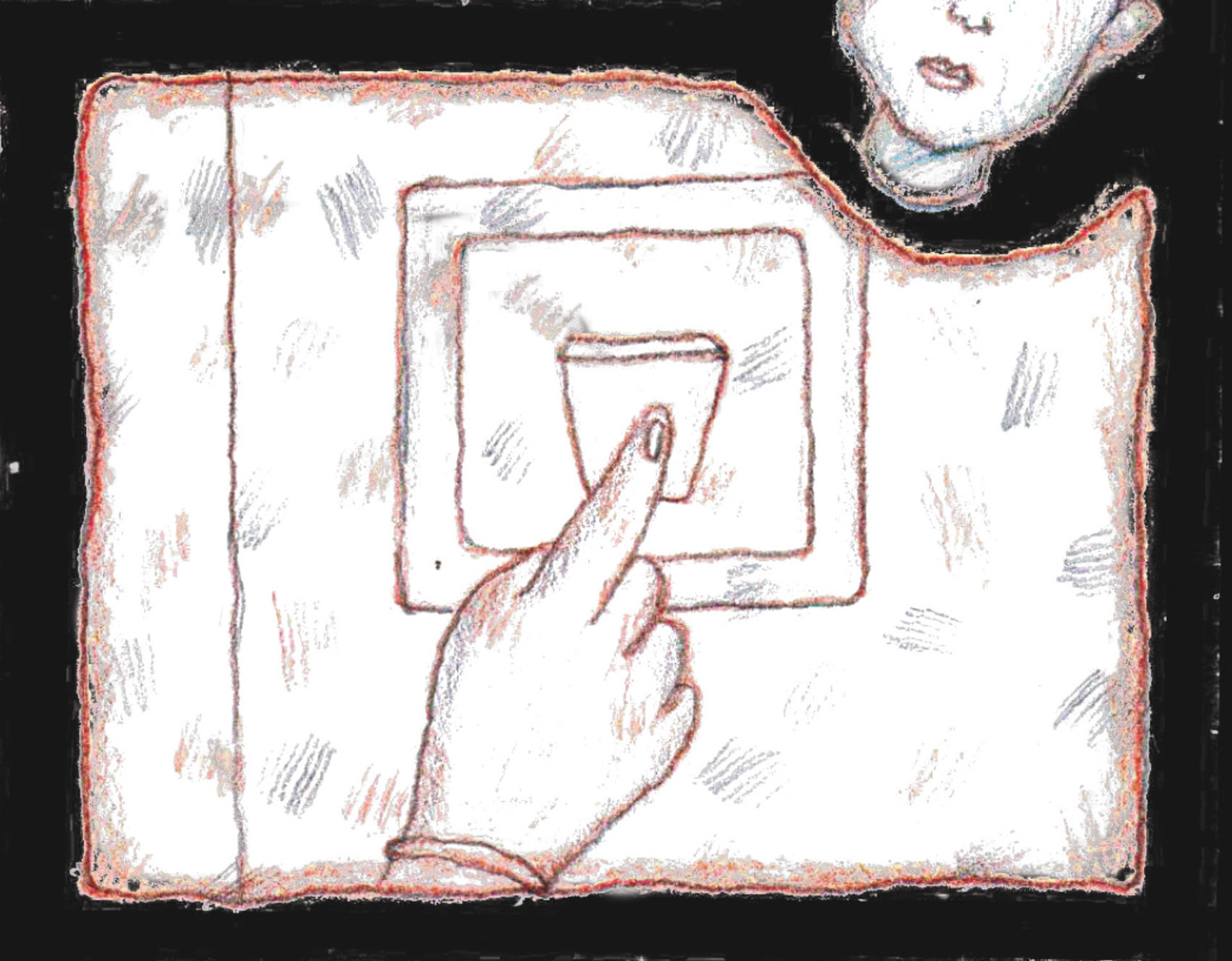
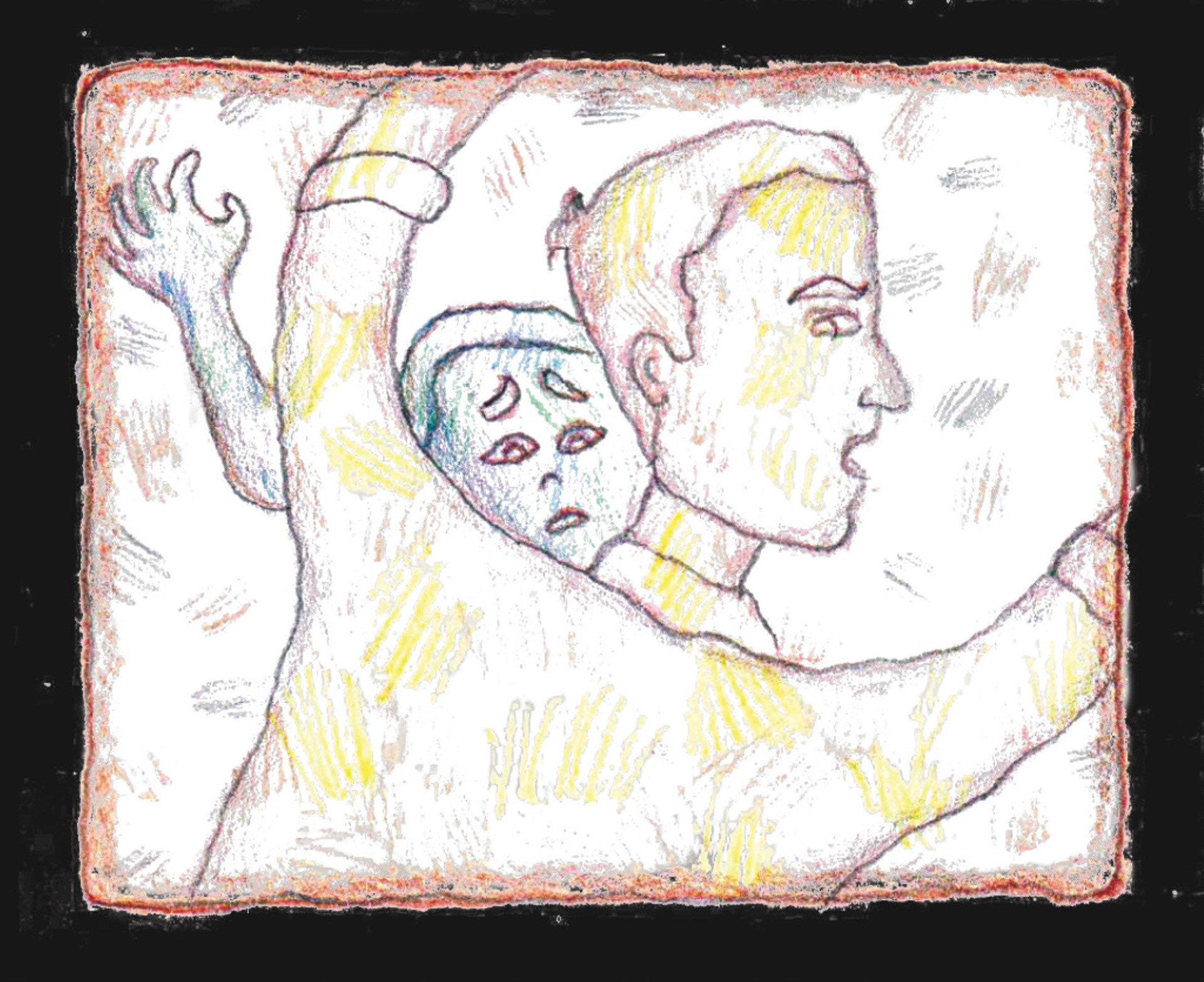
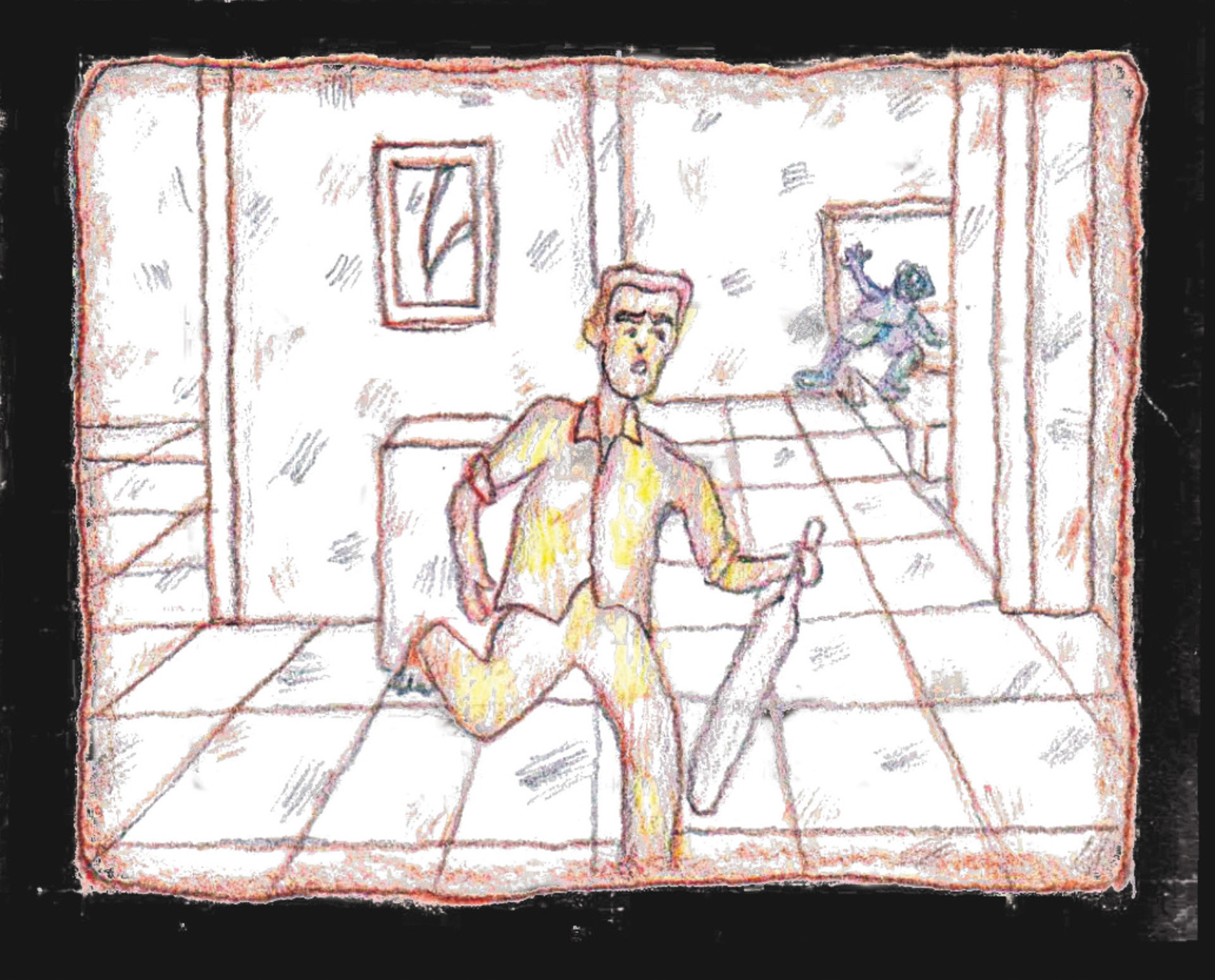

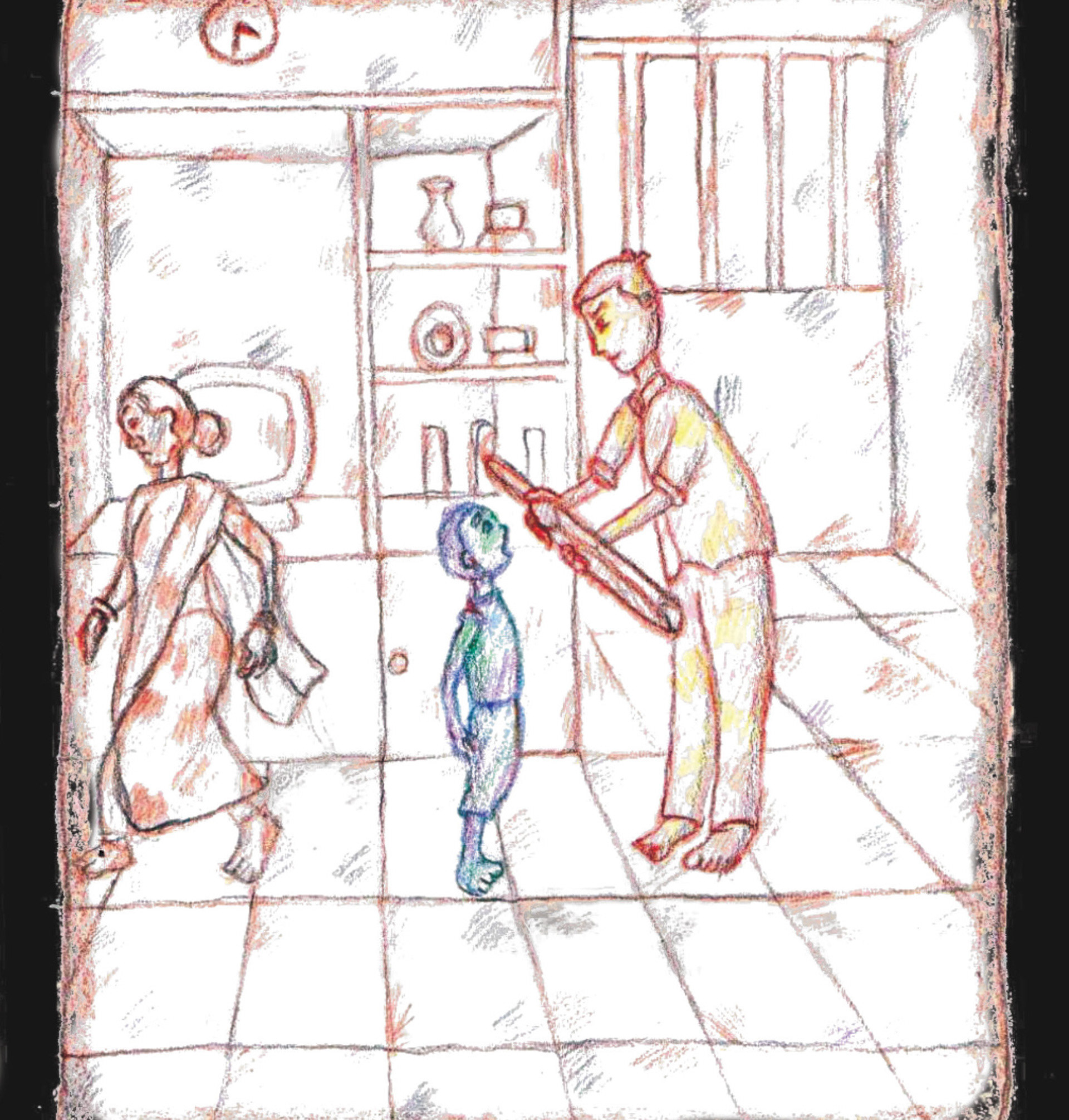


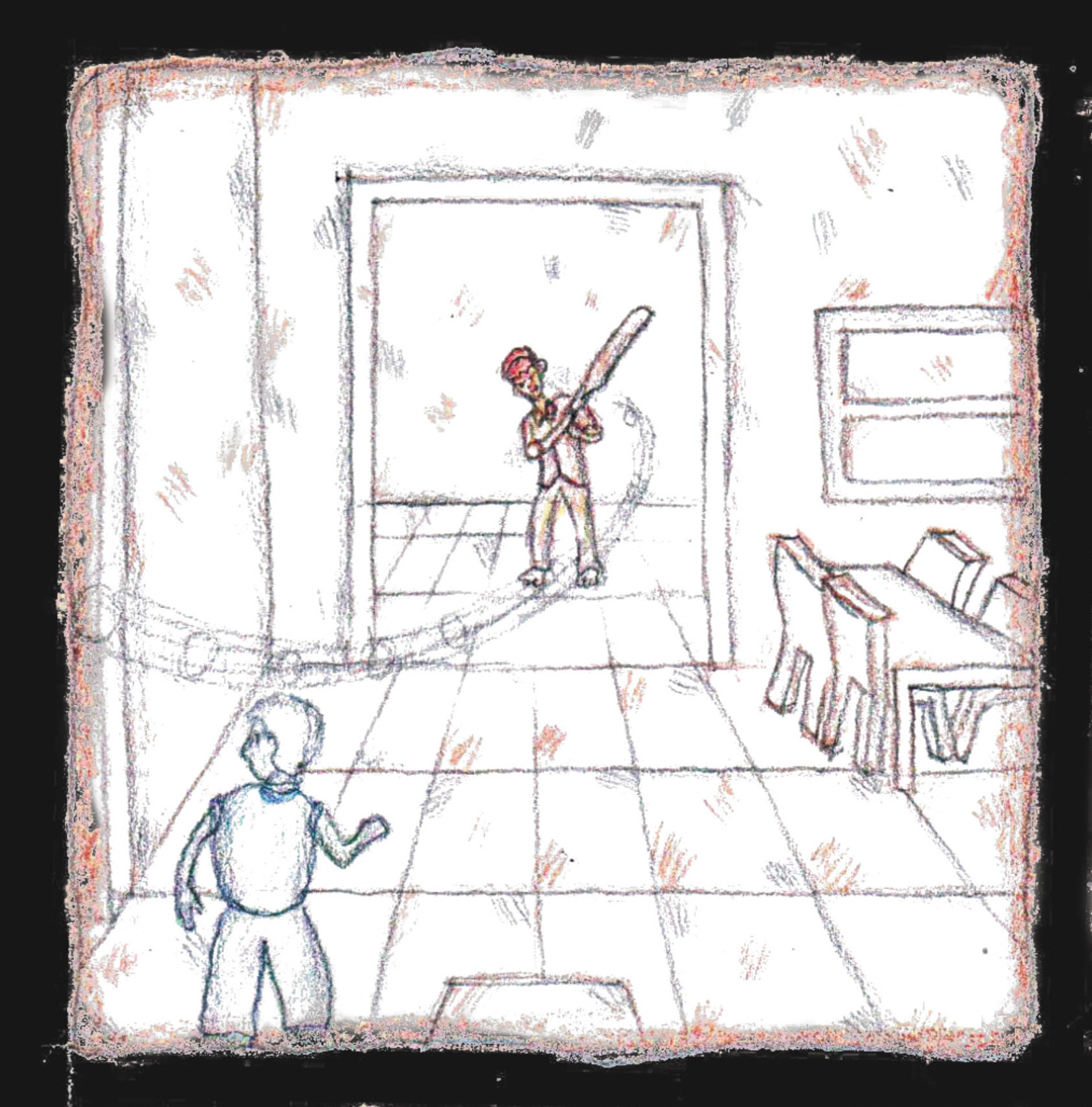
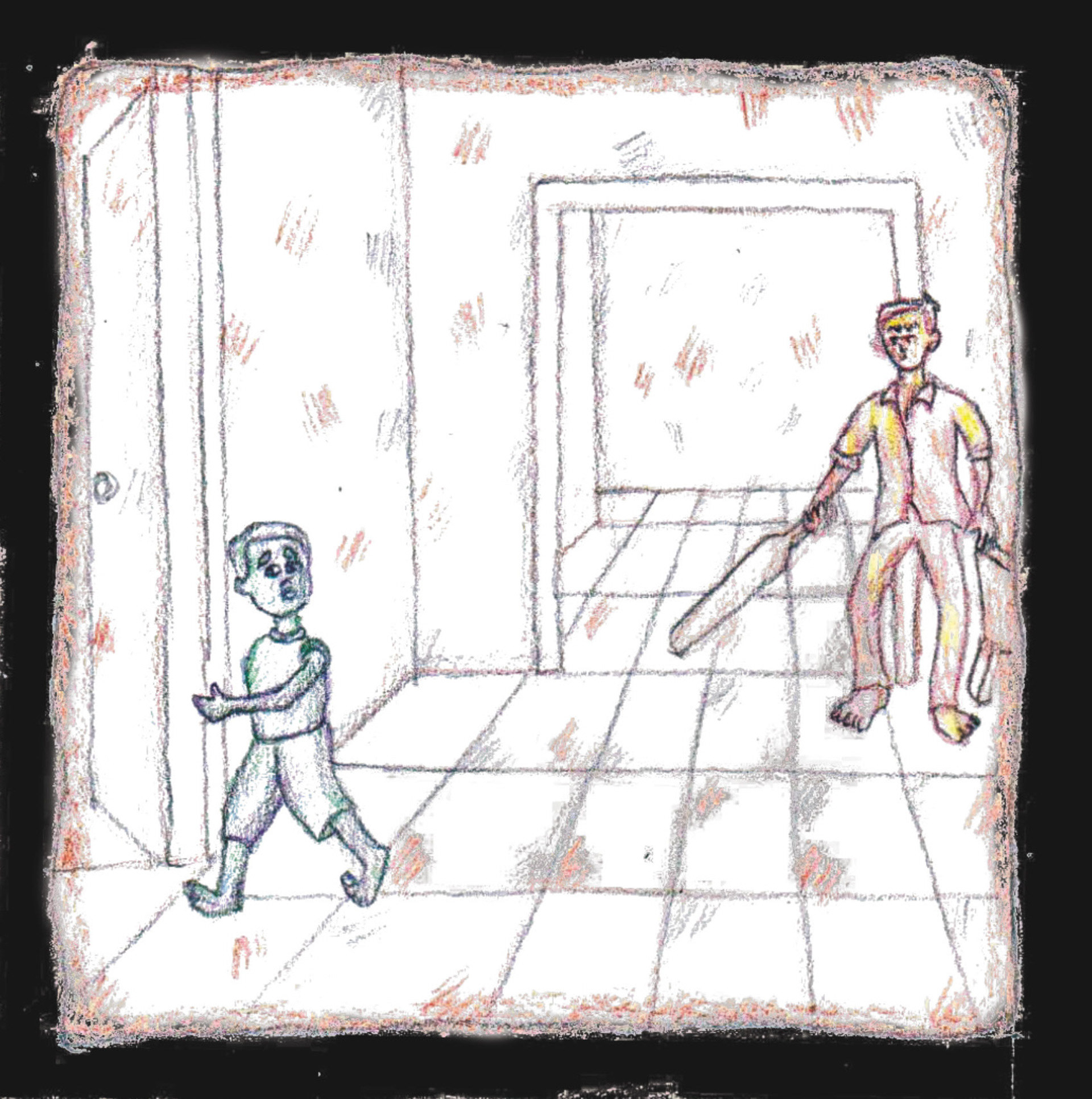
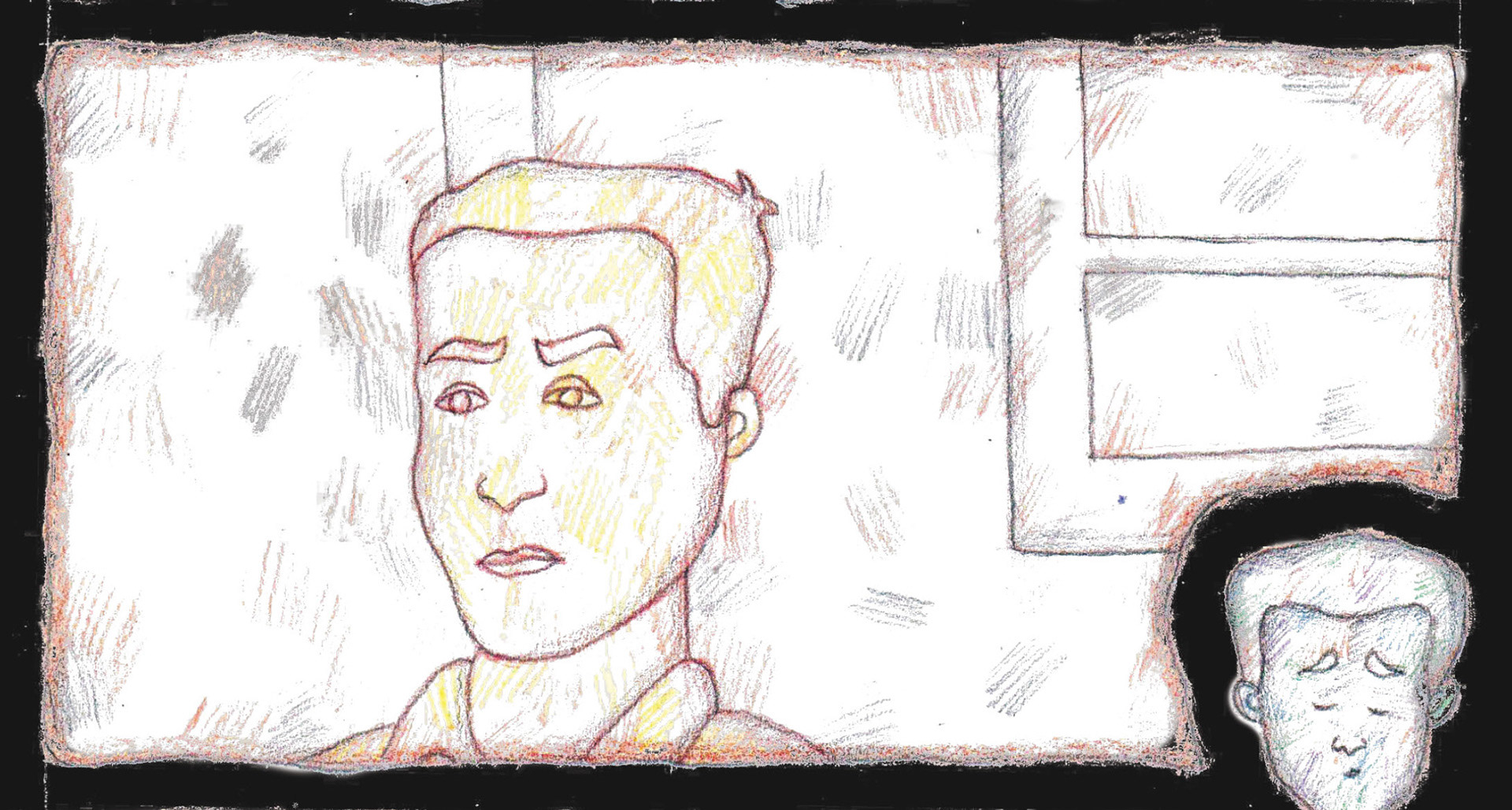
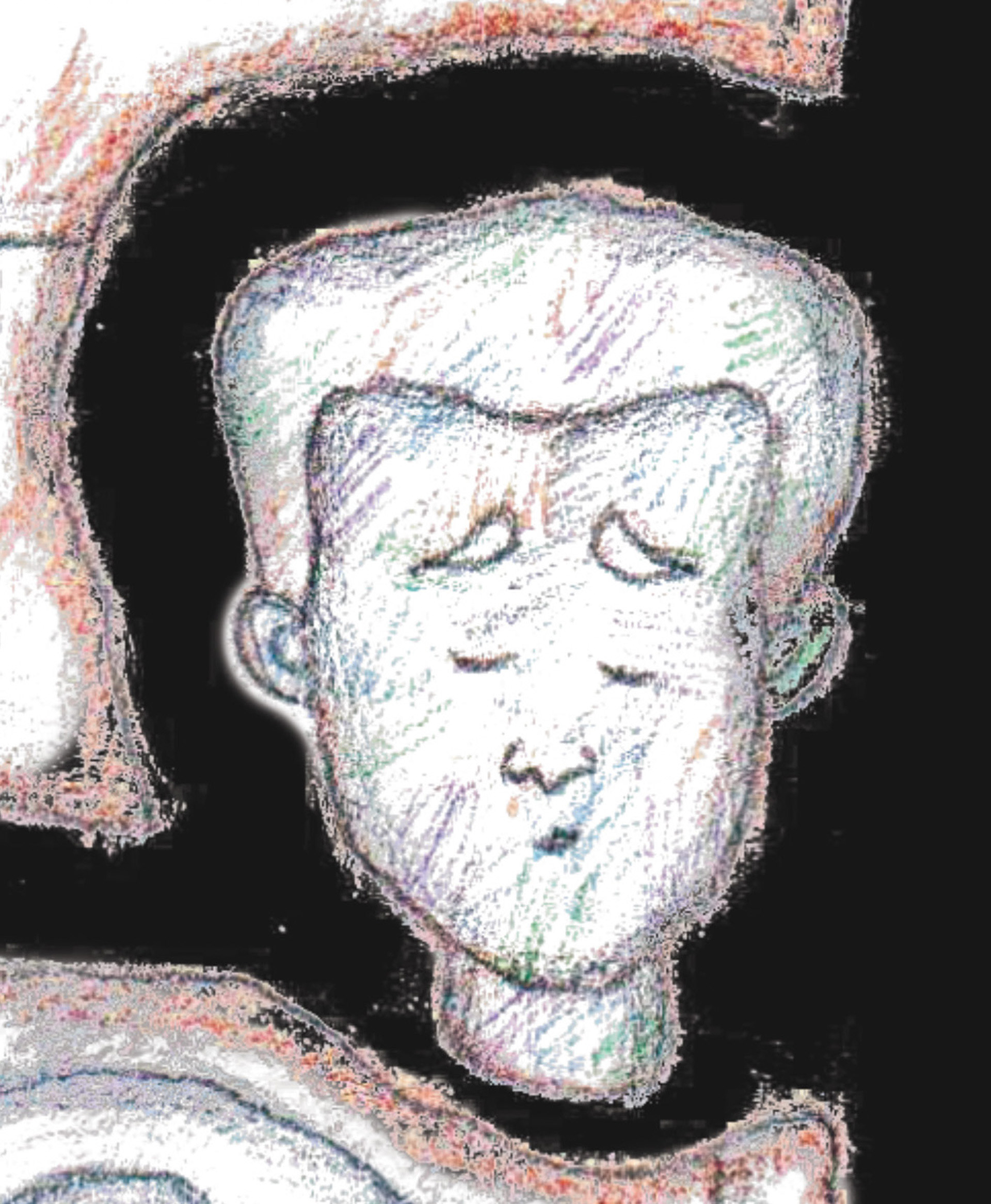
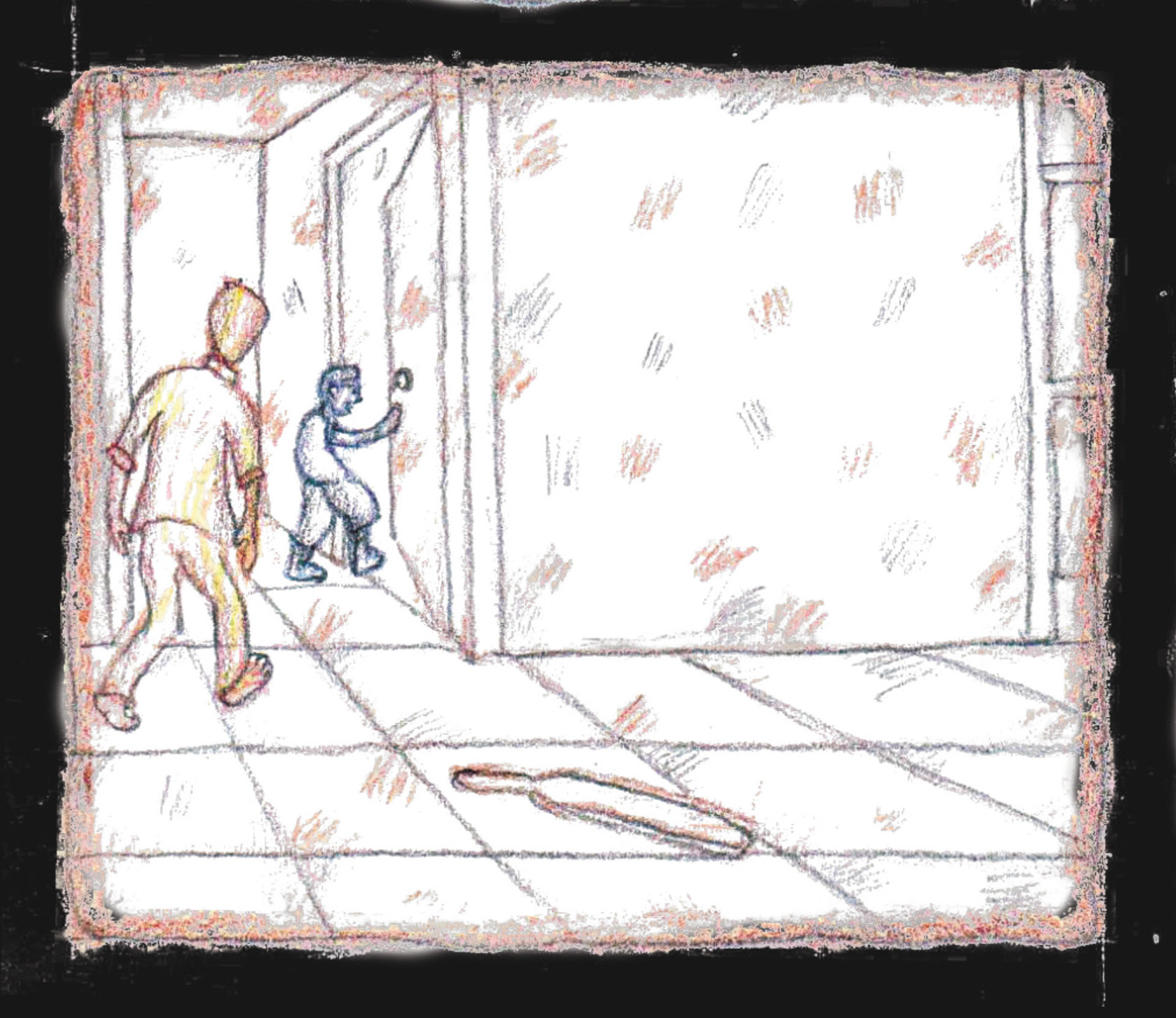
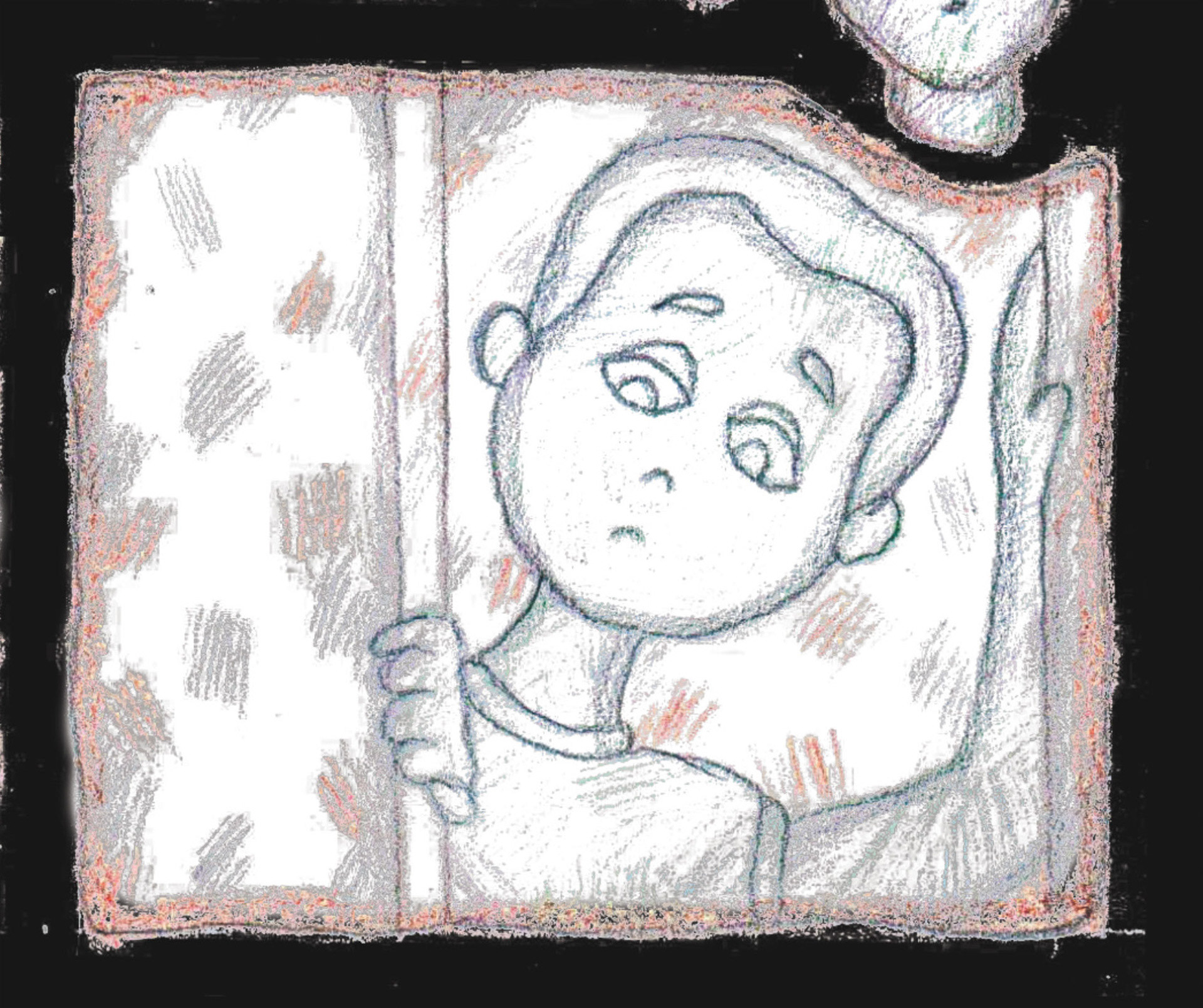
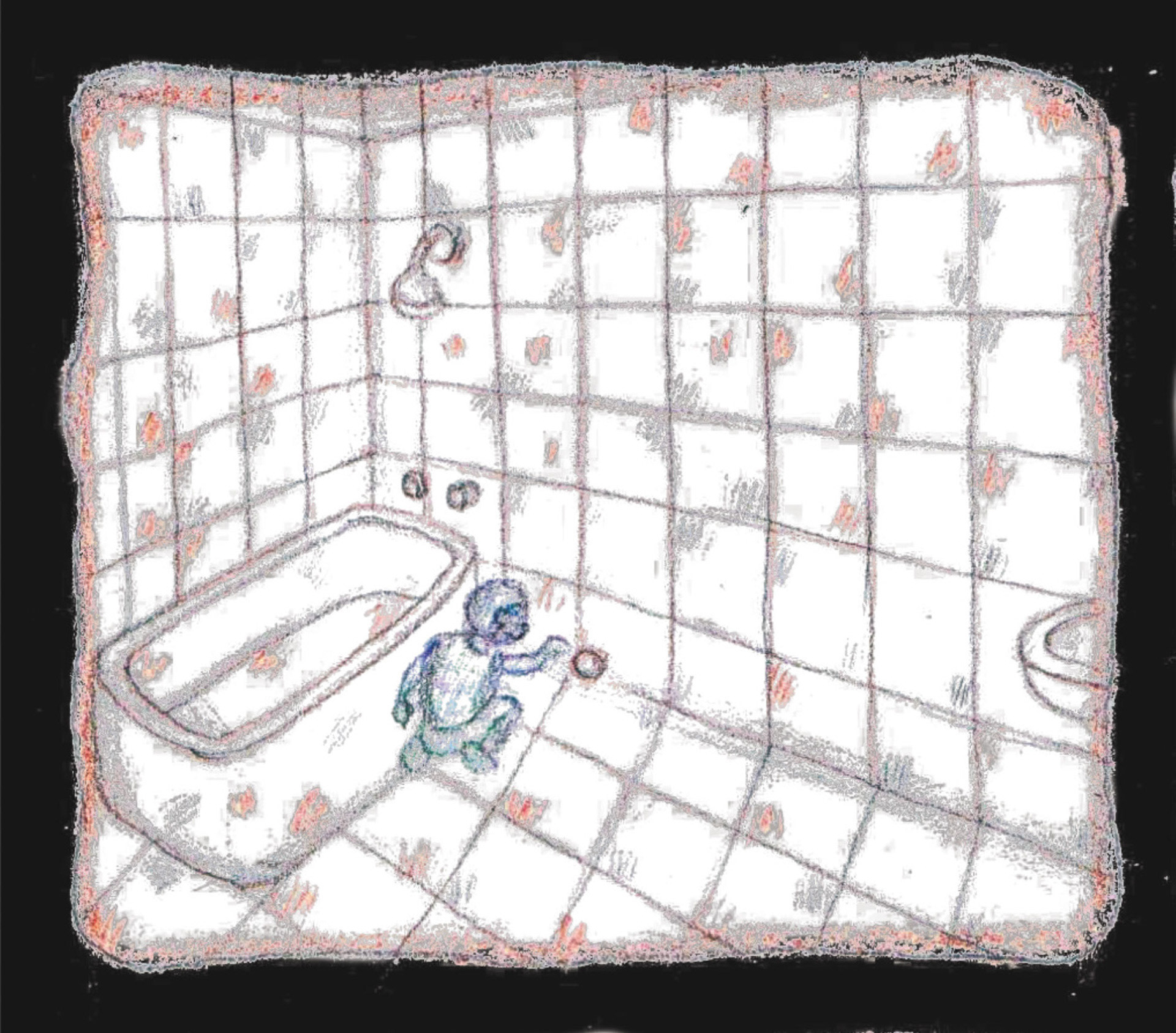
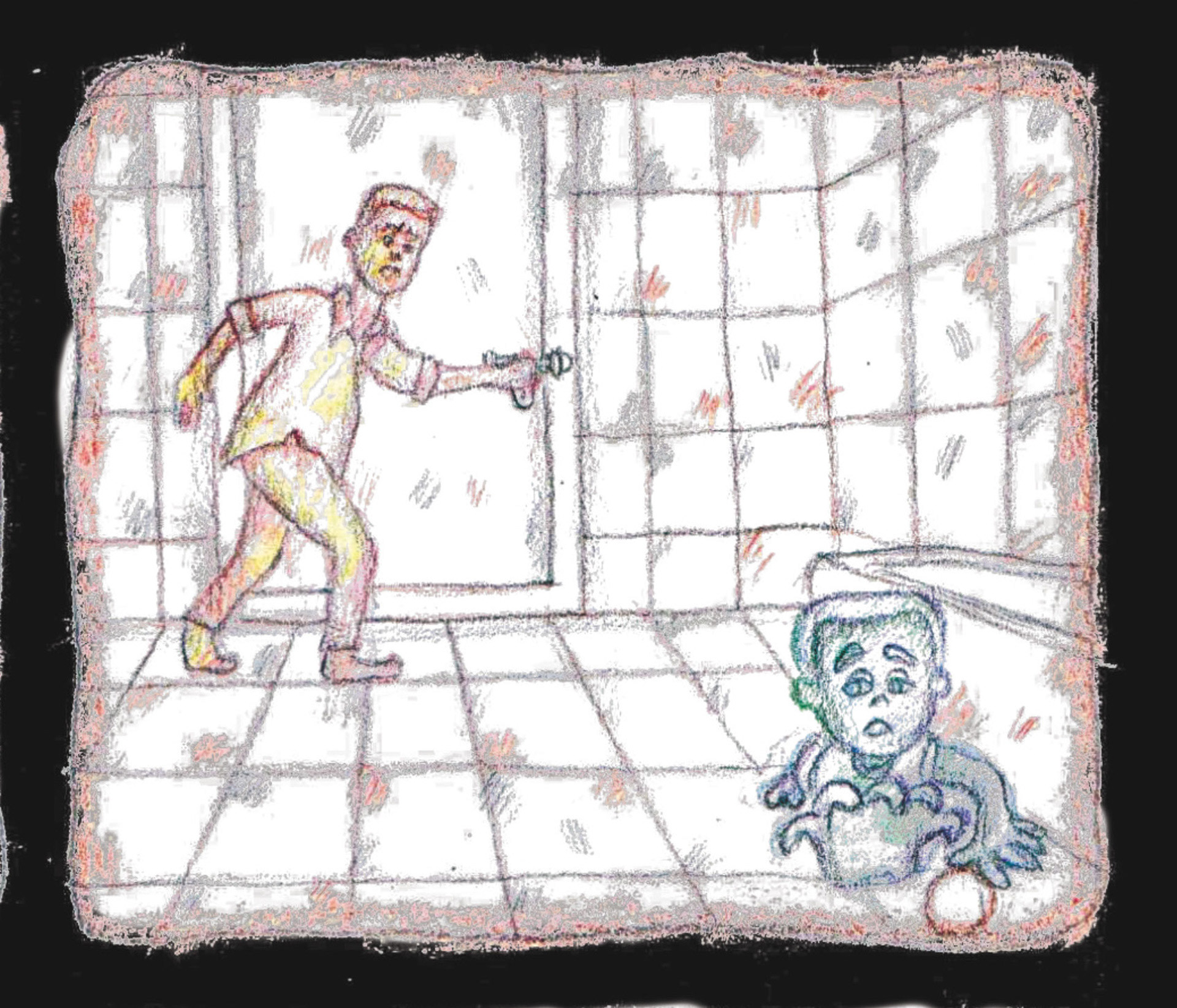

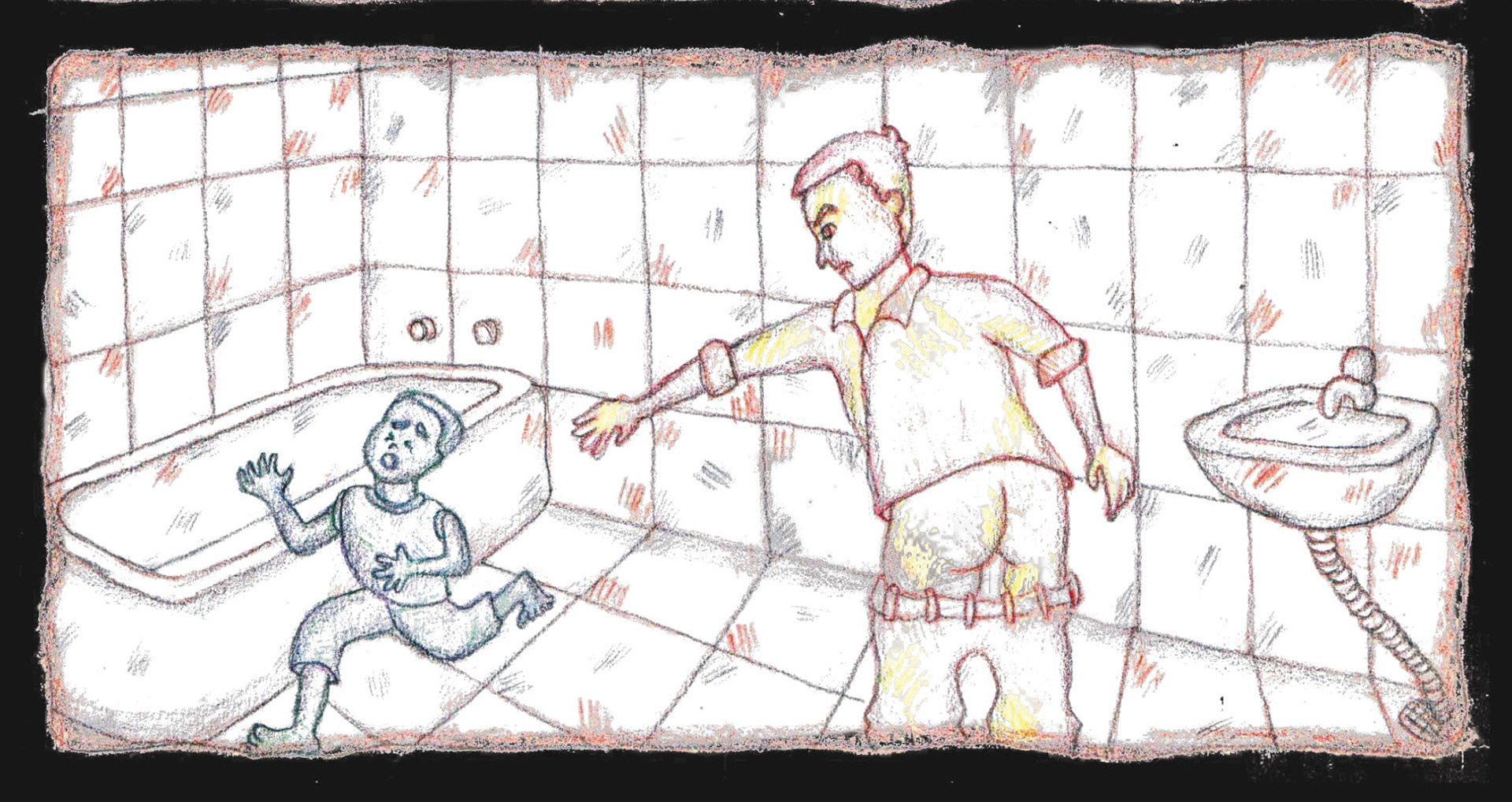

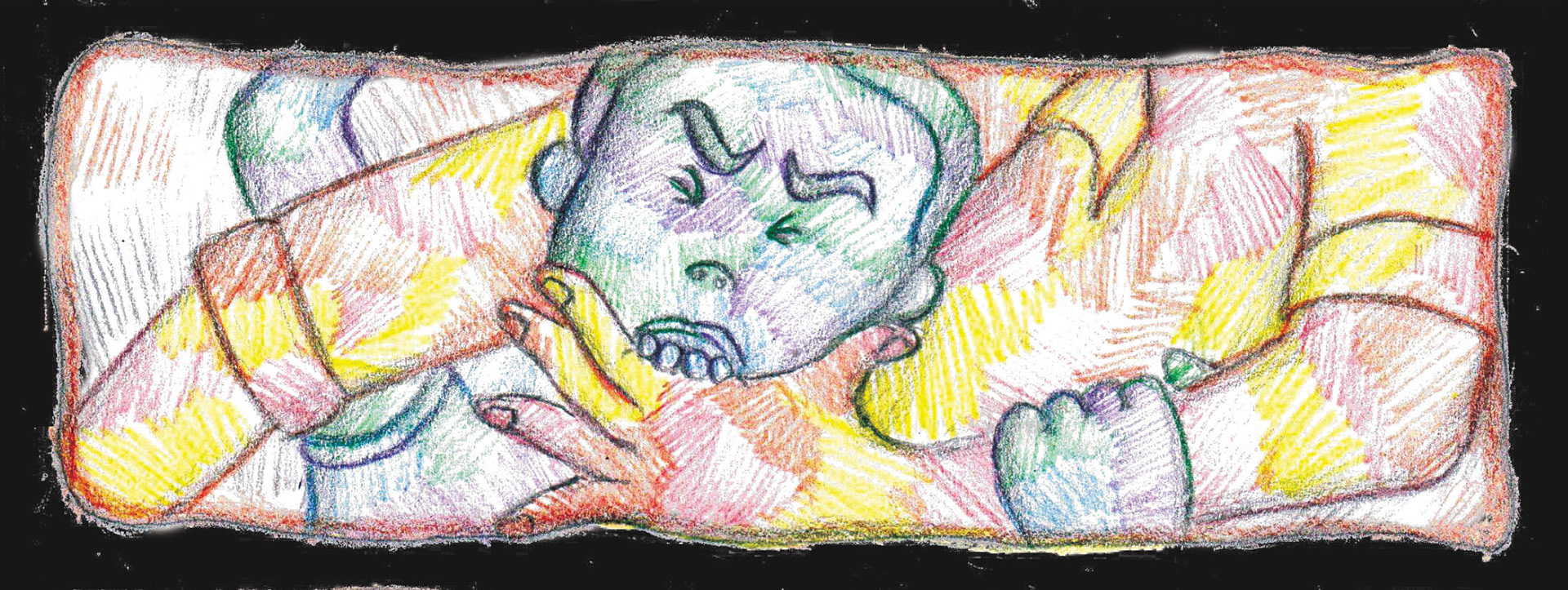
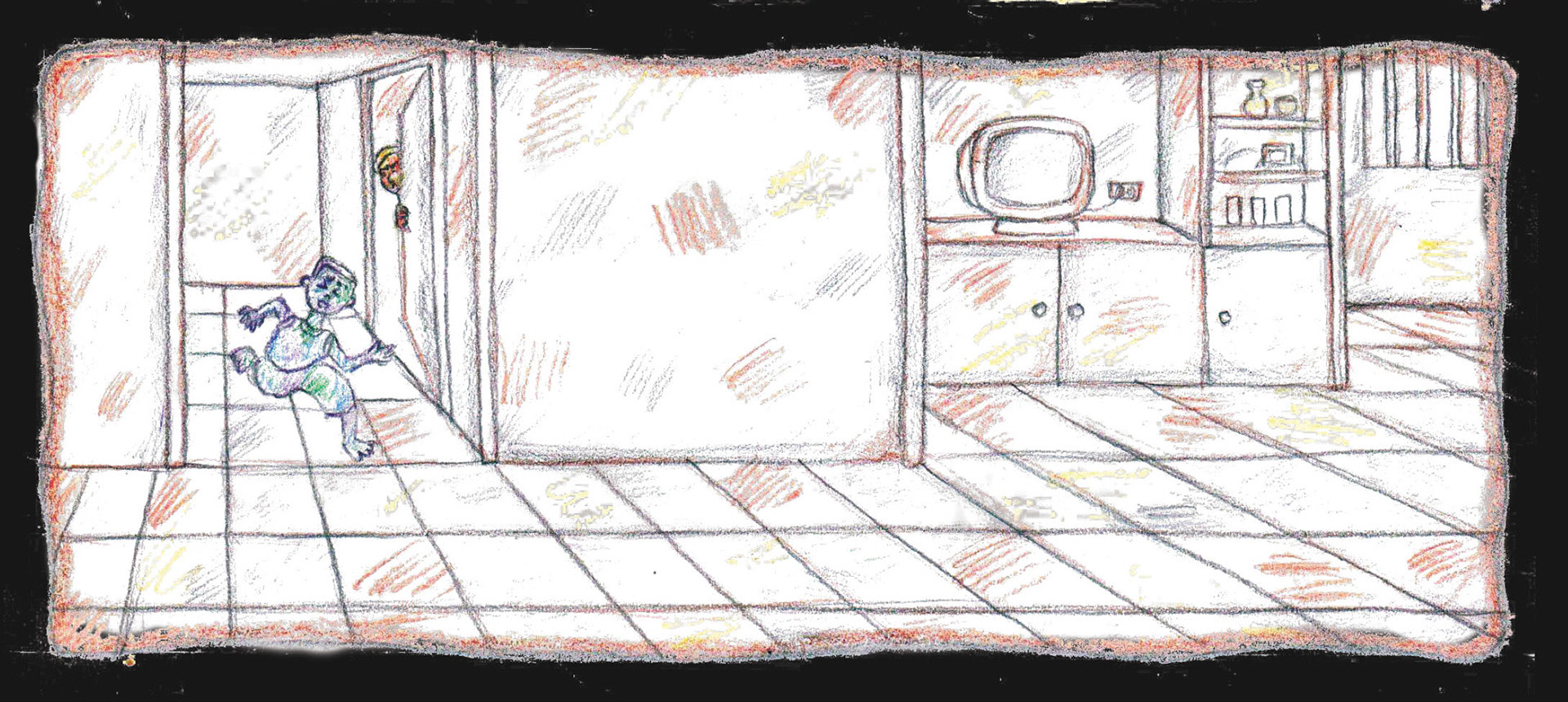
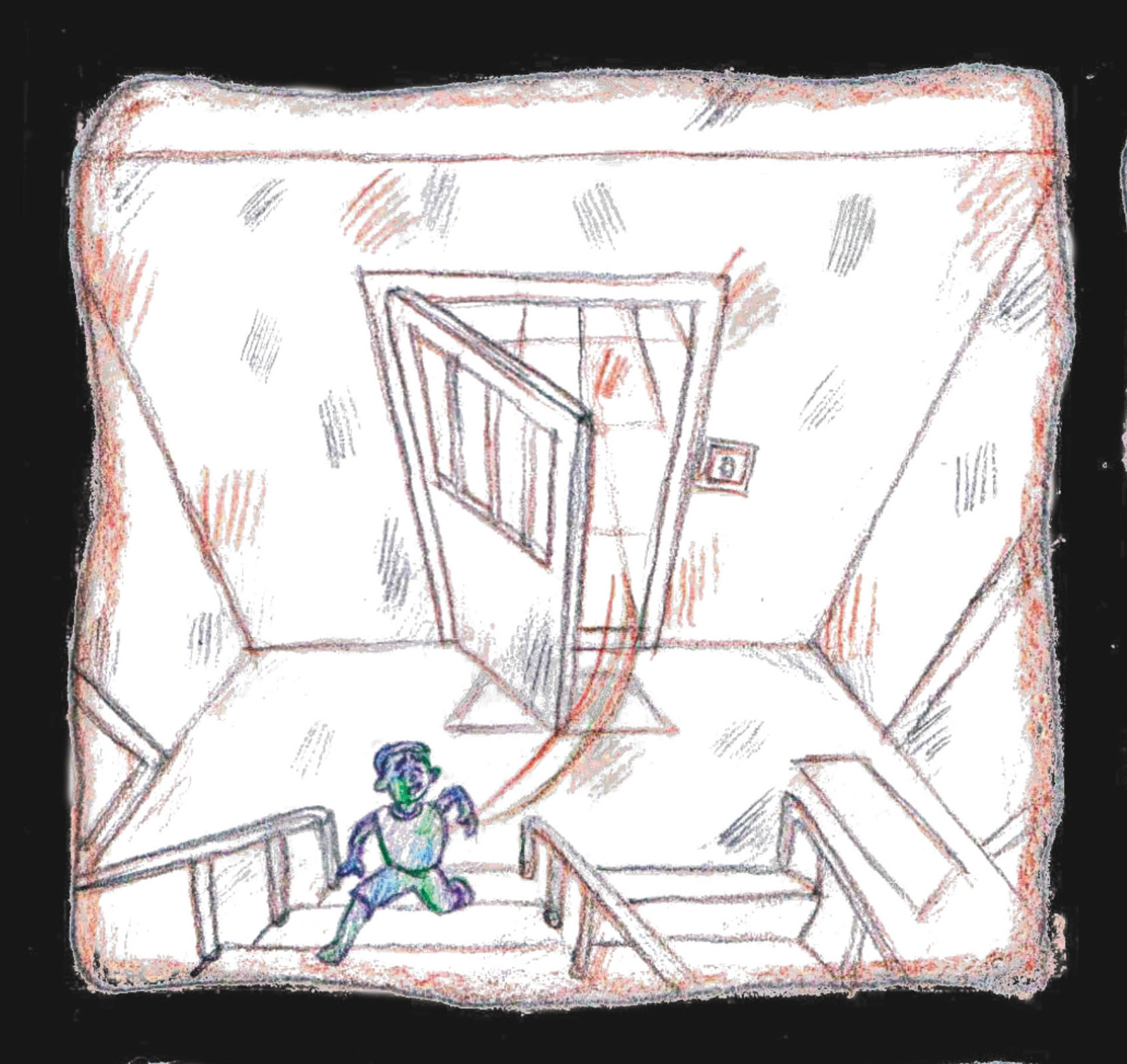
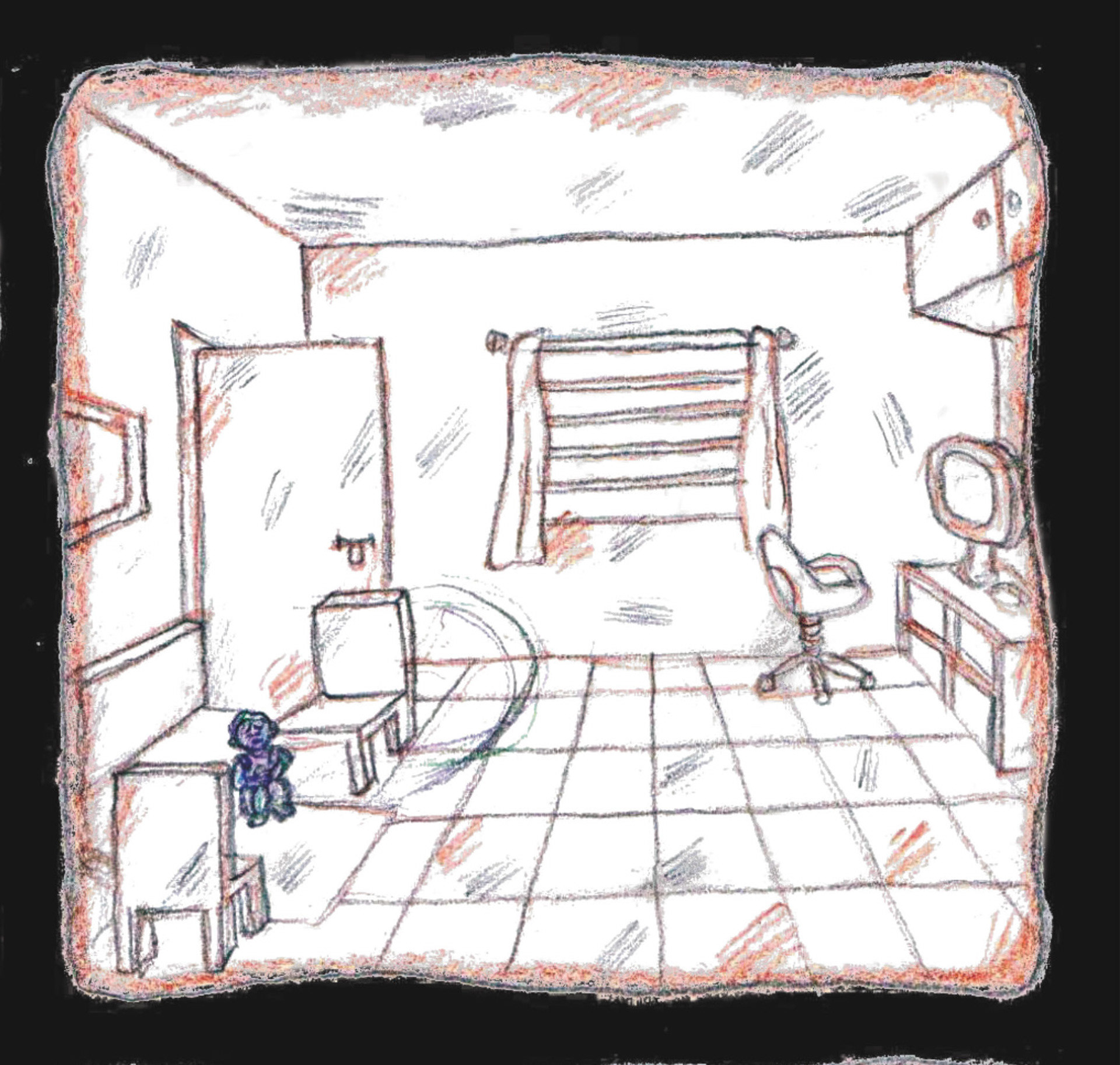
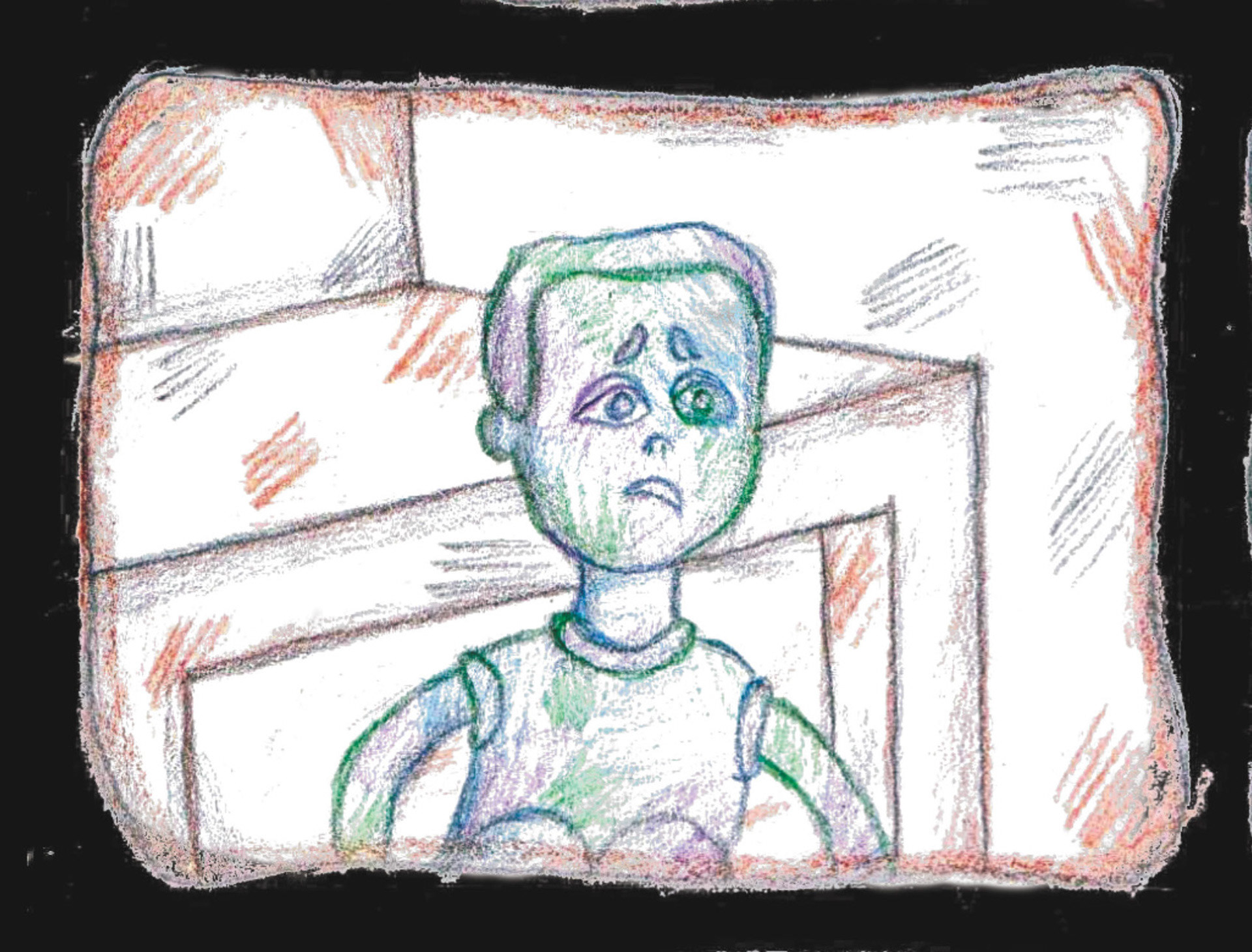
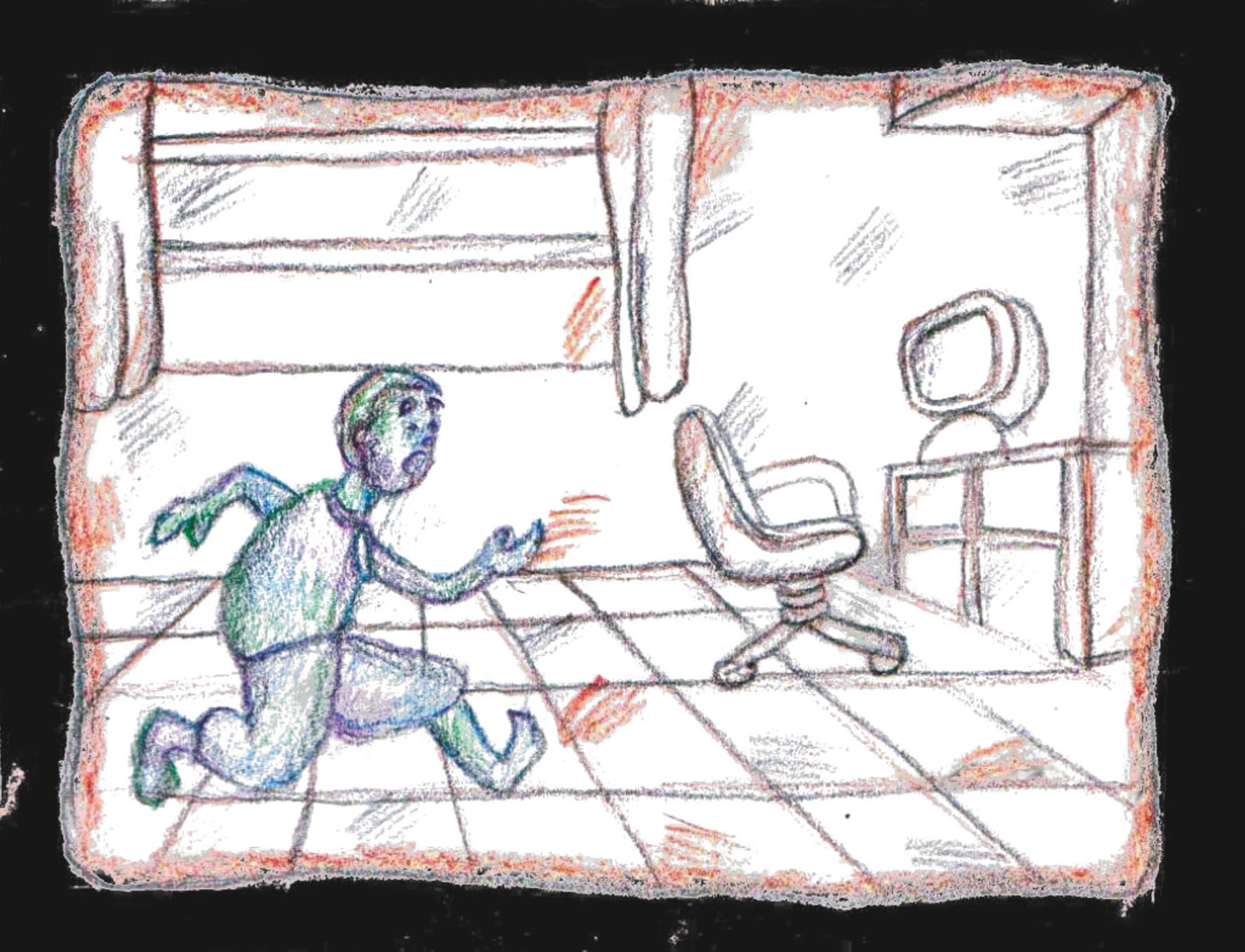
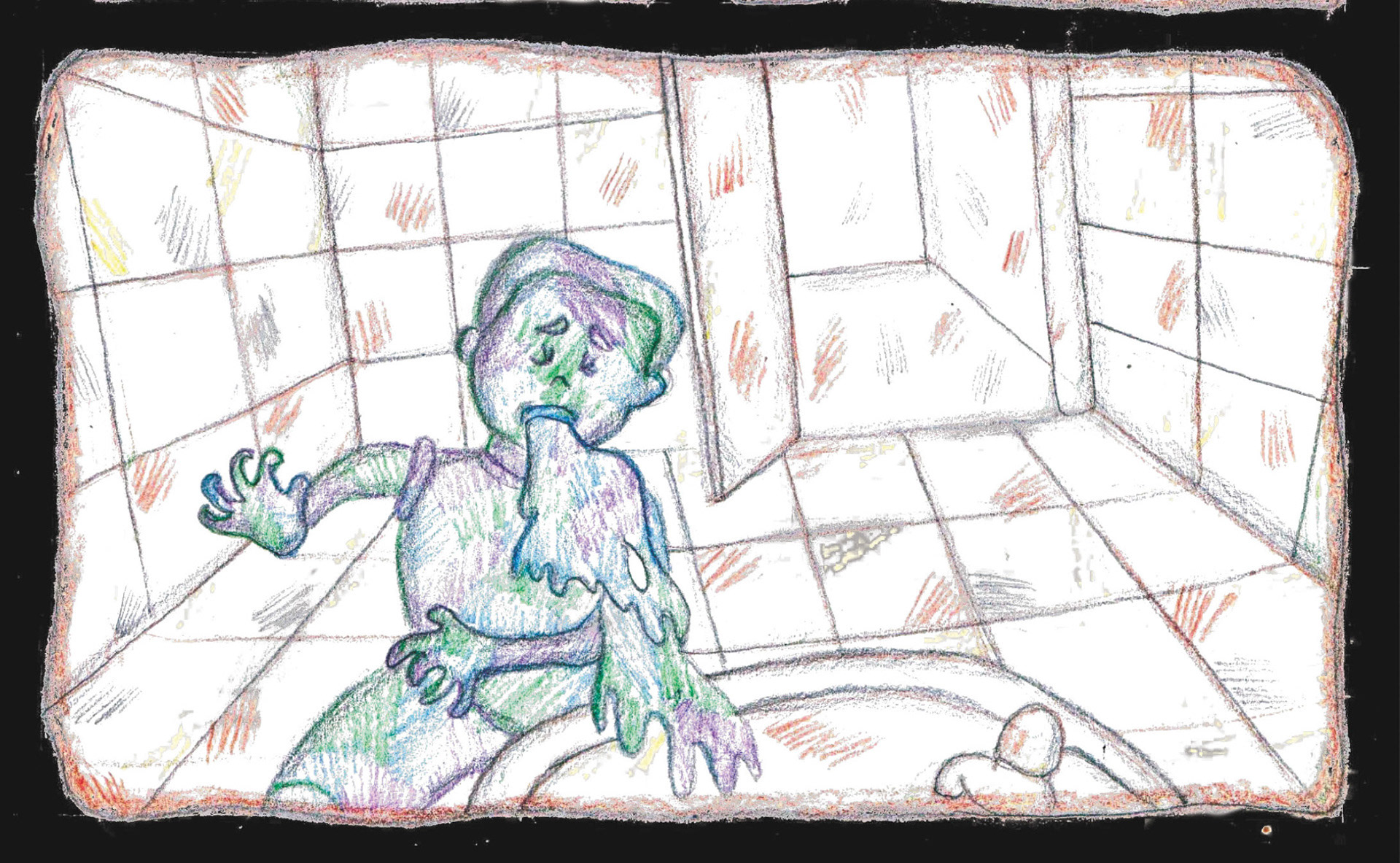
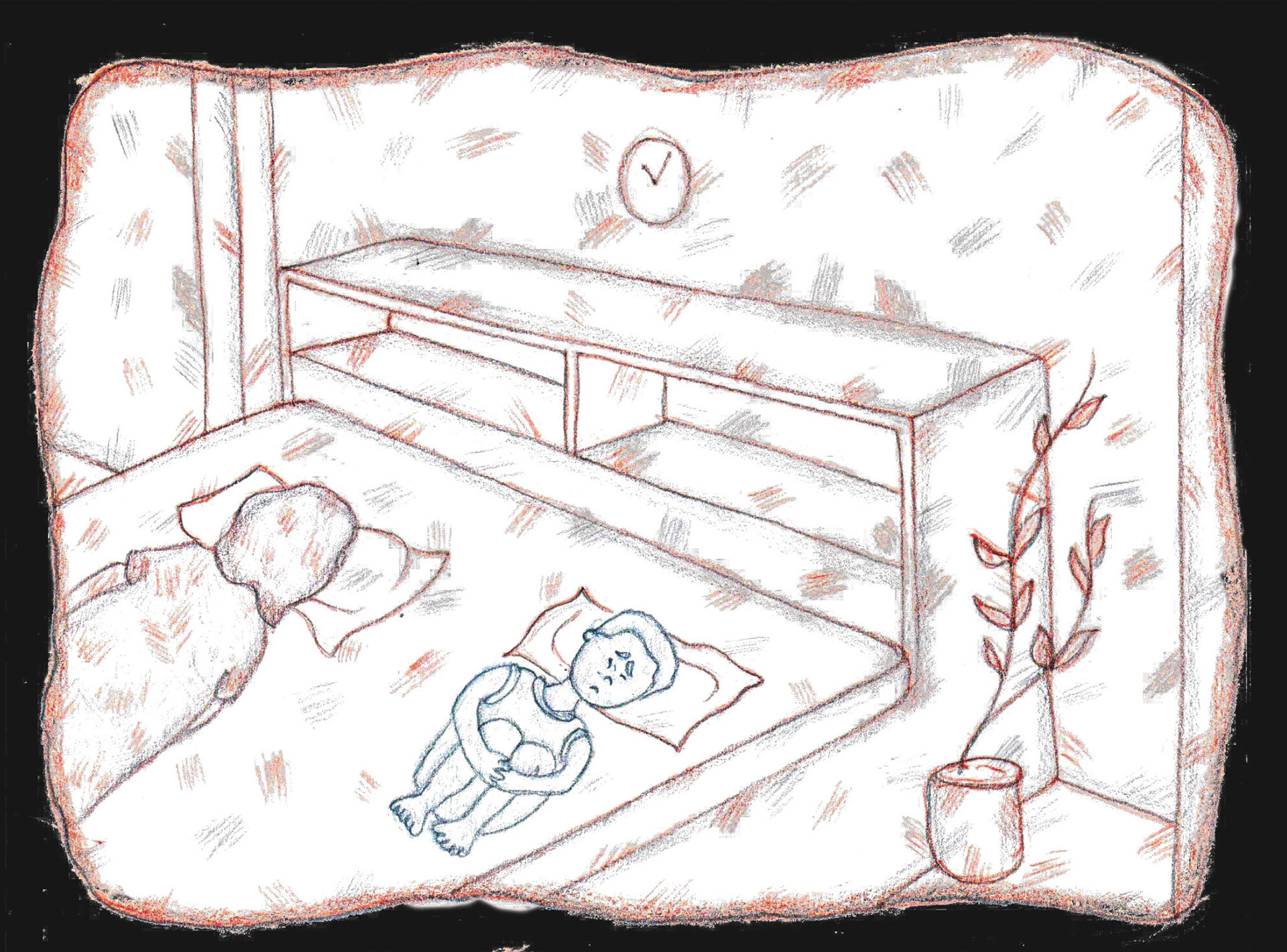
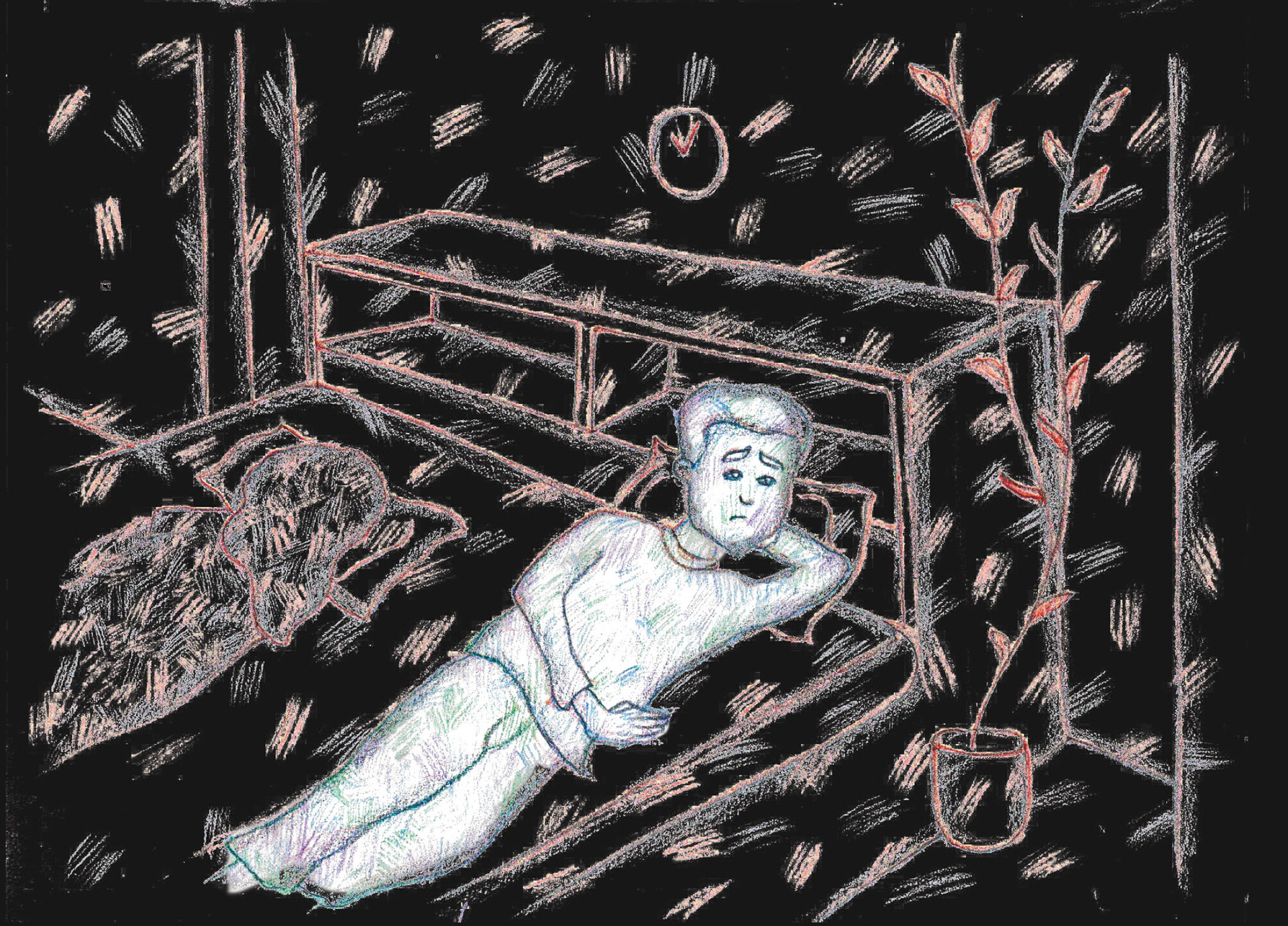
Grayscale version

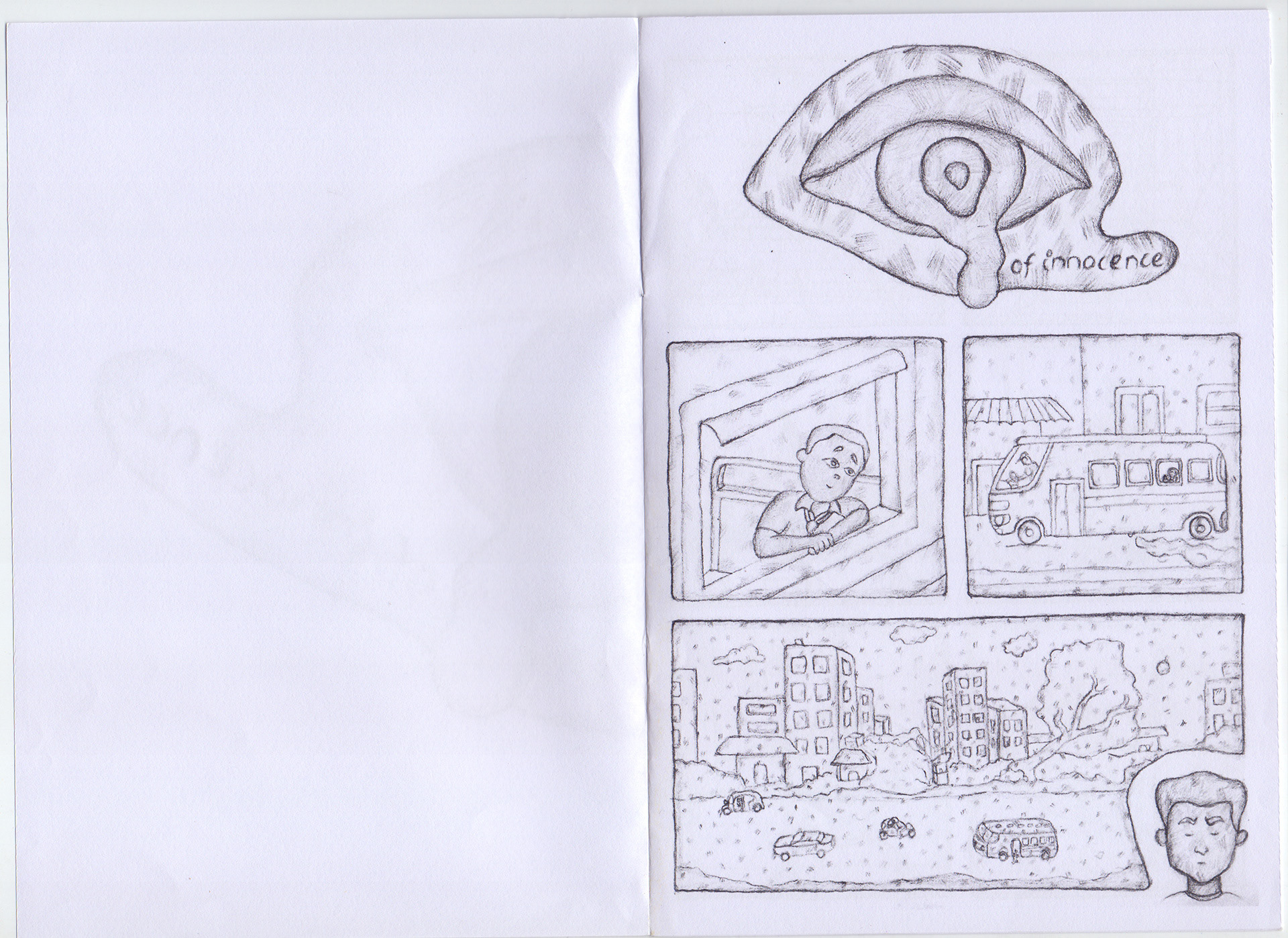


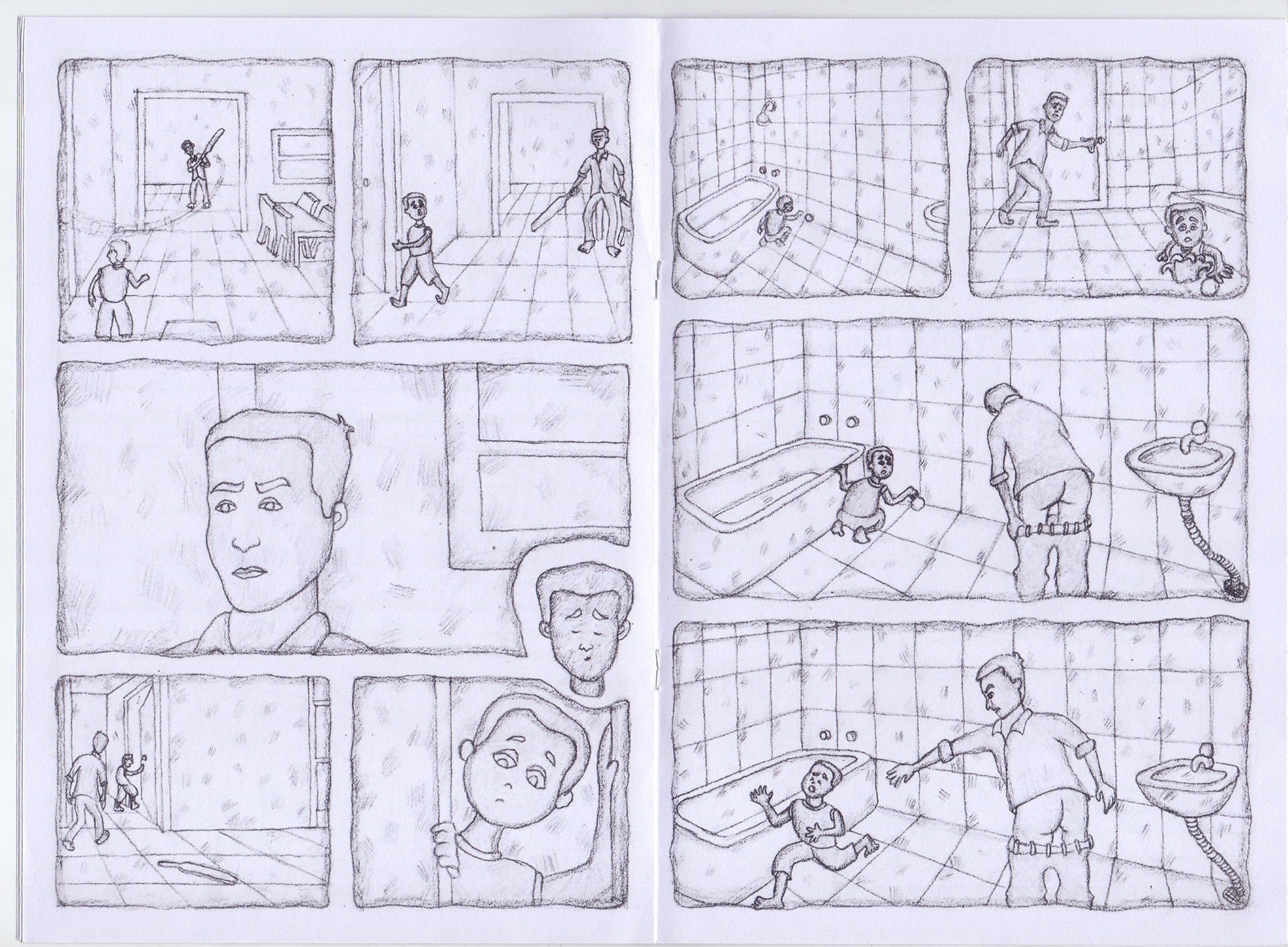
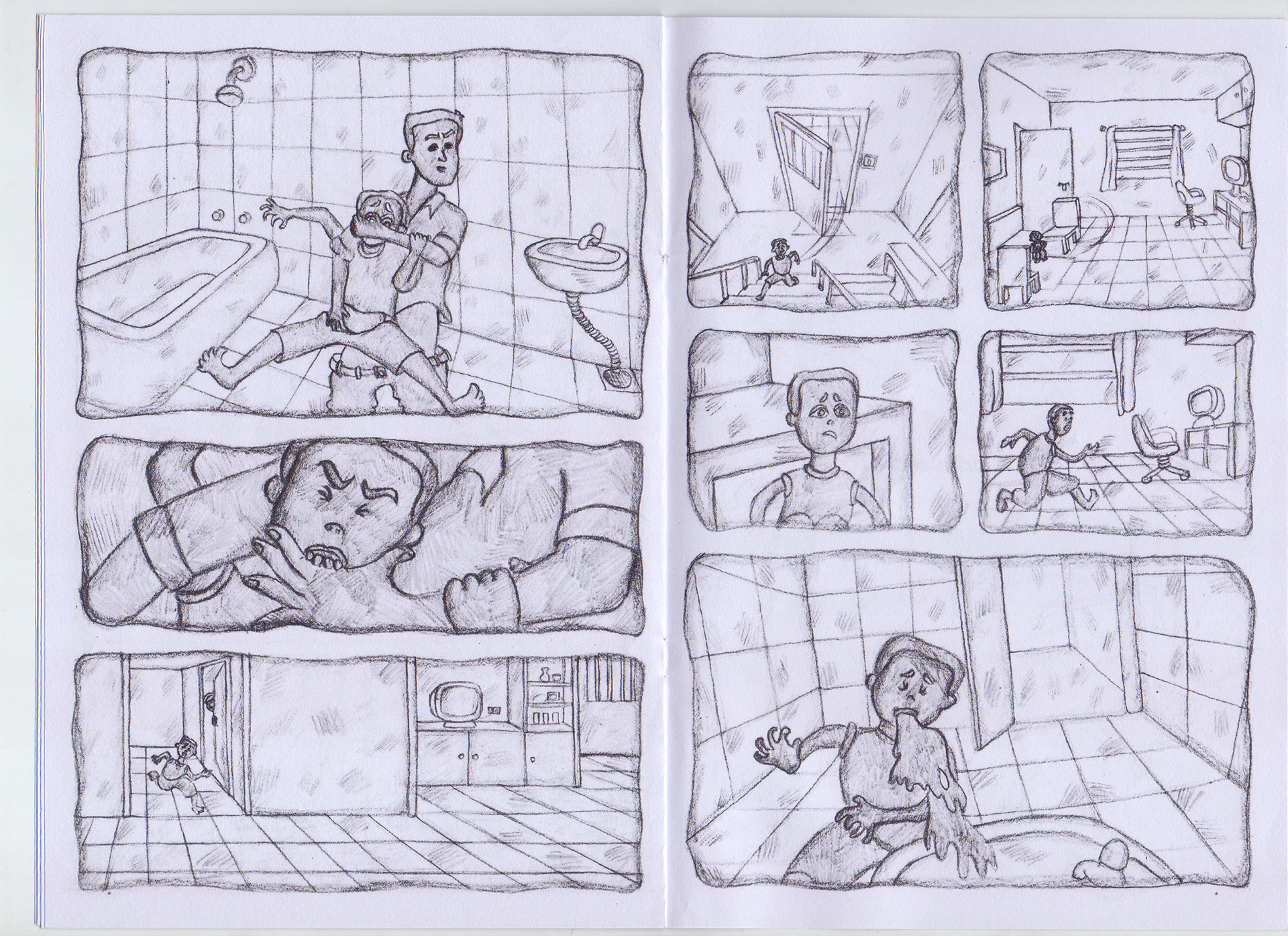
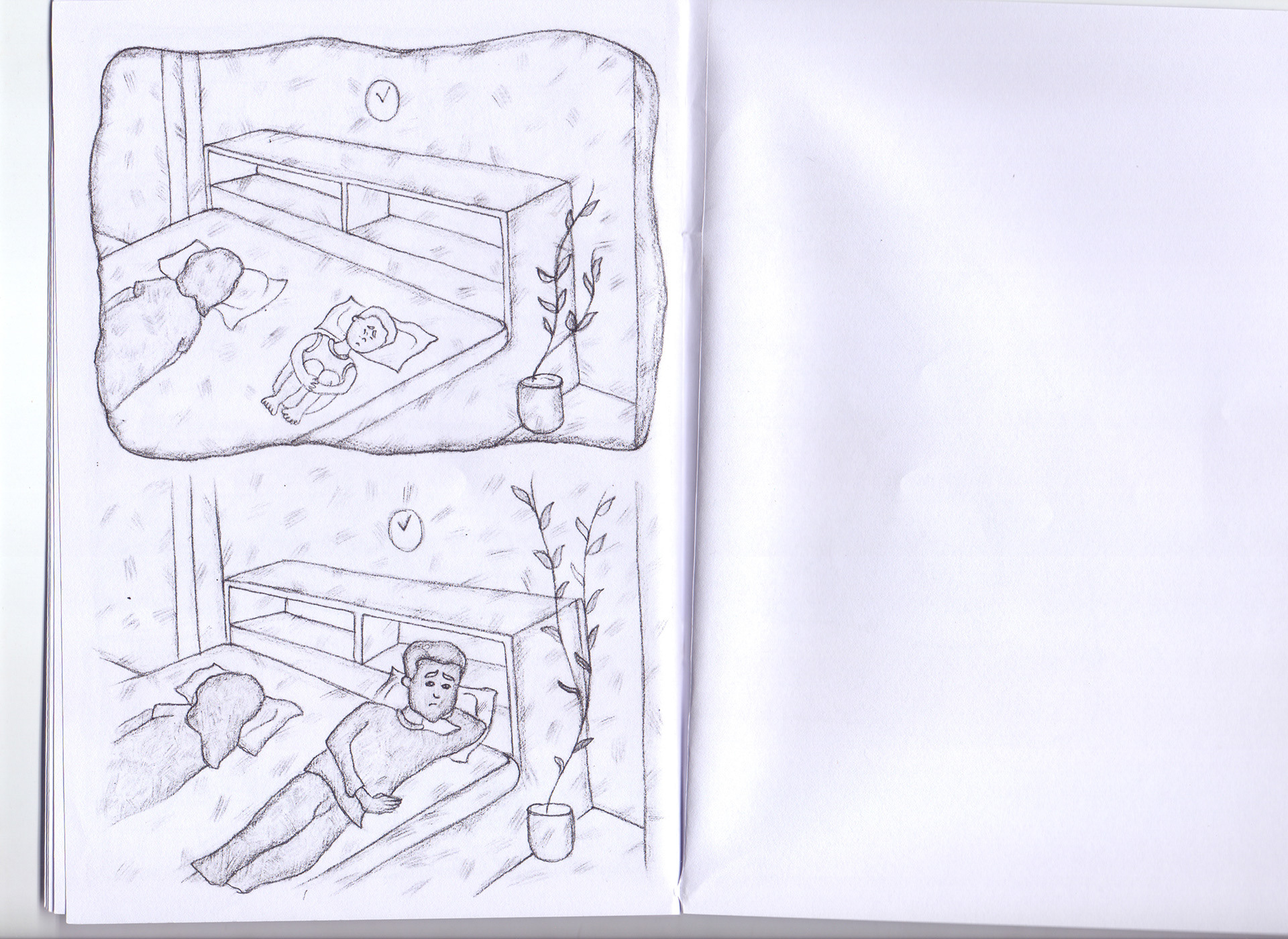
Iteration on a transparent sheet of paper, to represent the nature of memories
